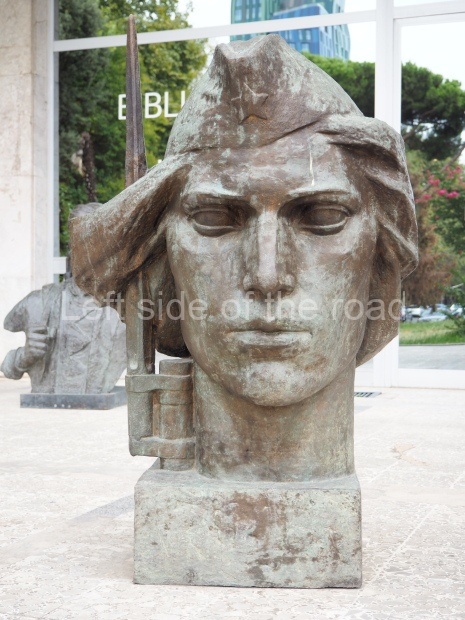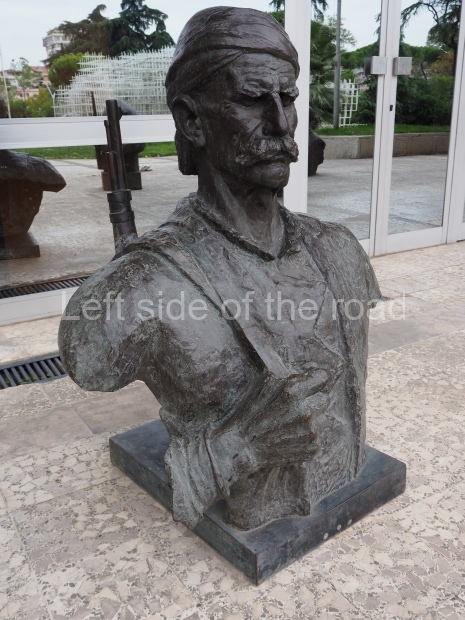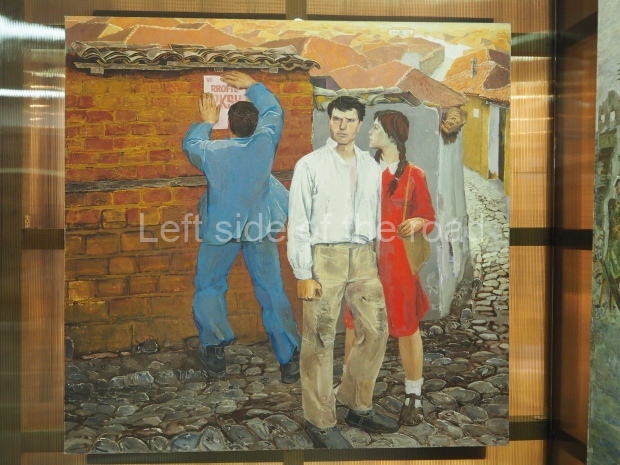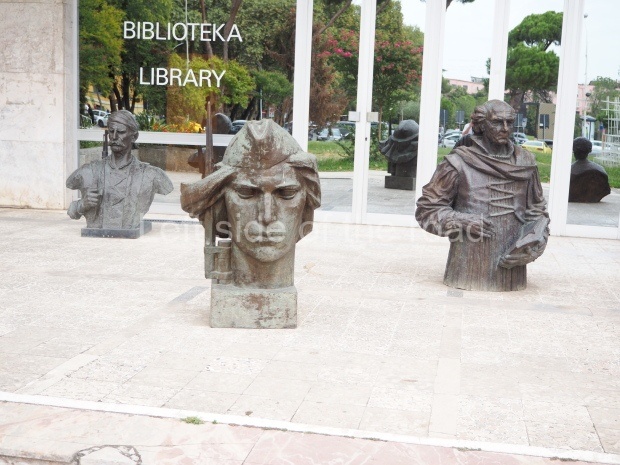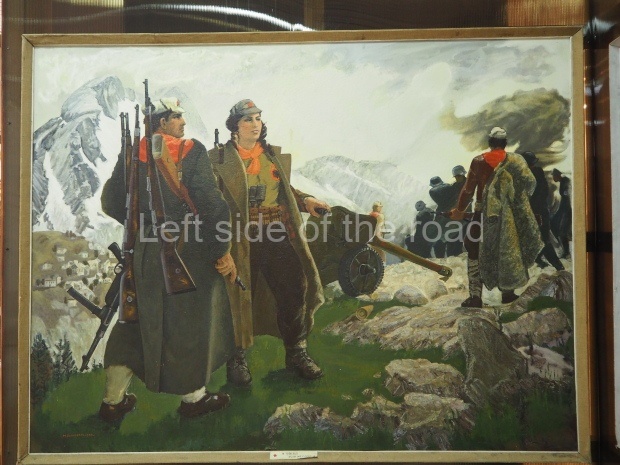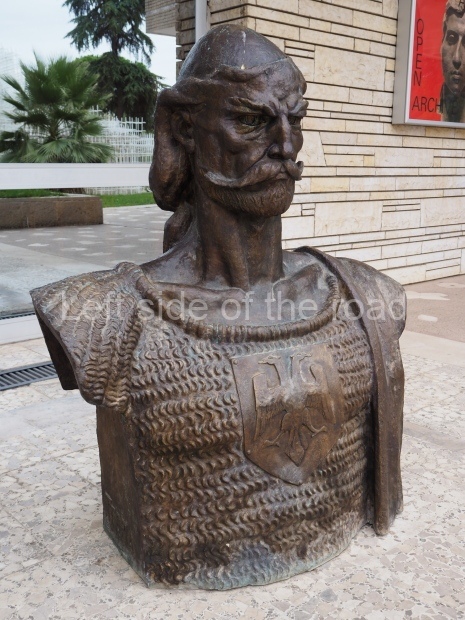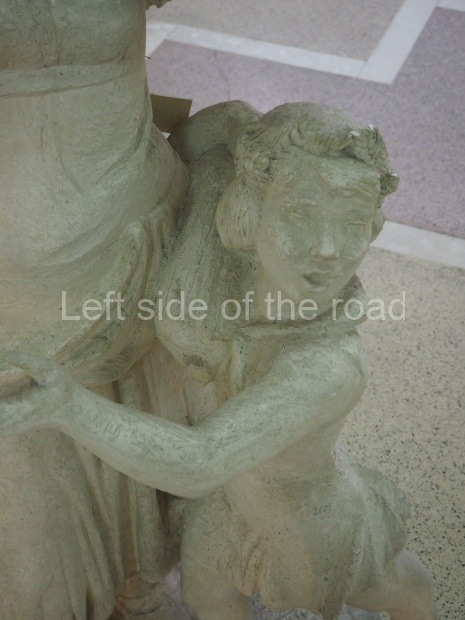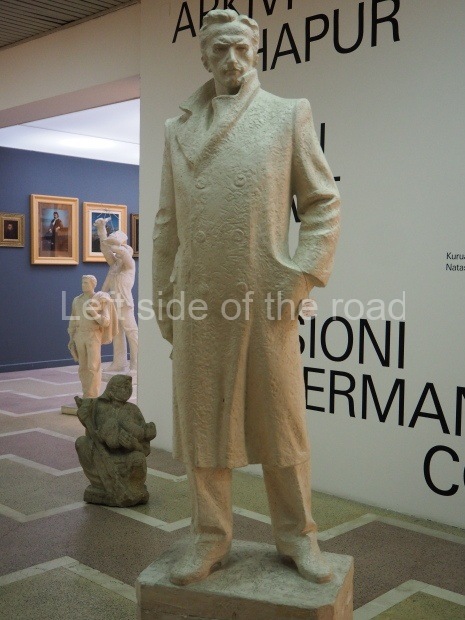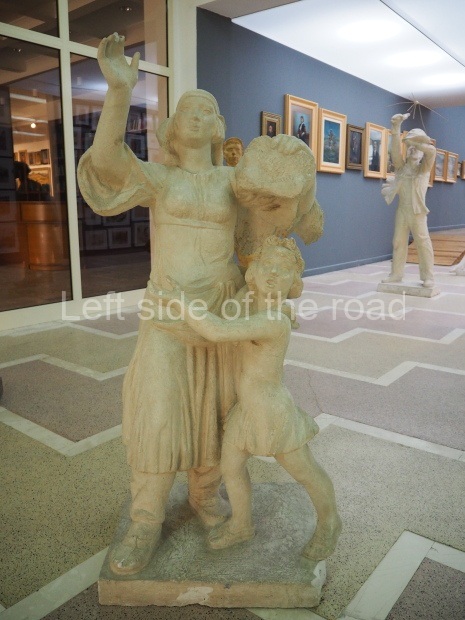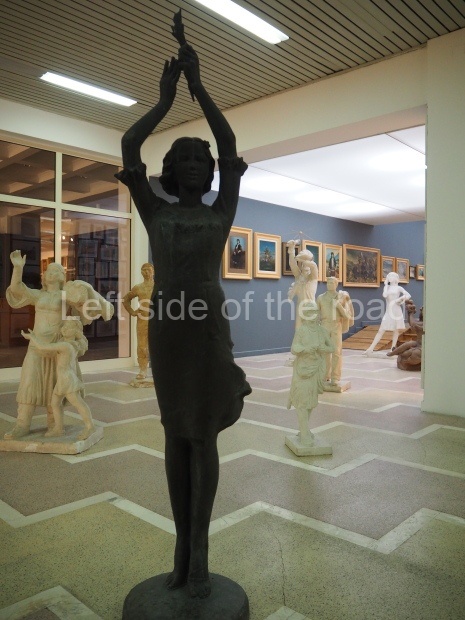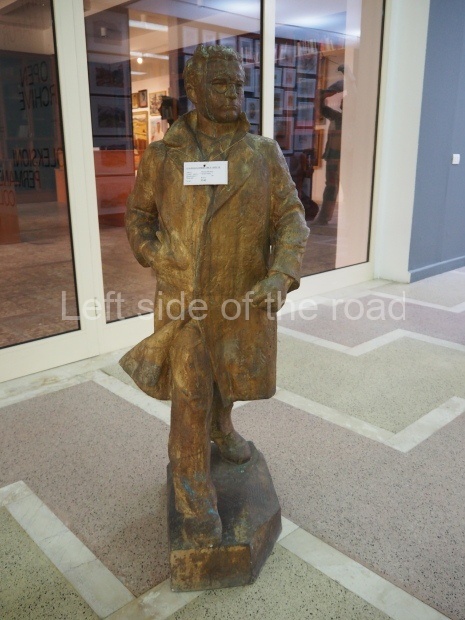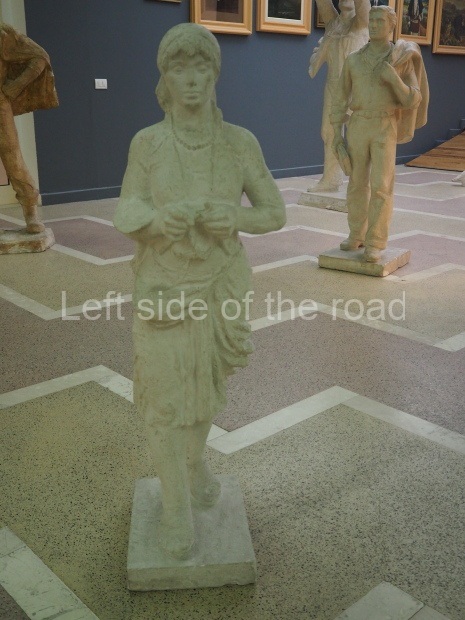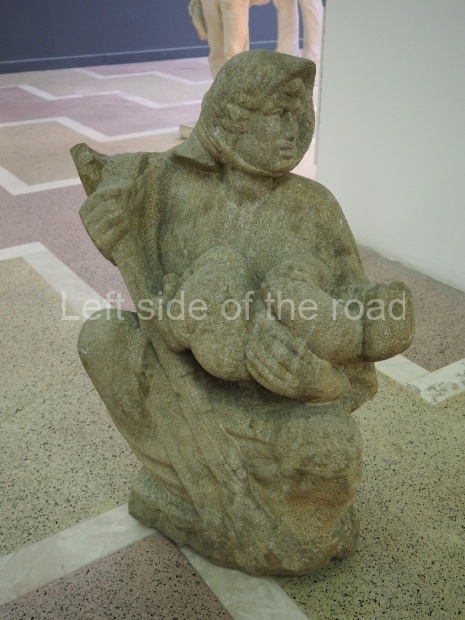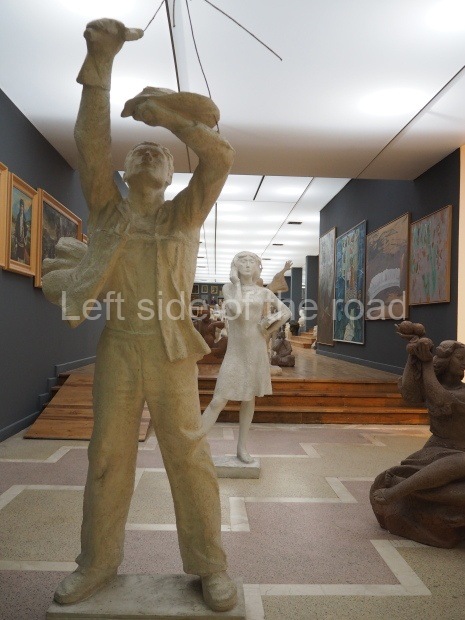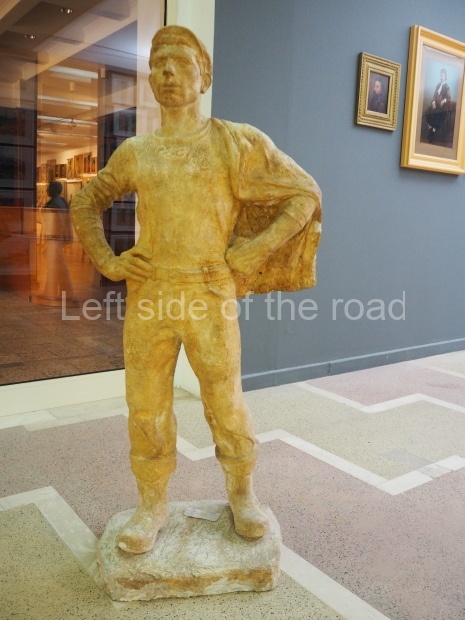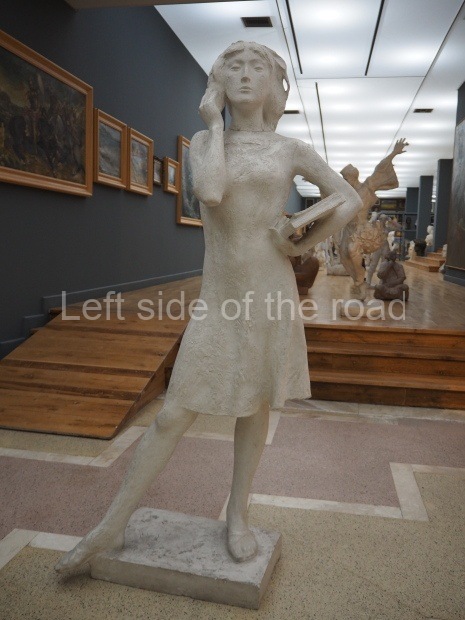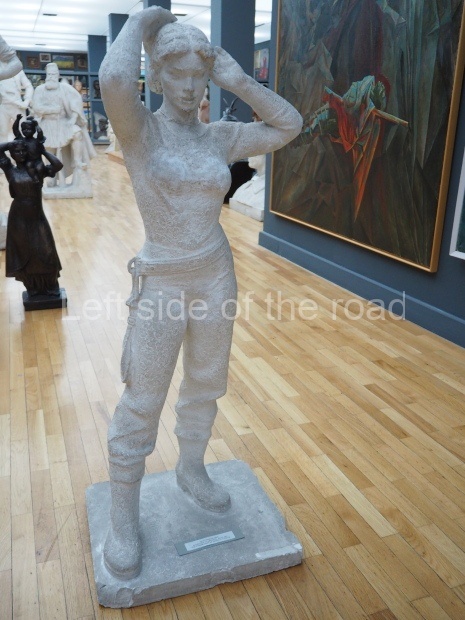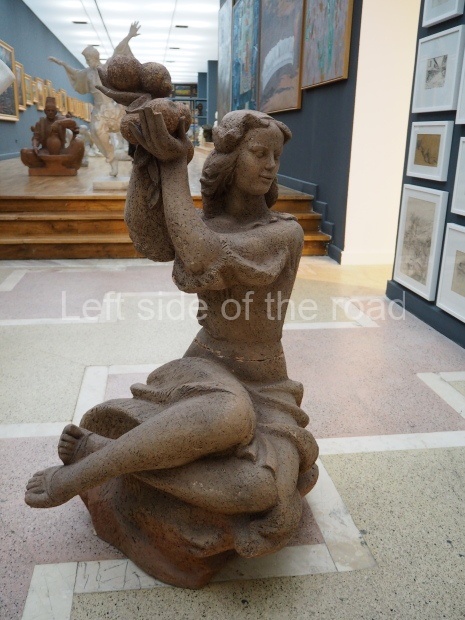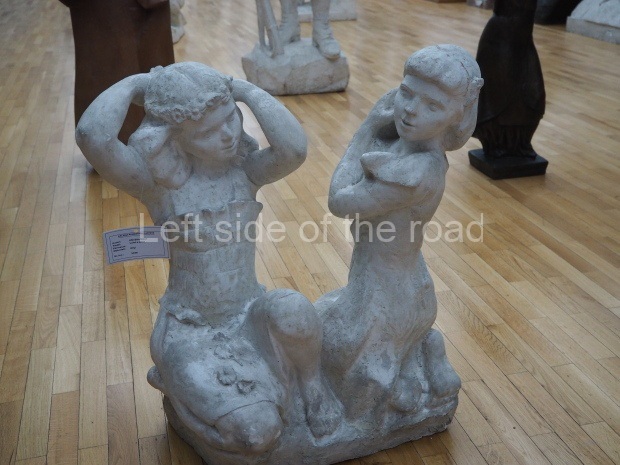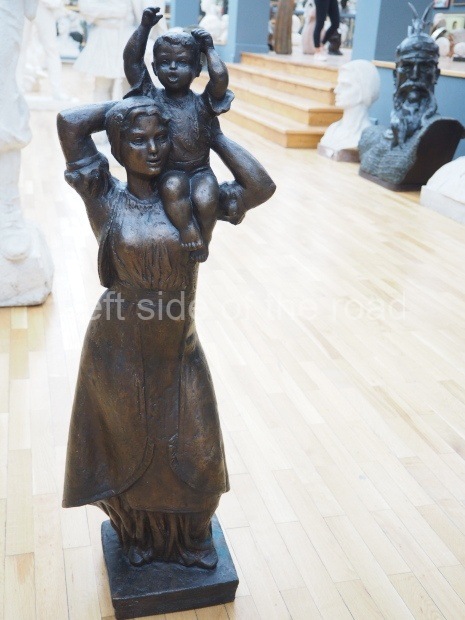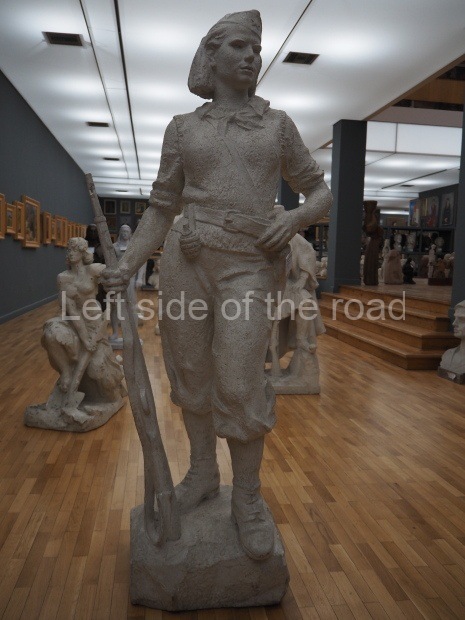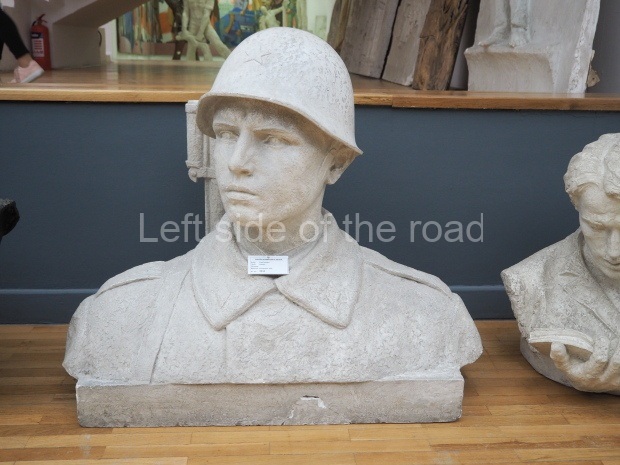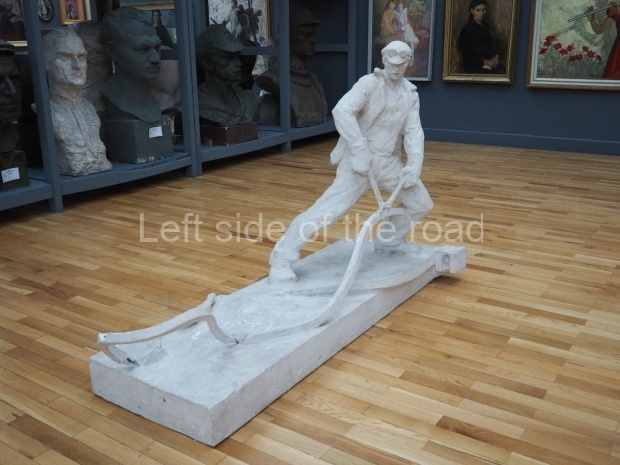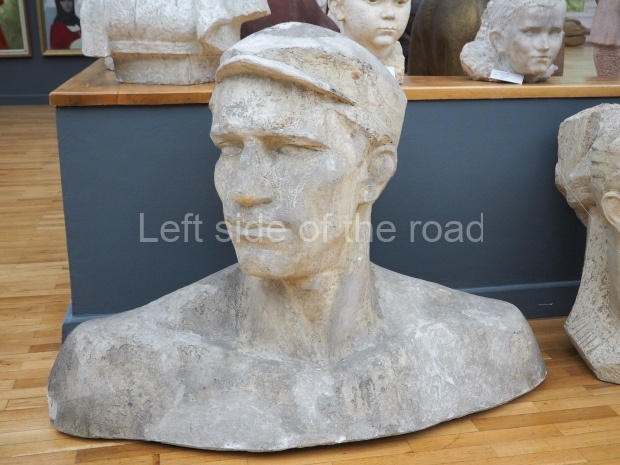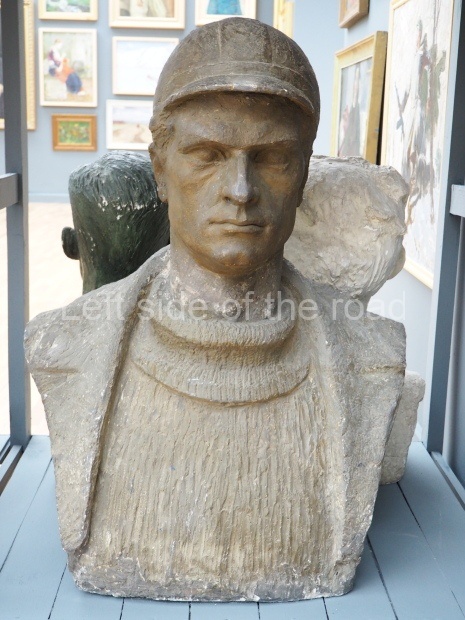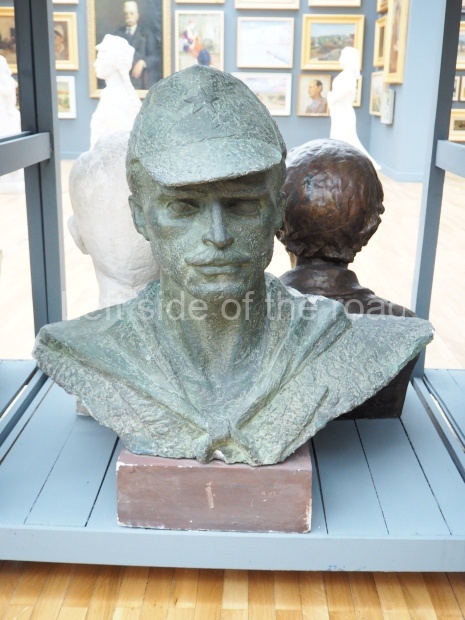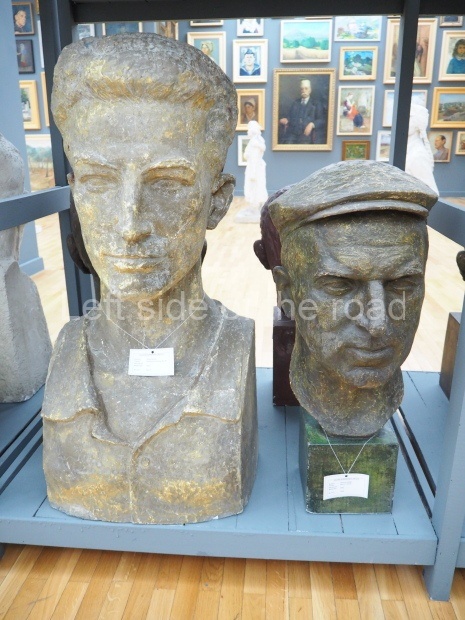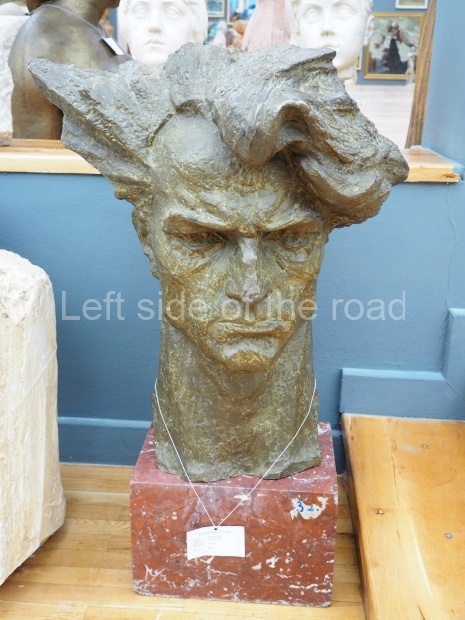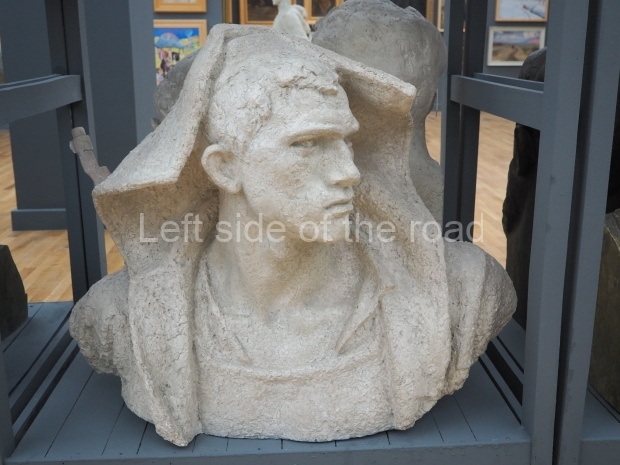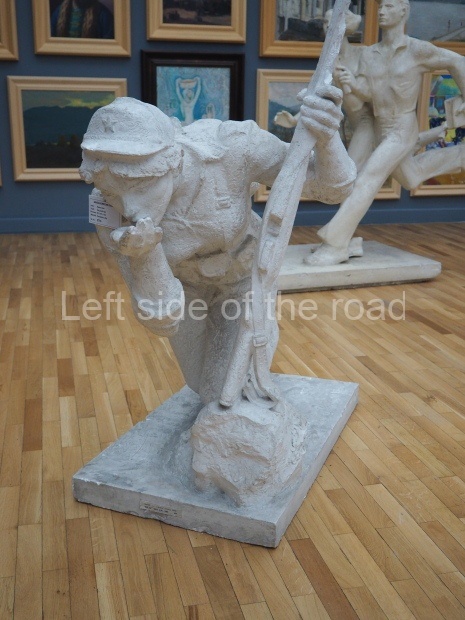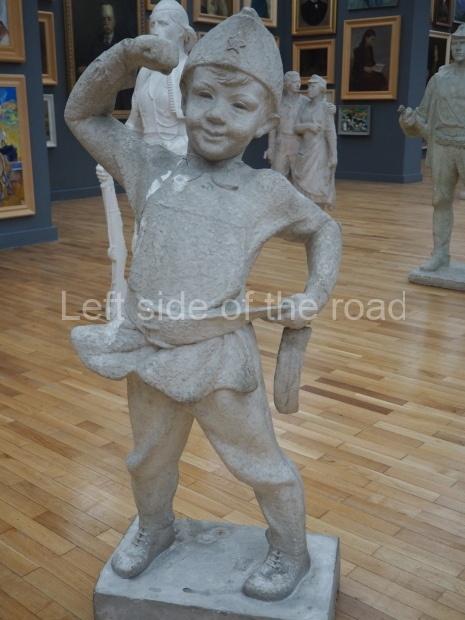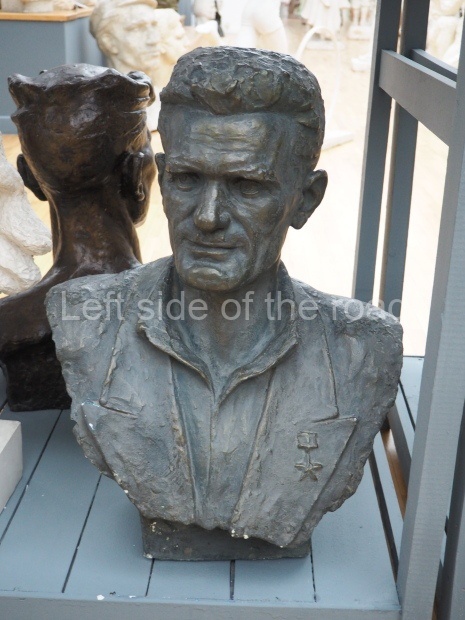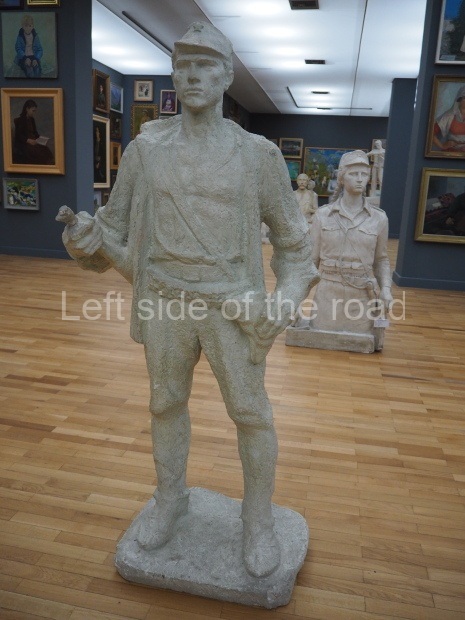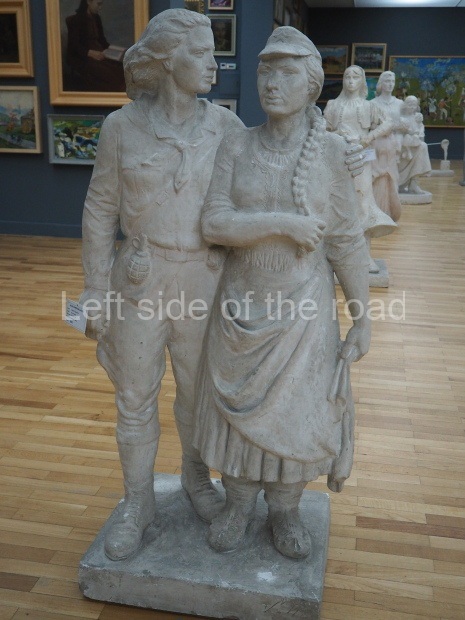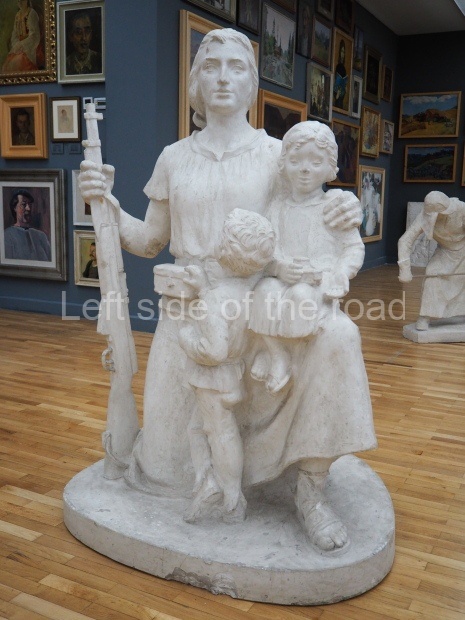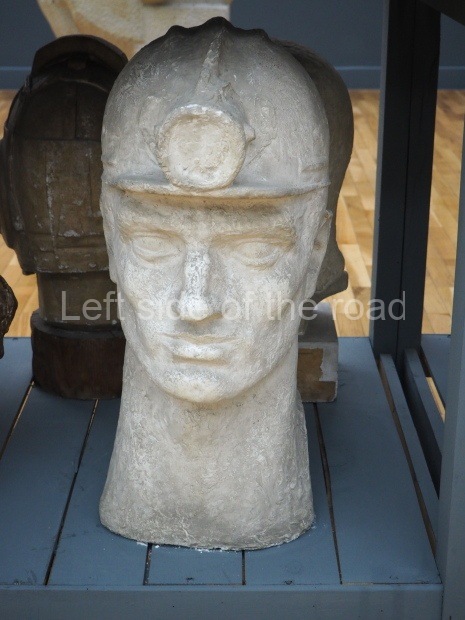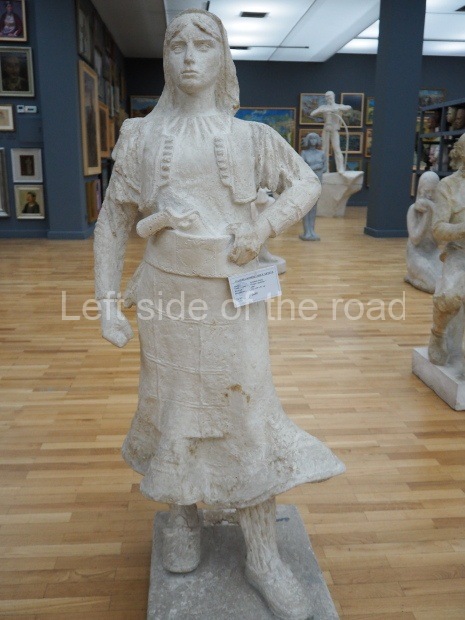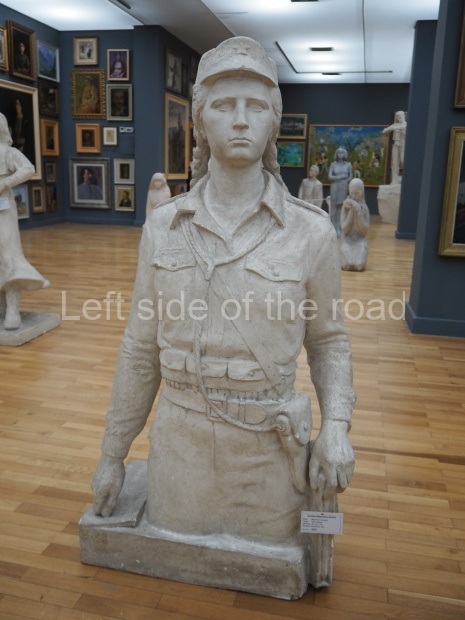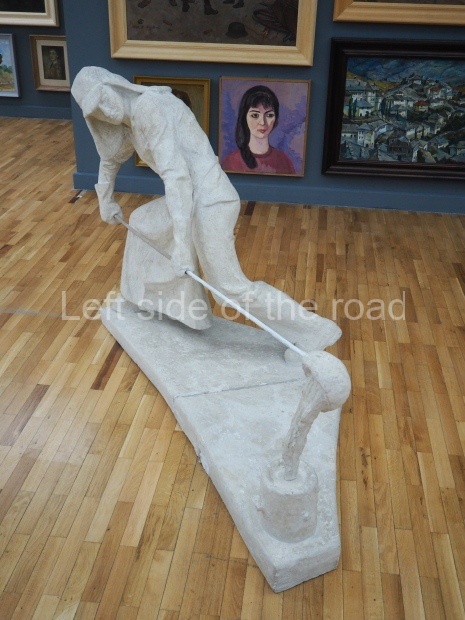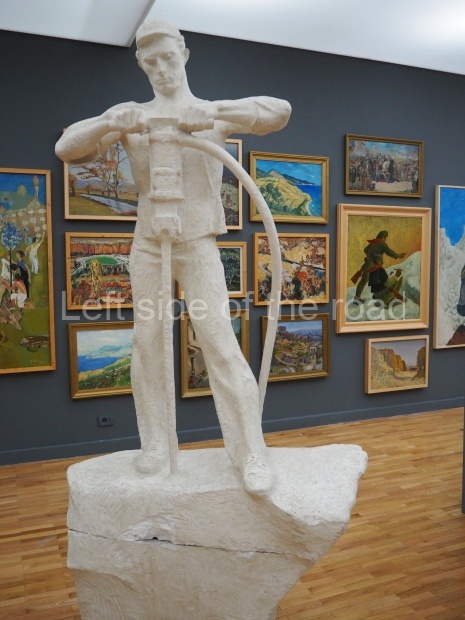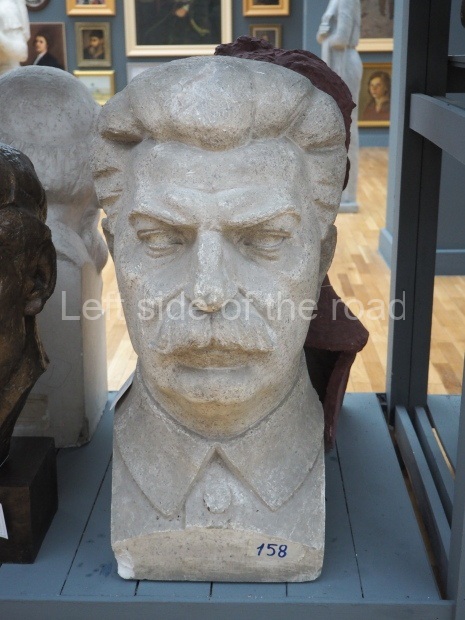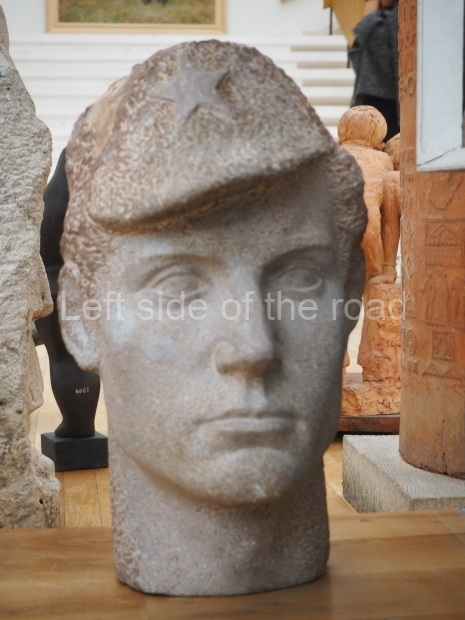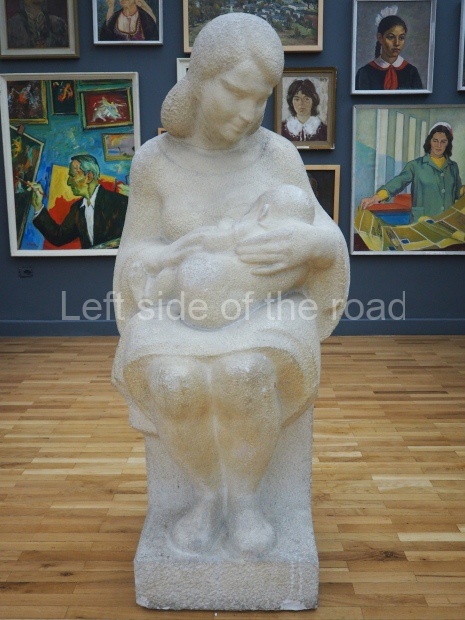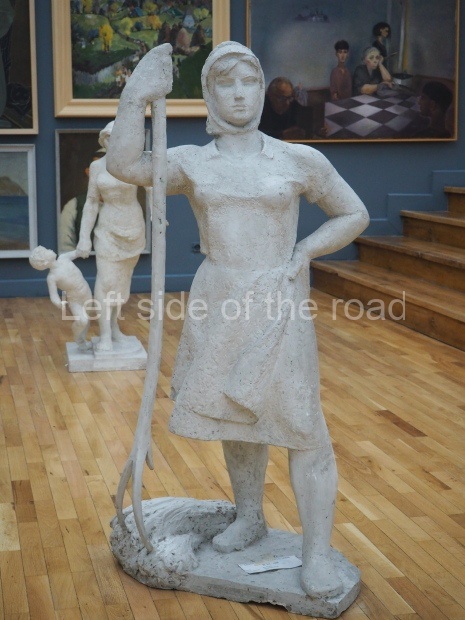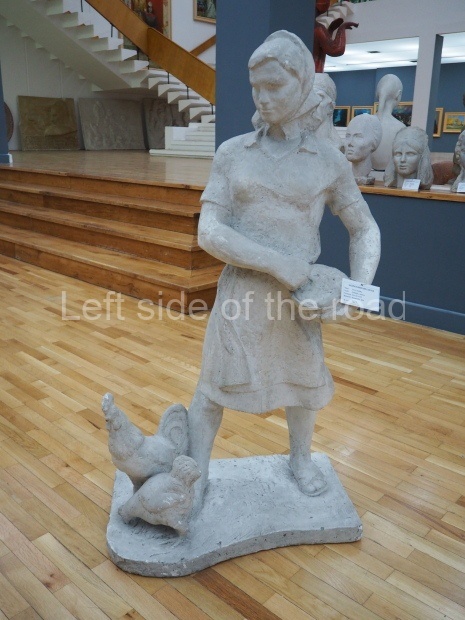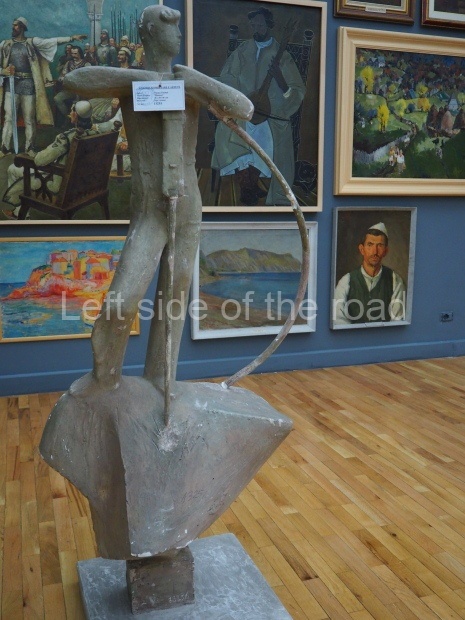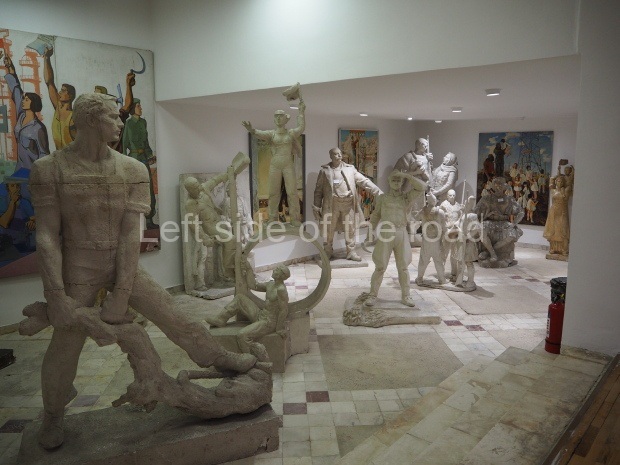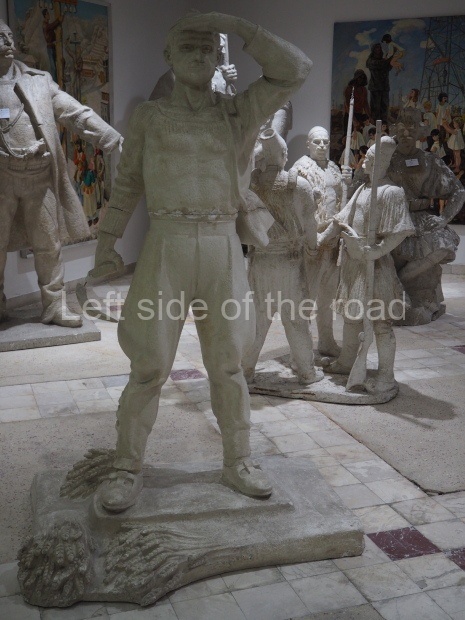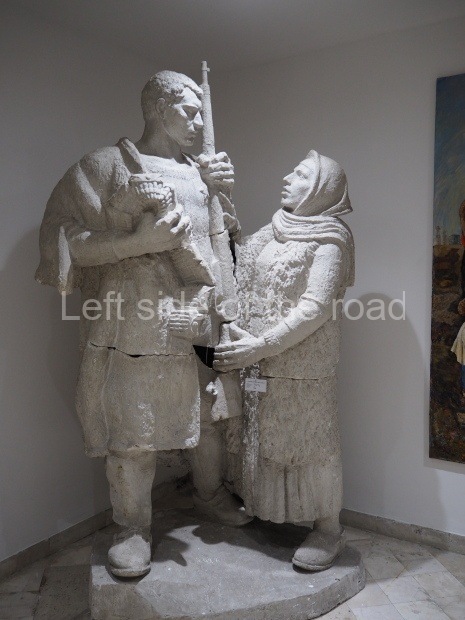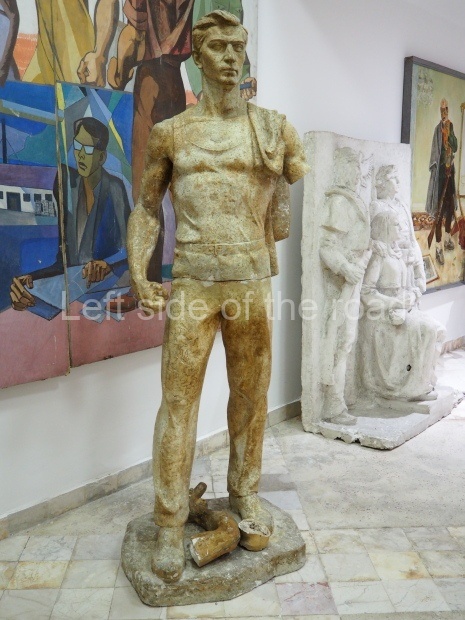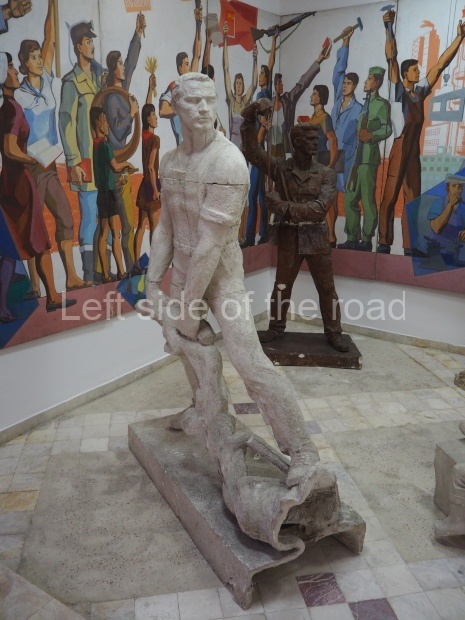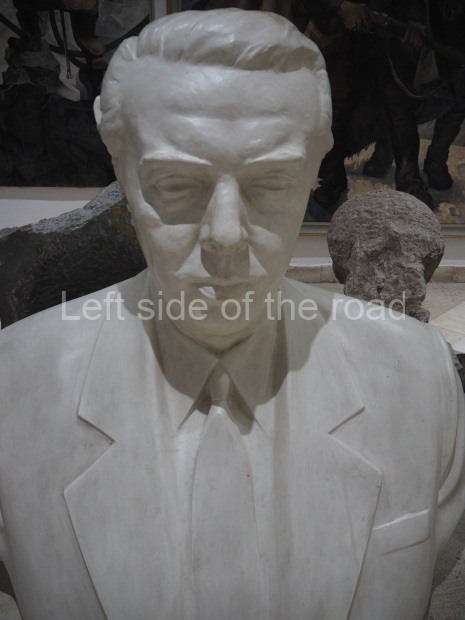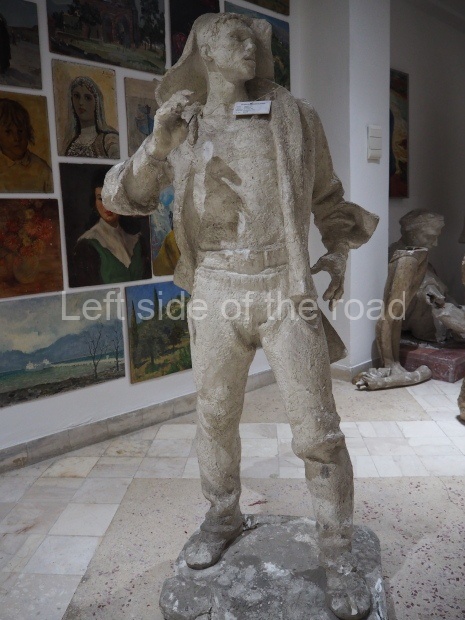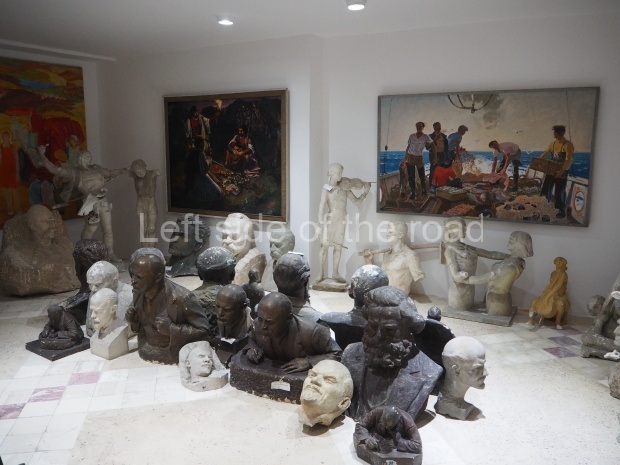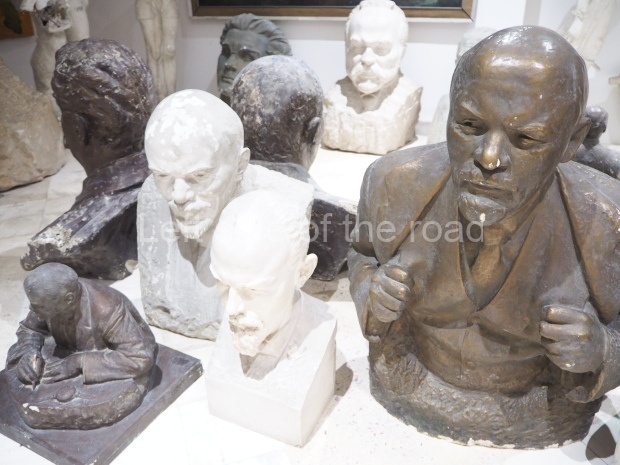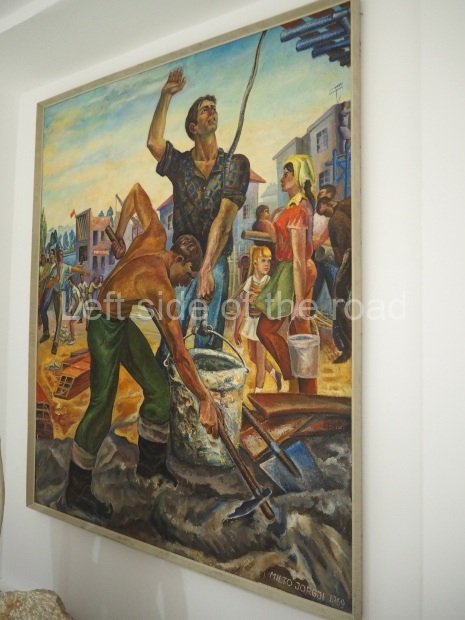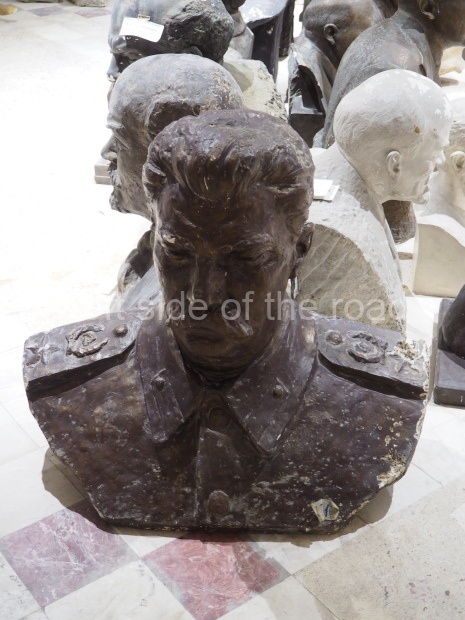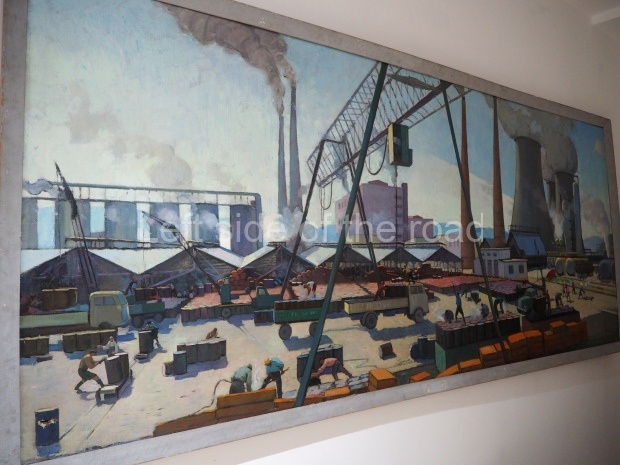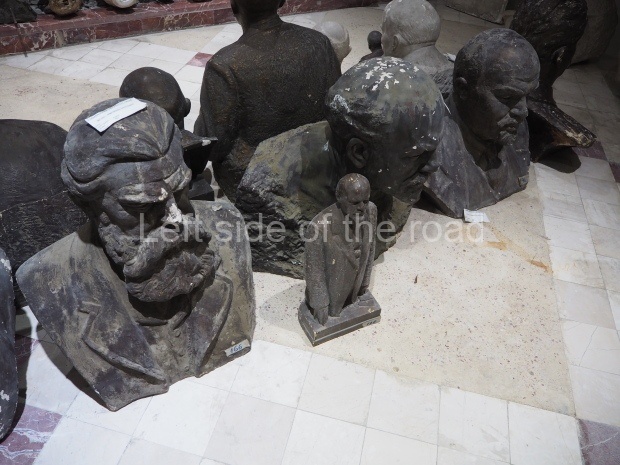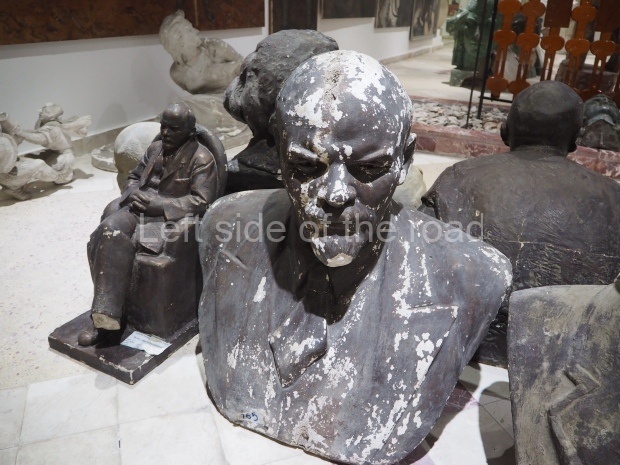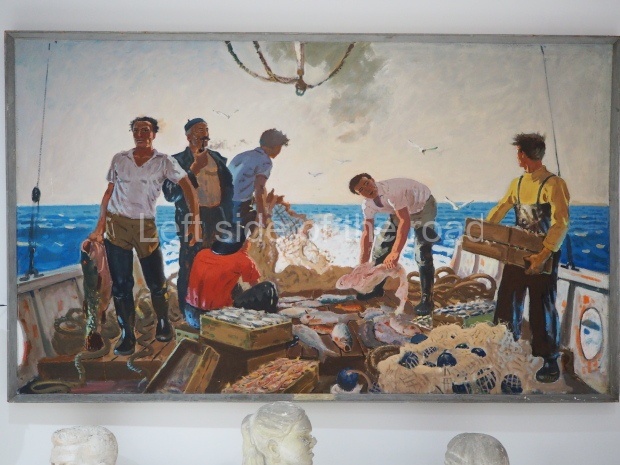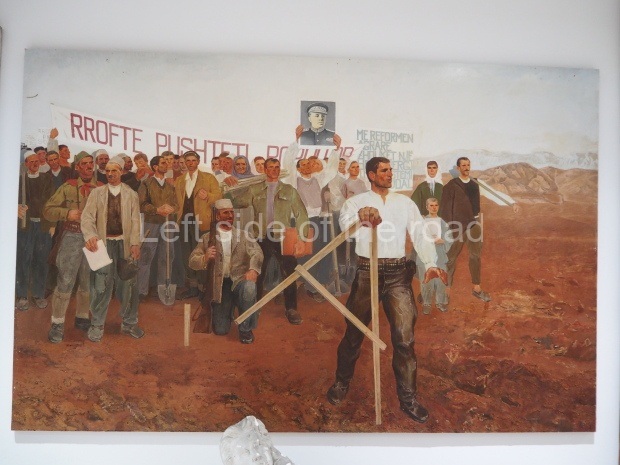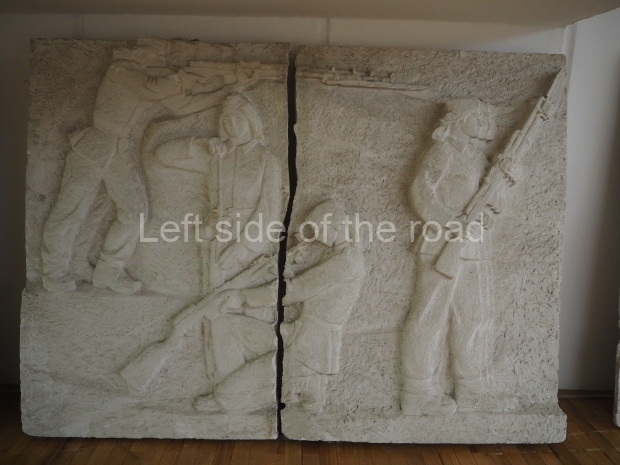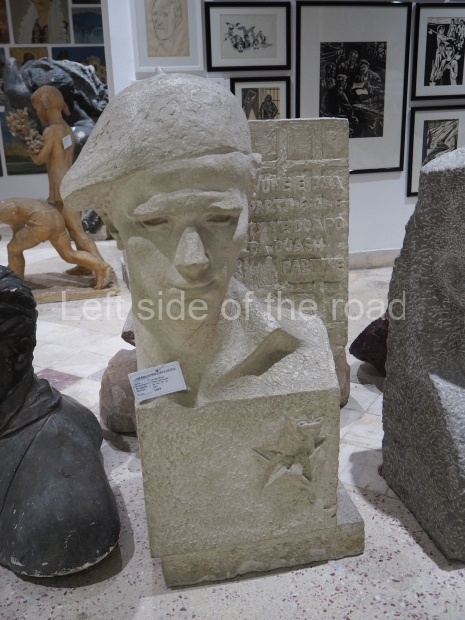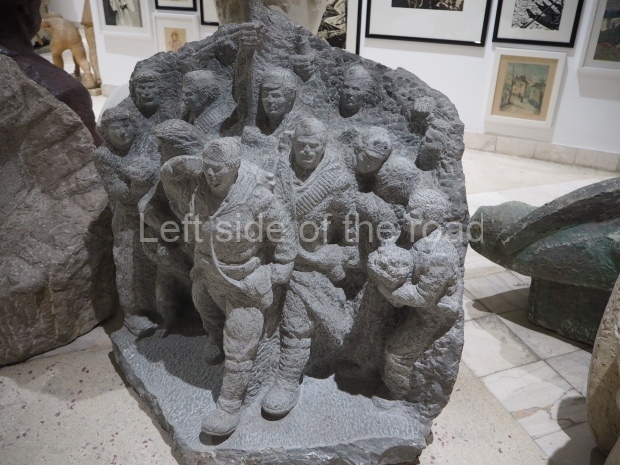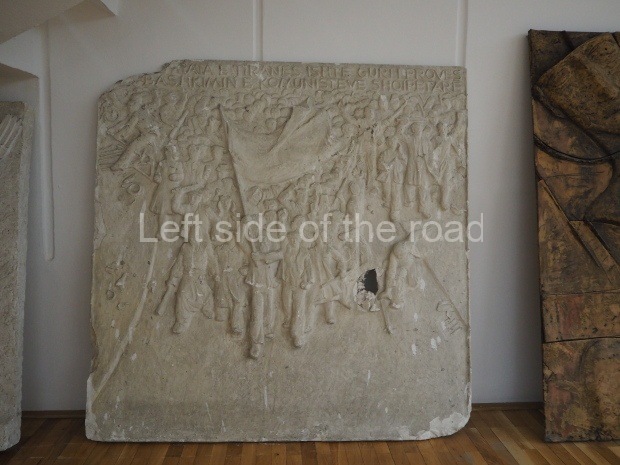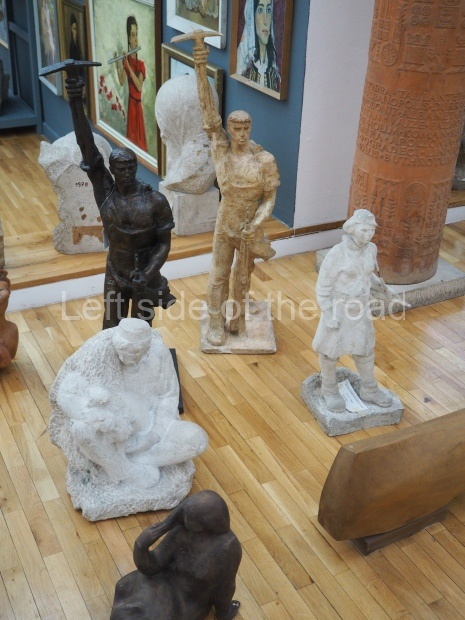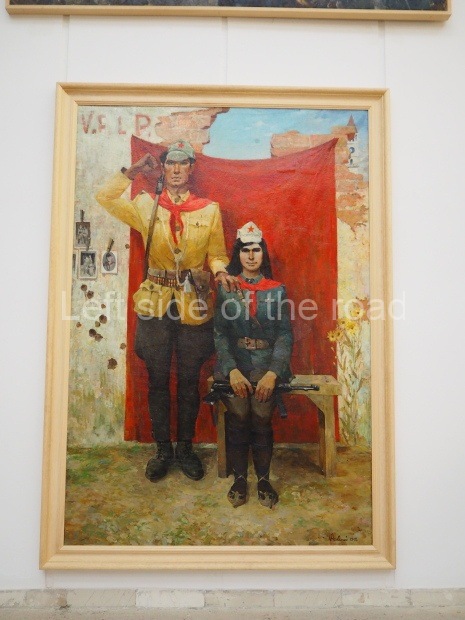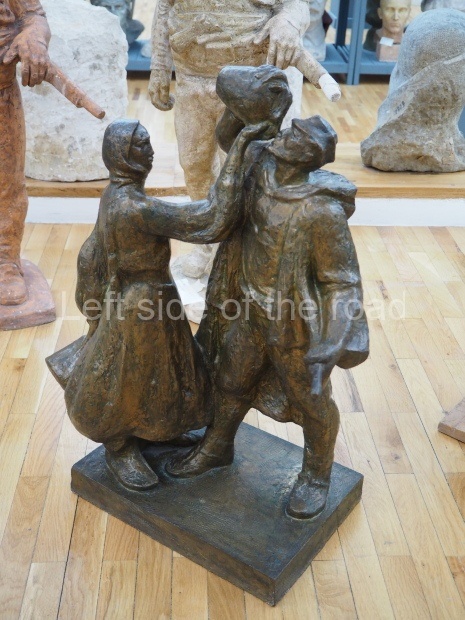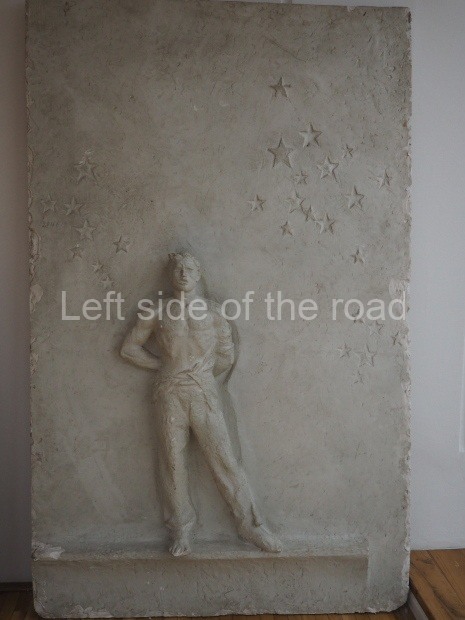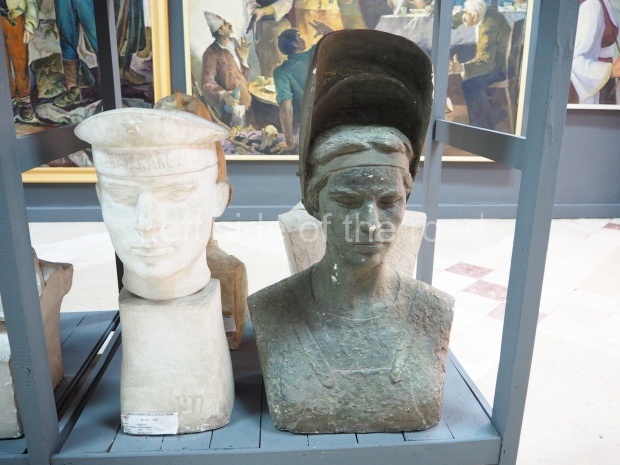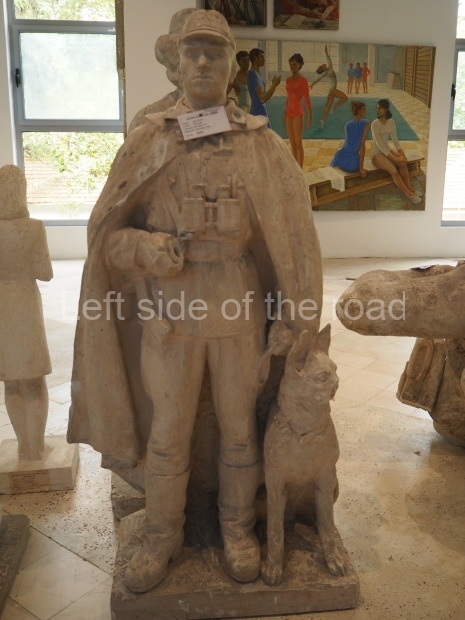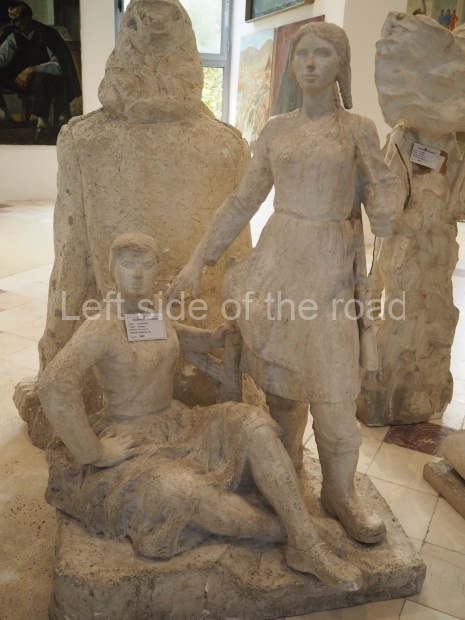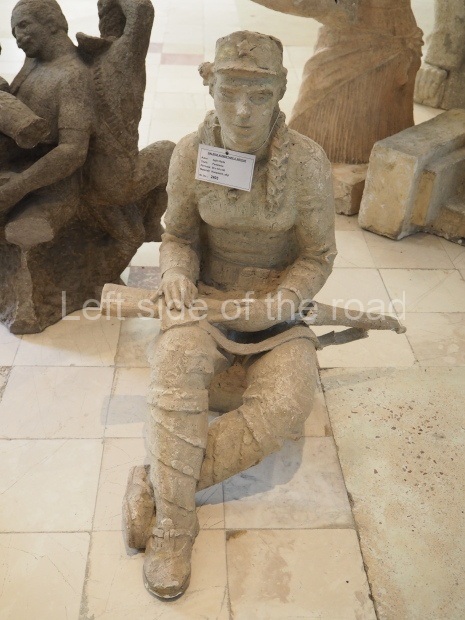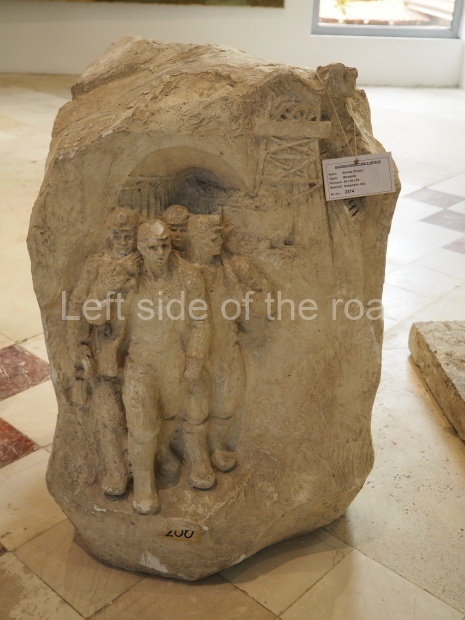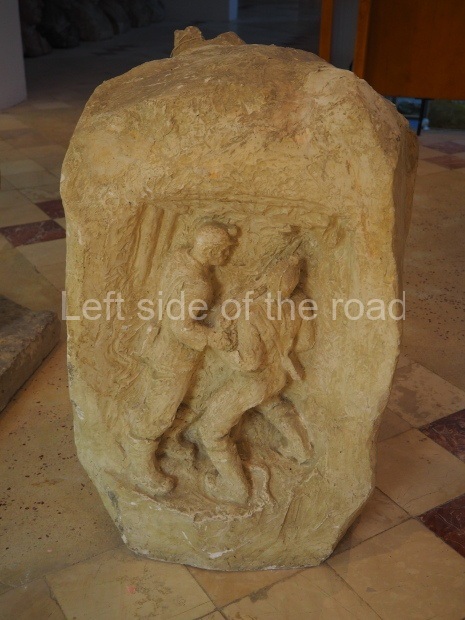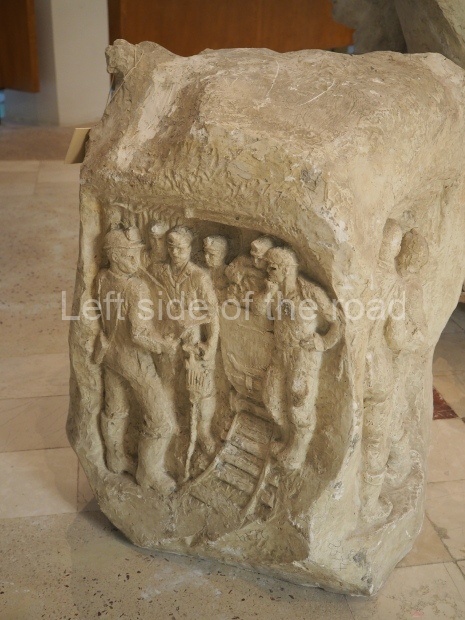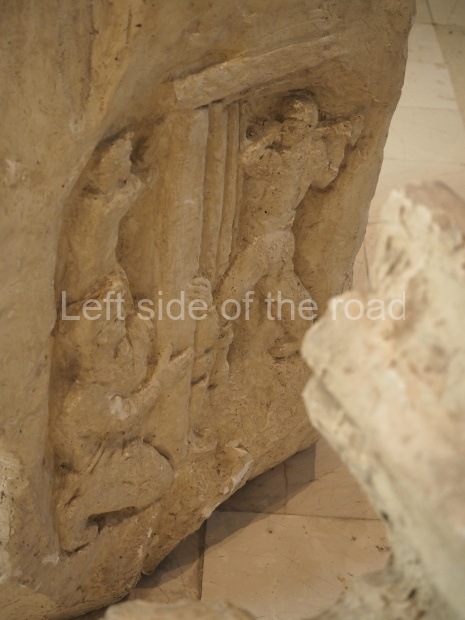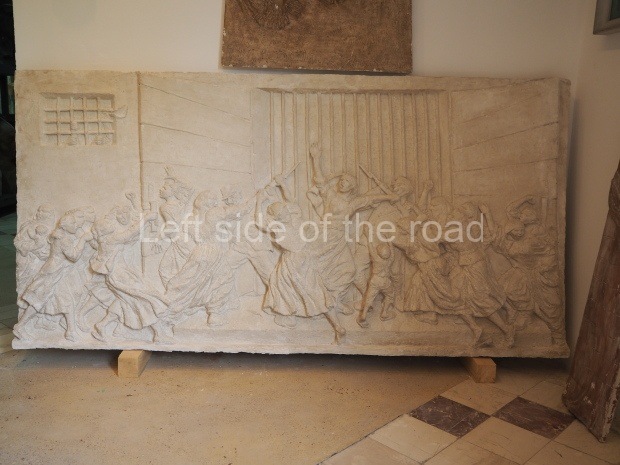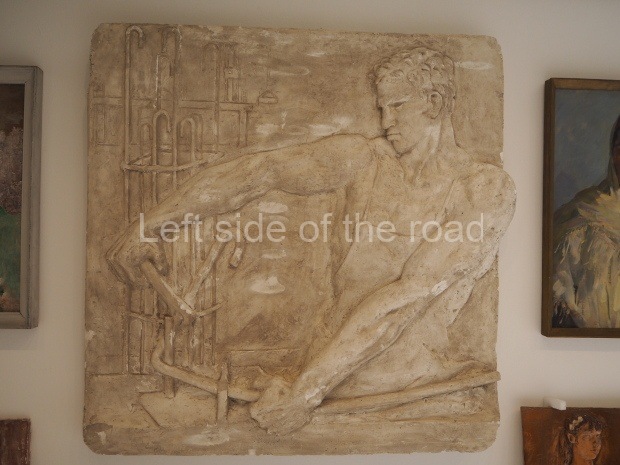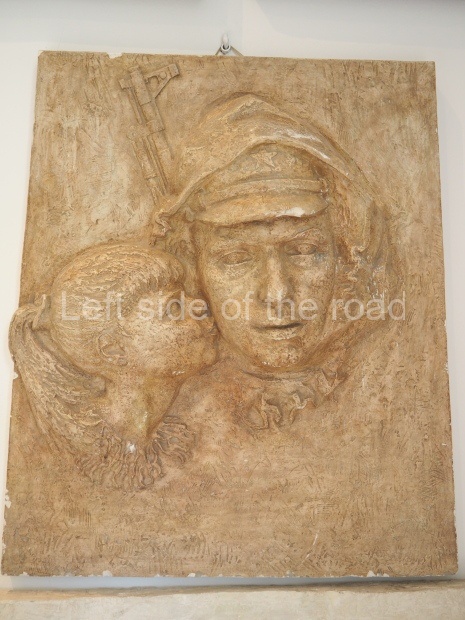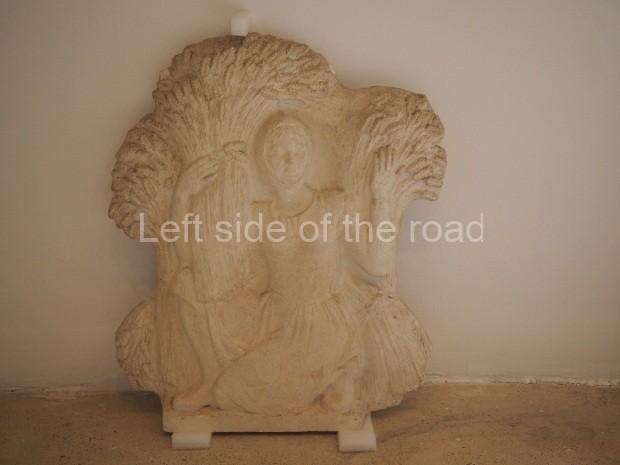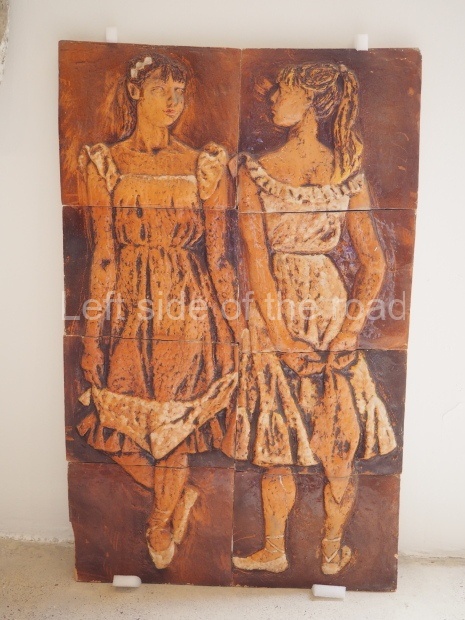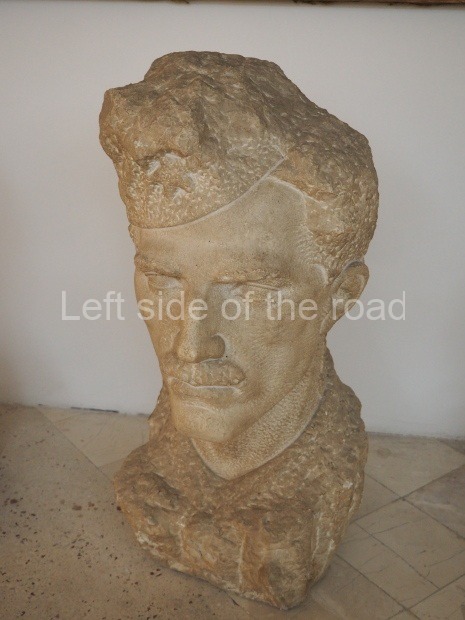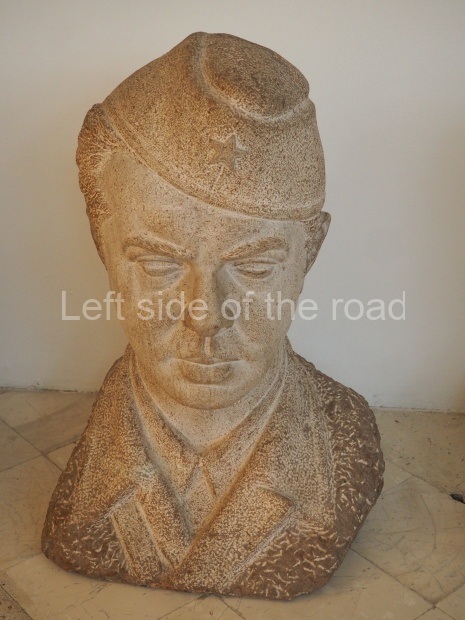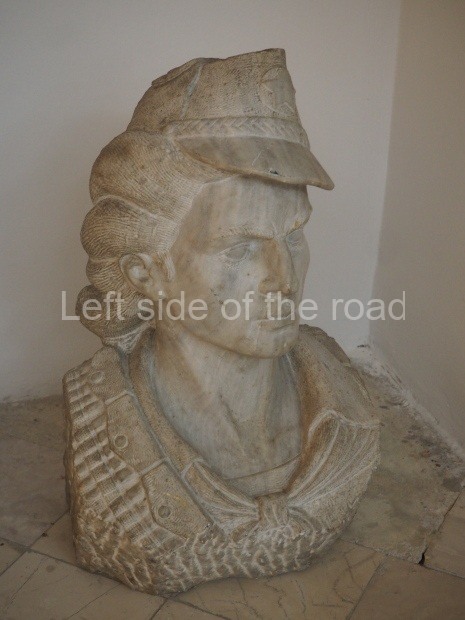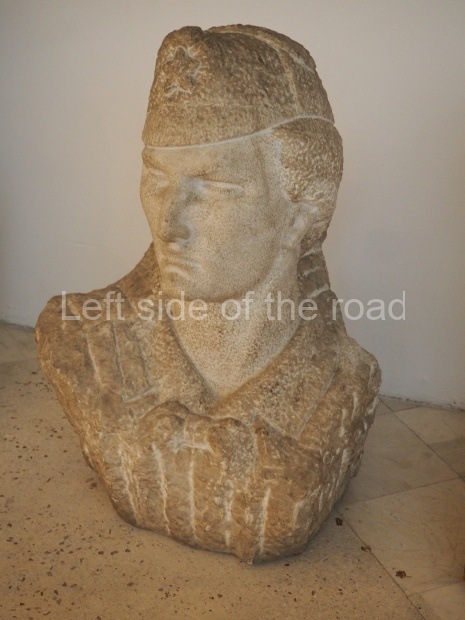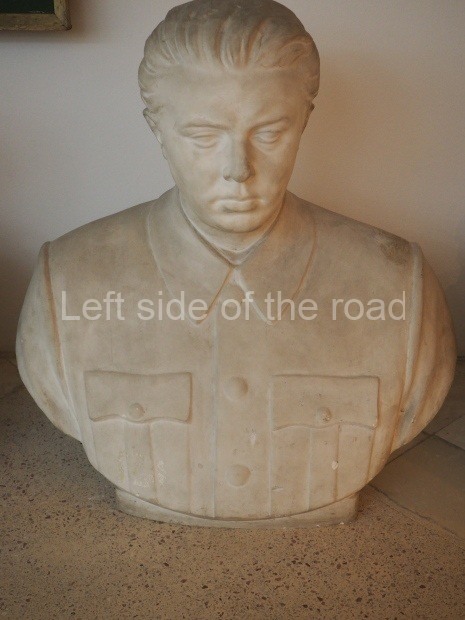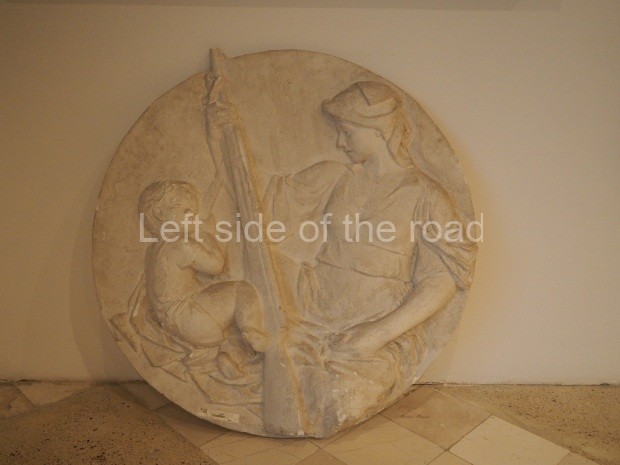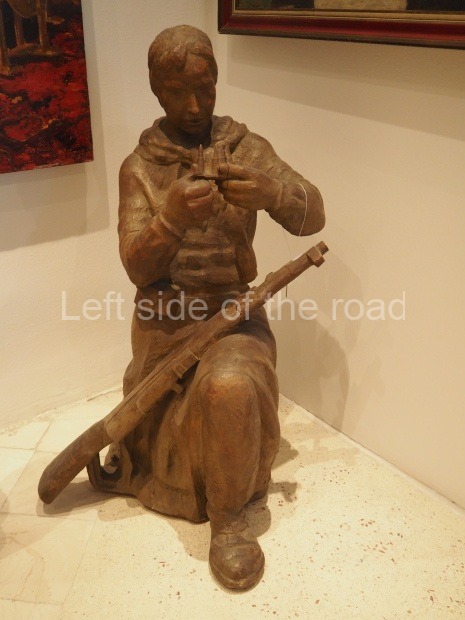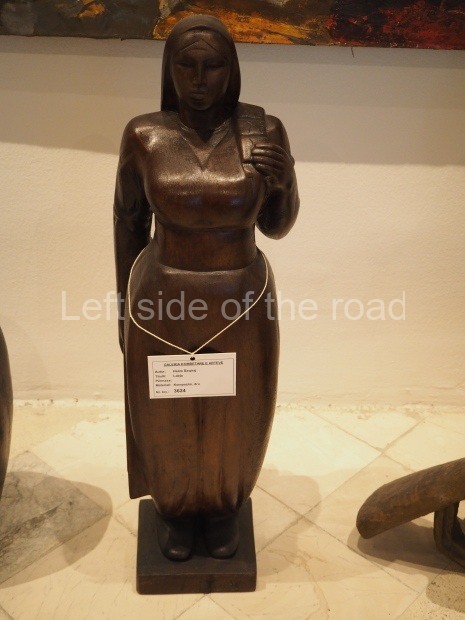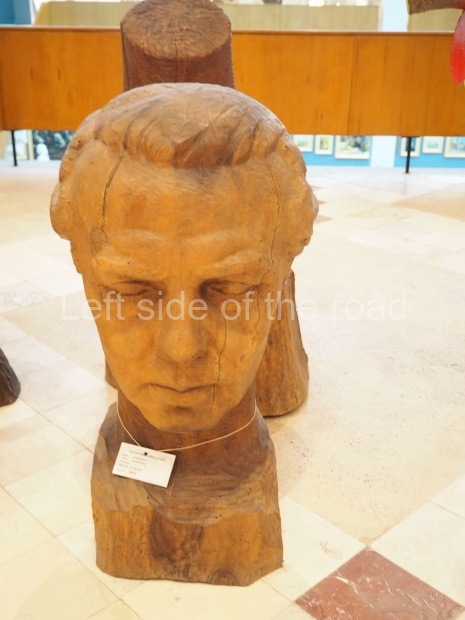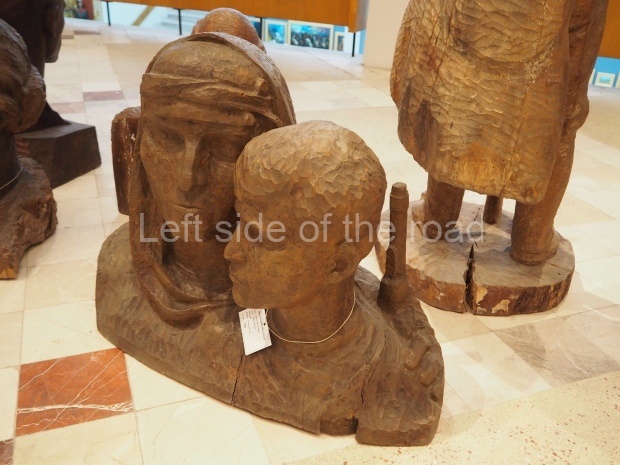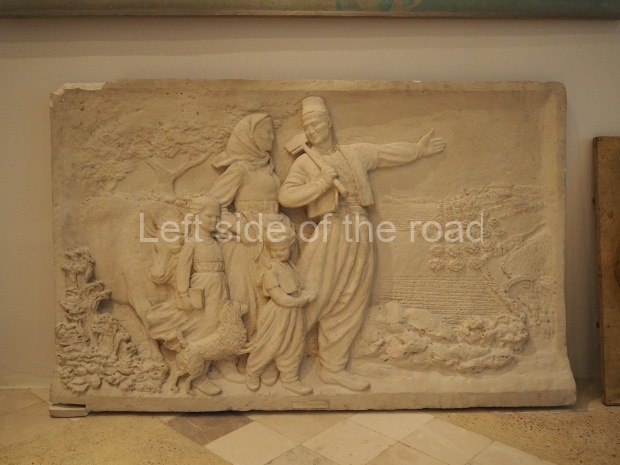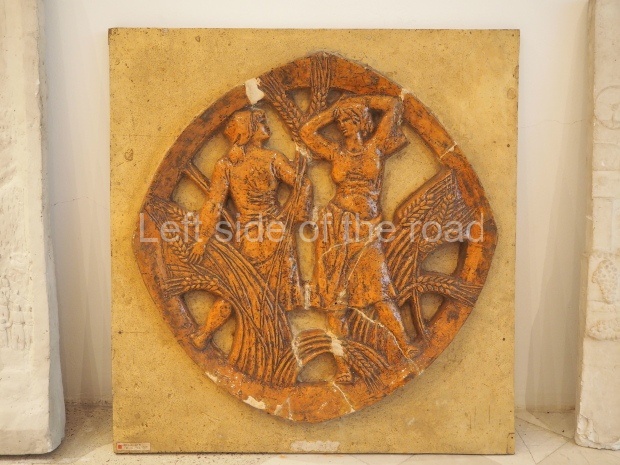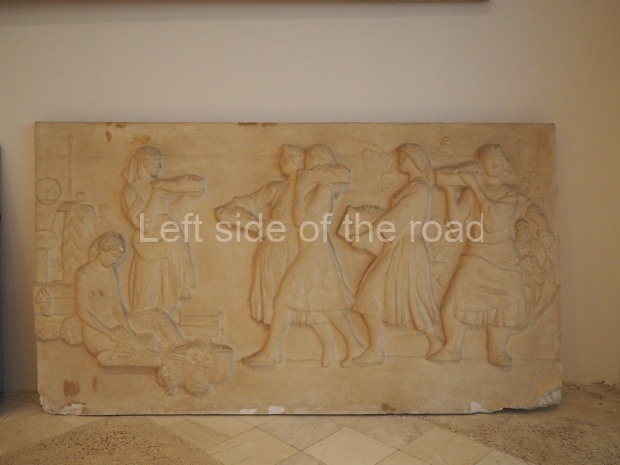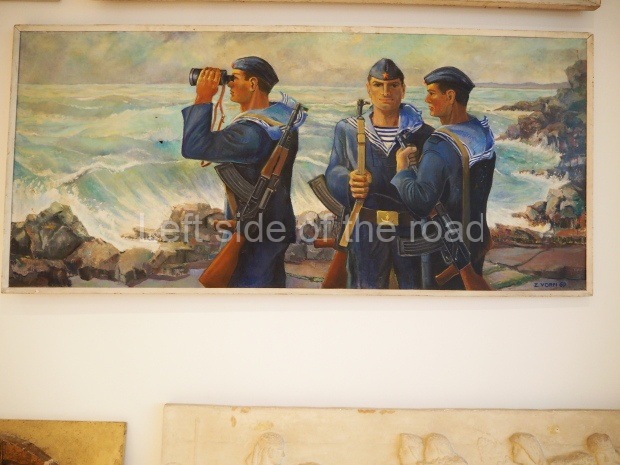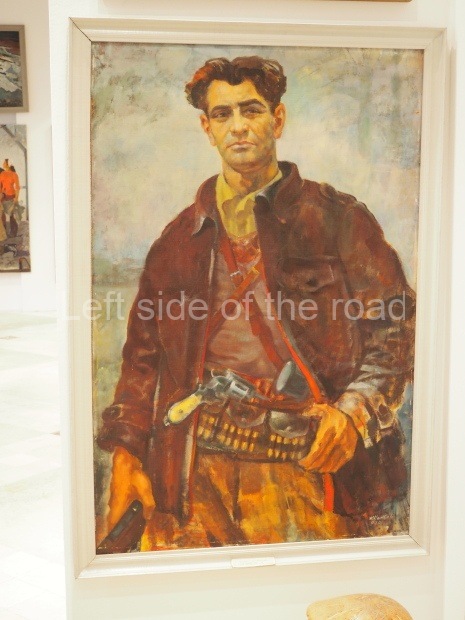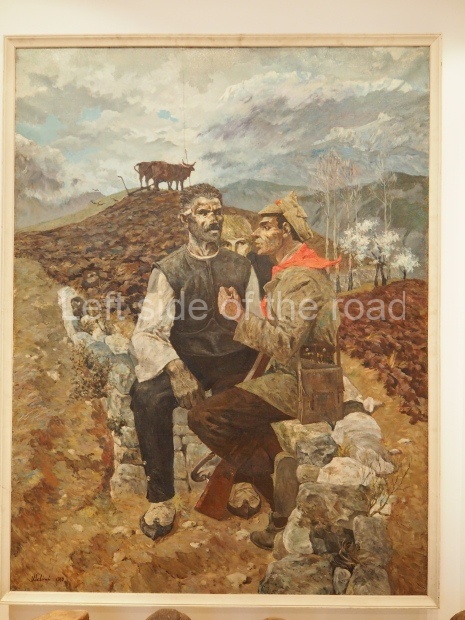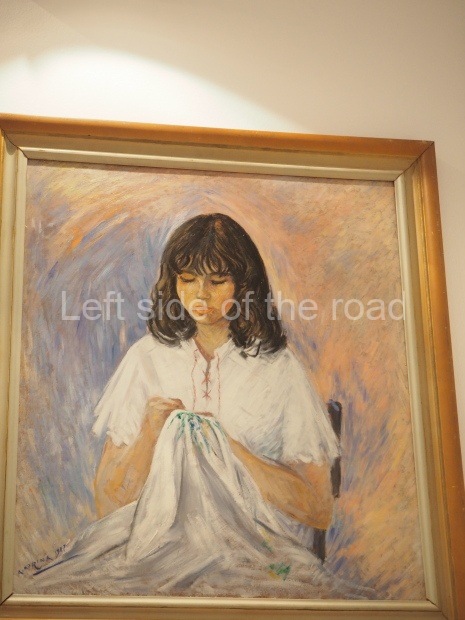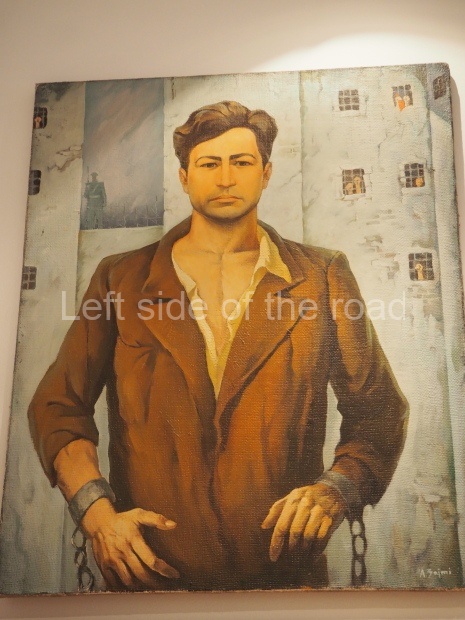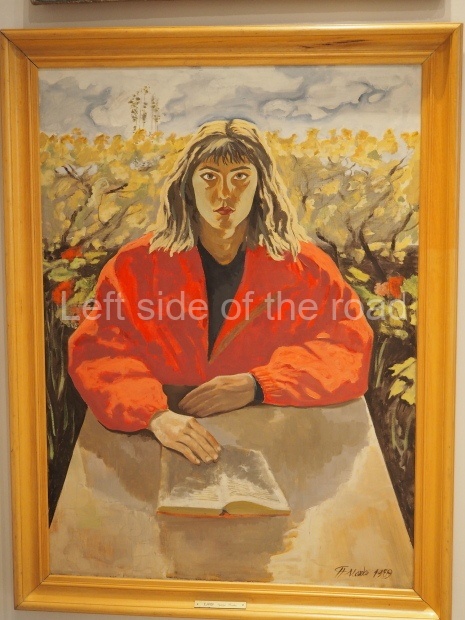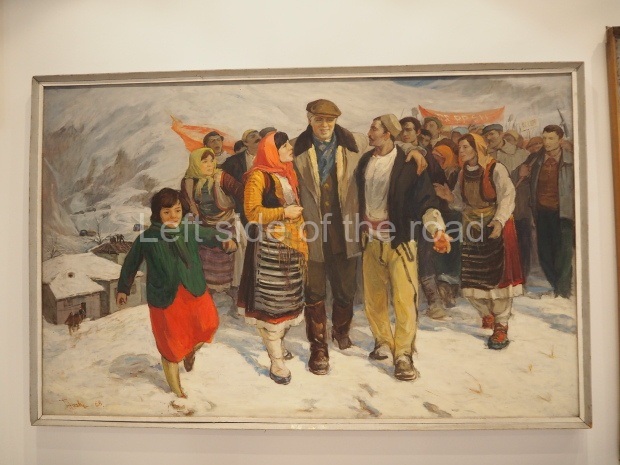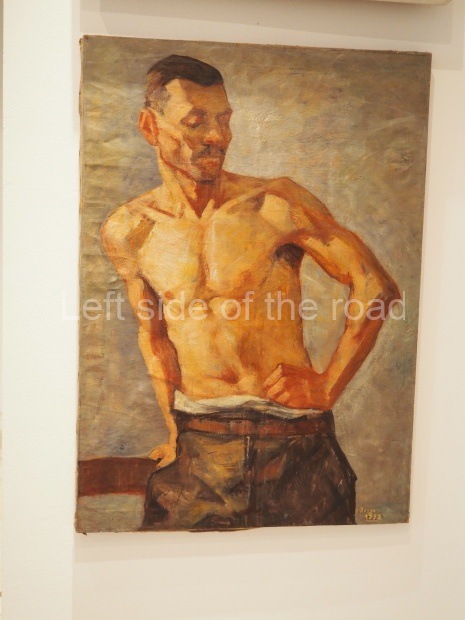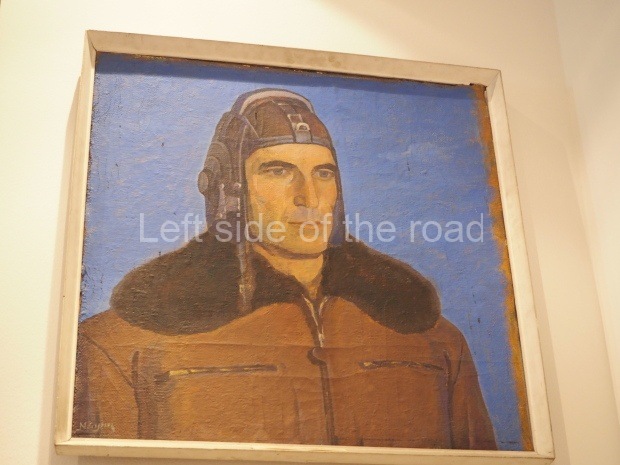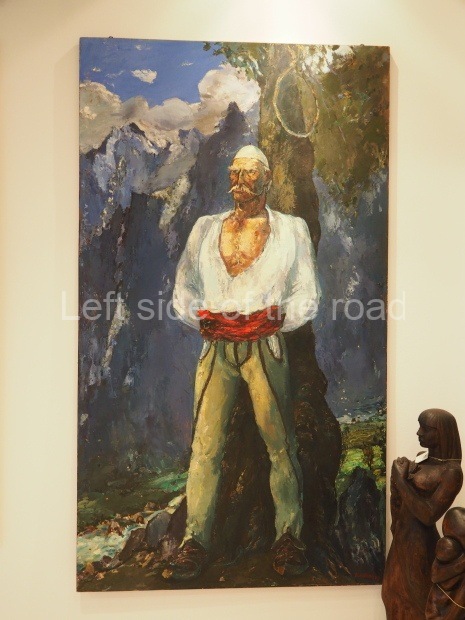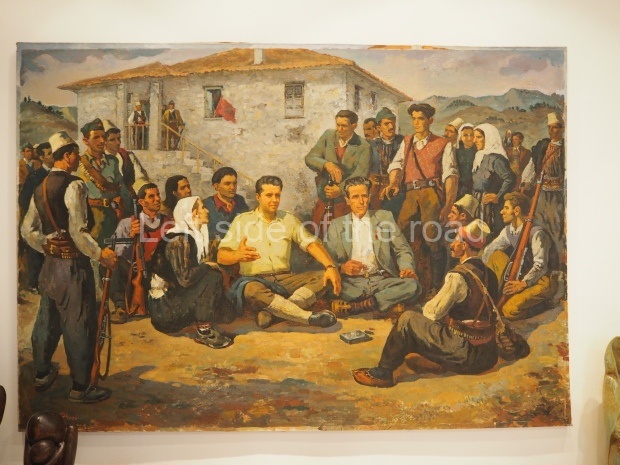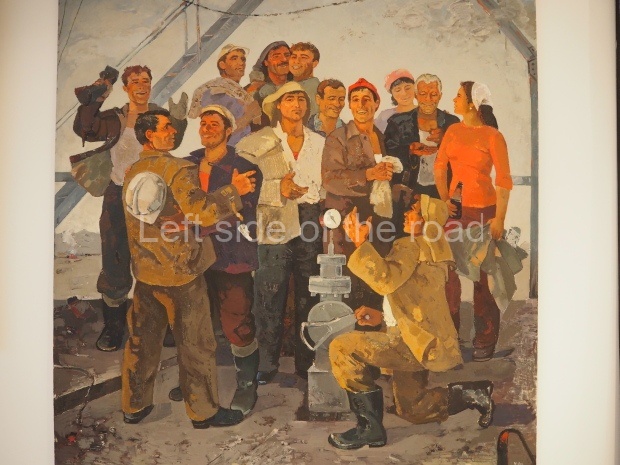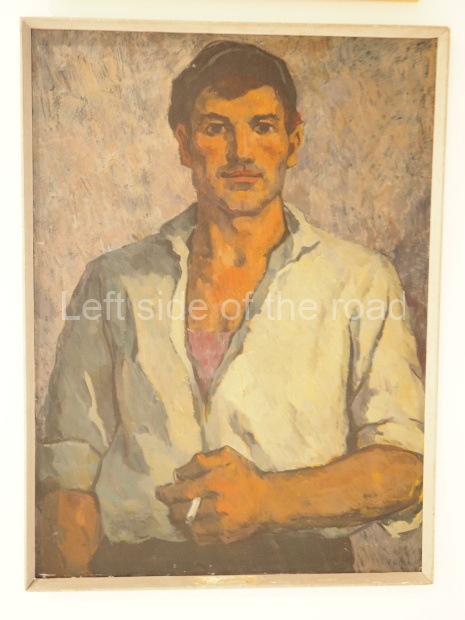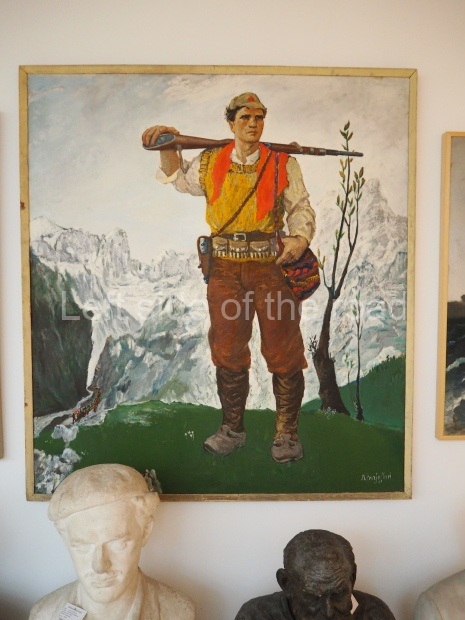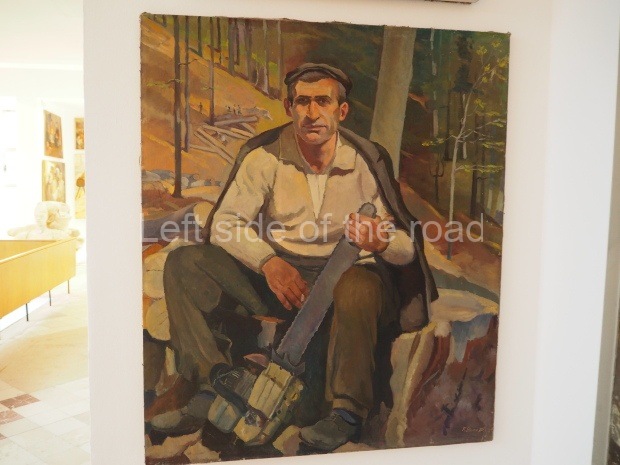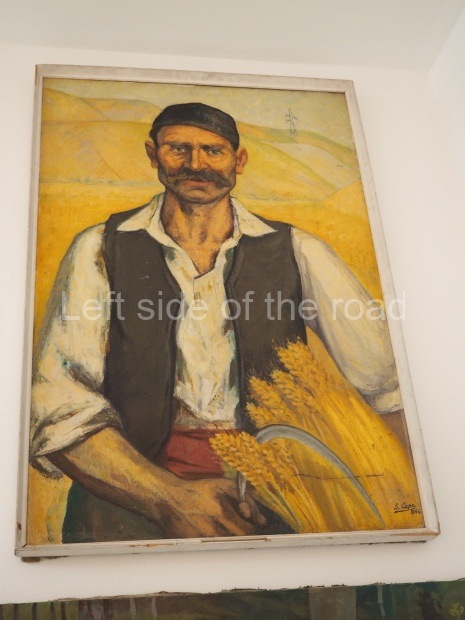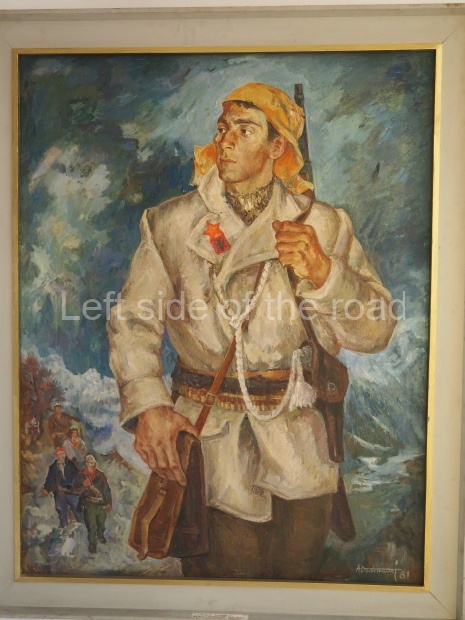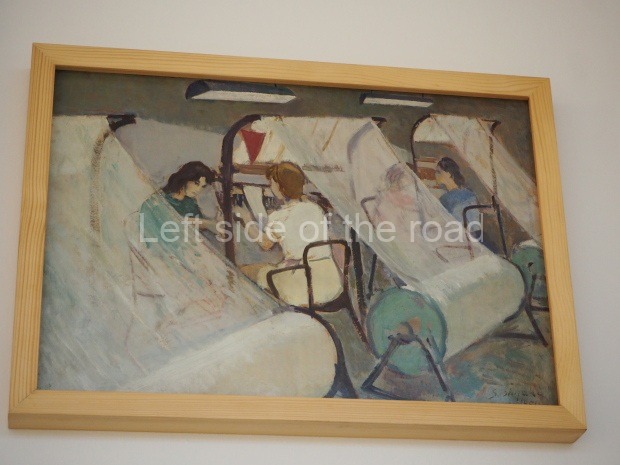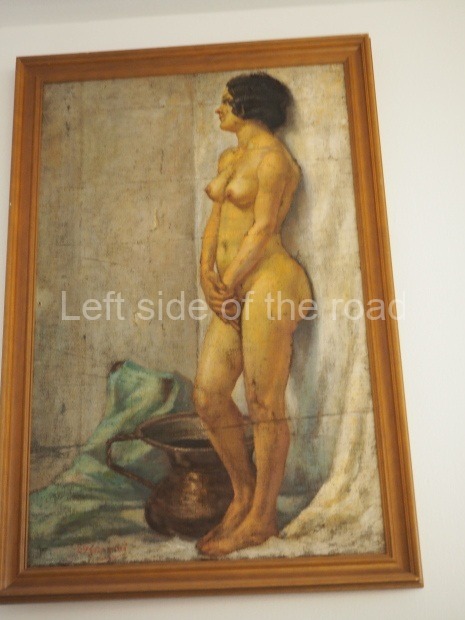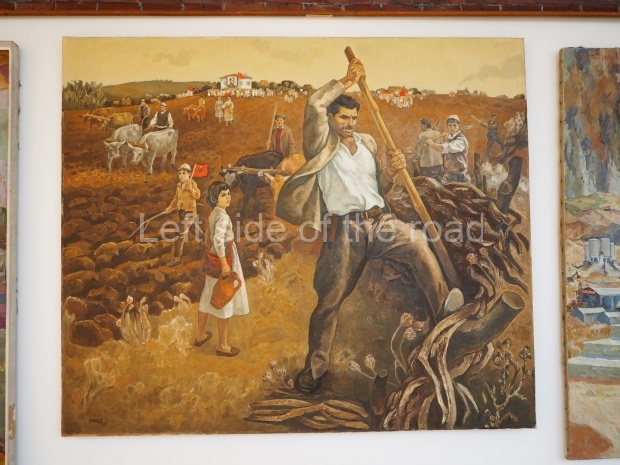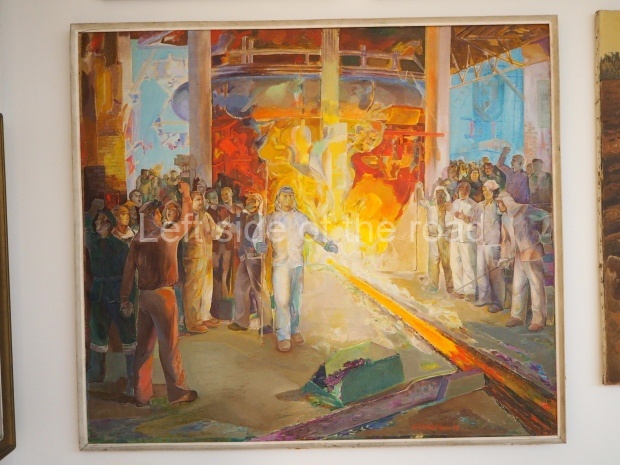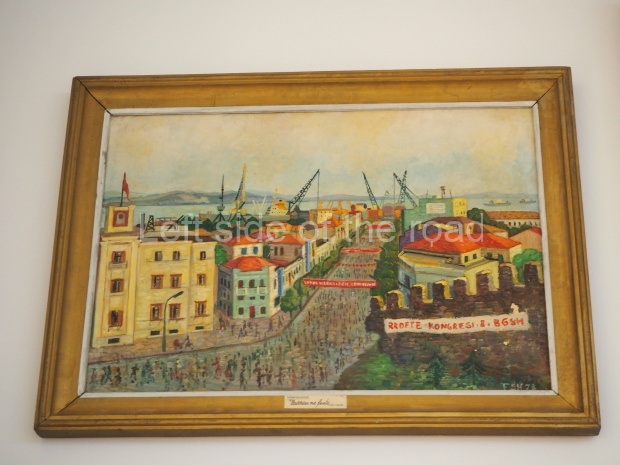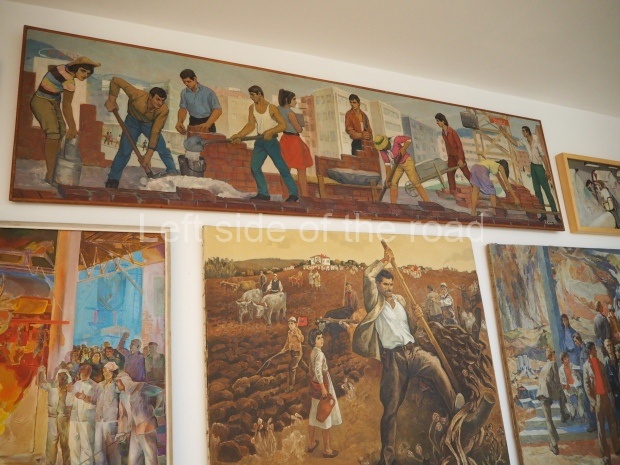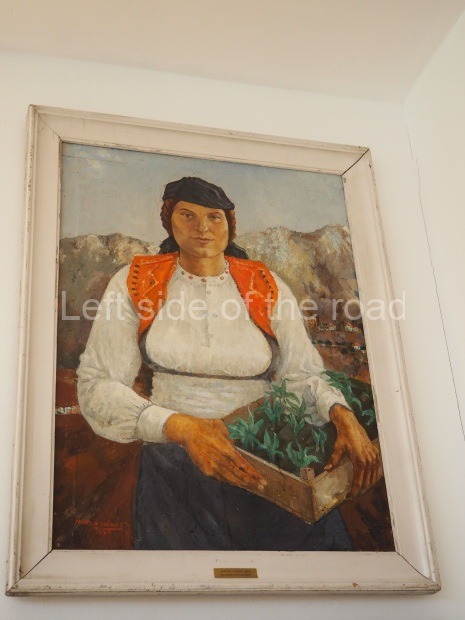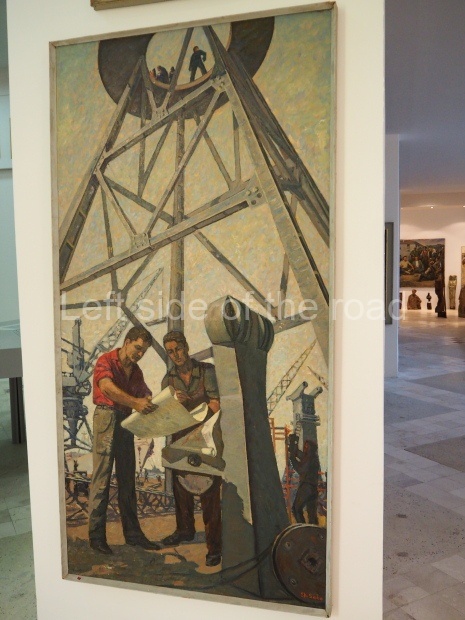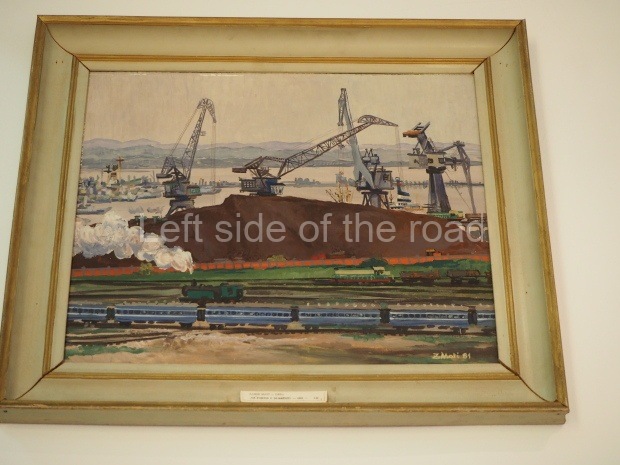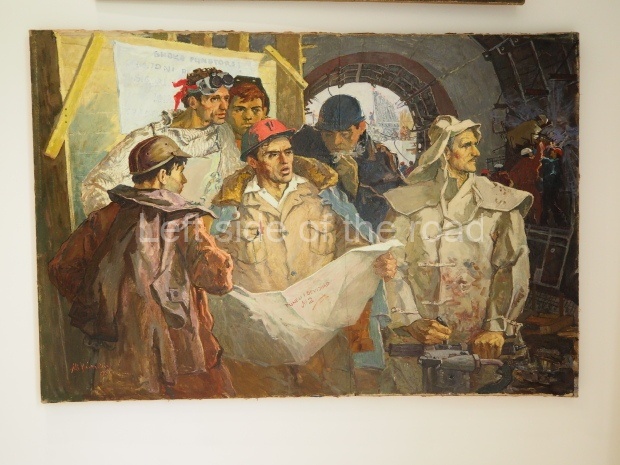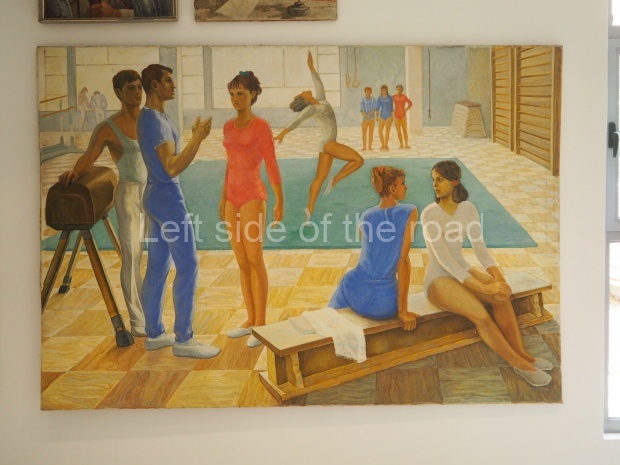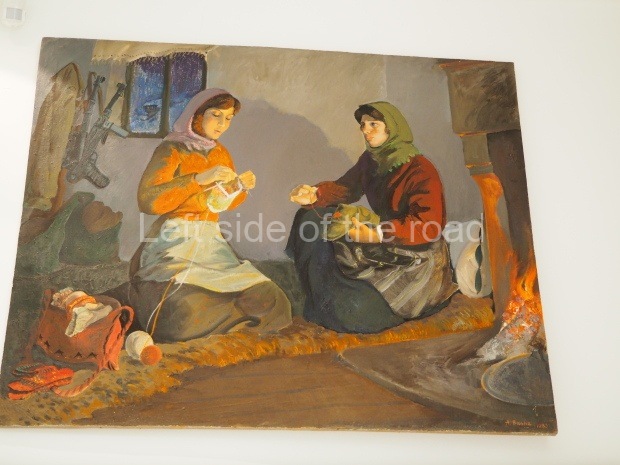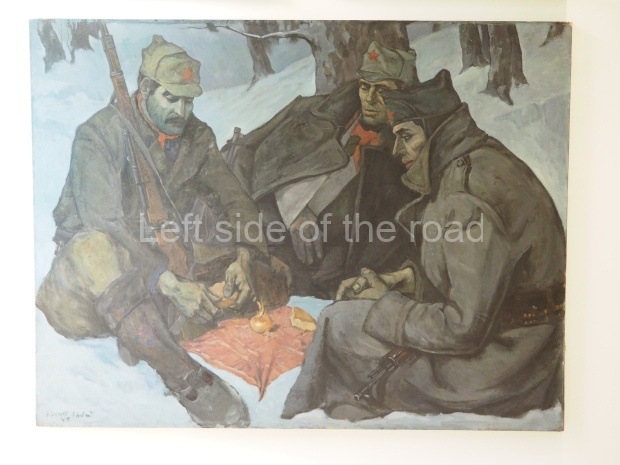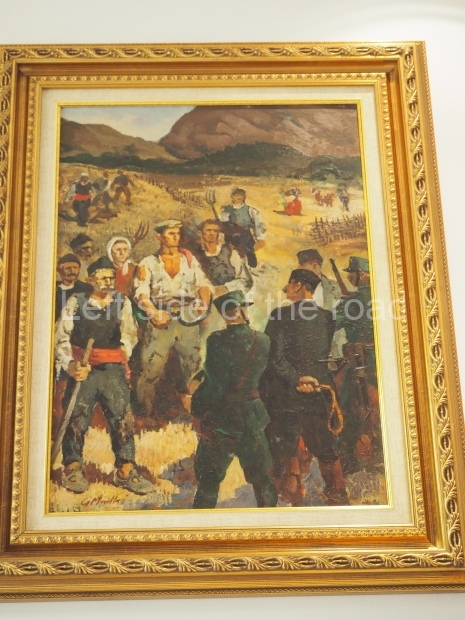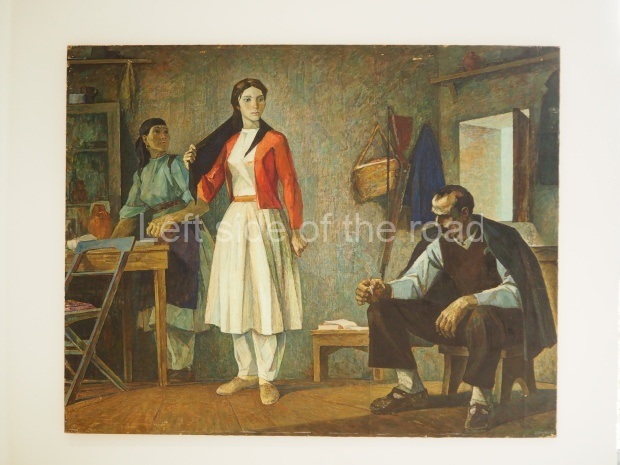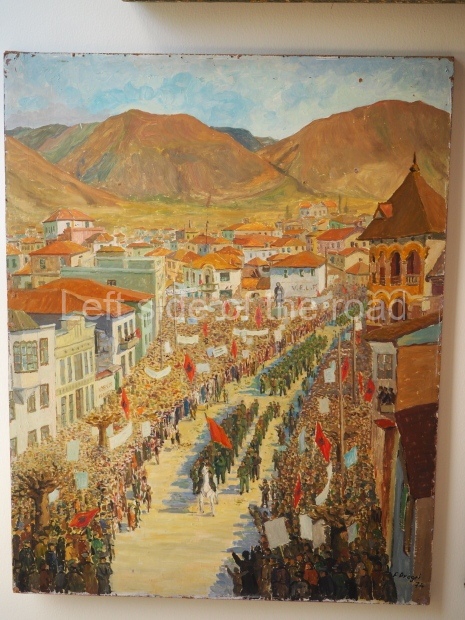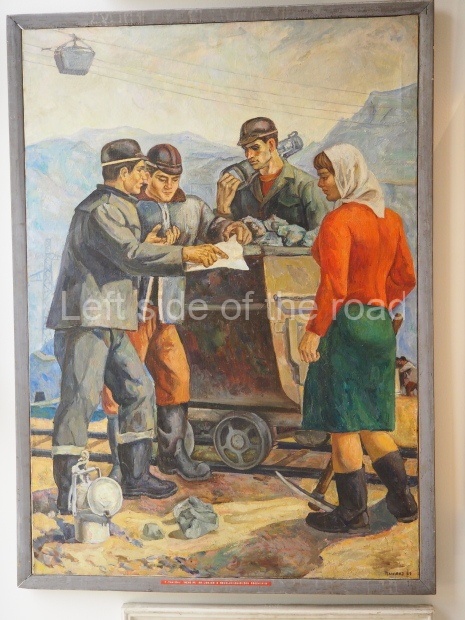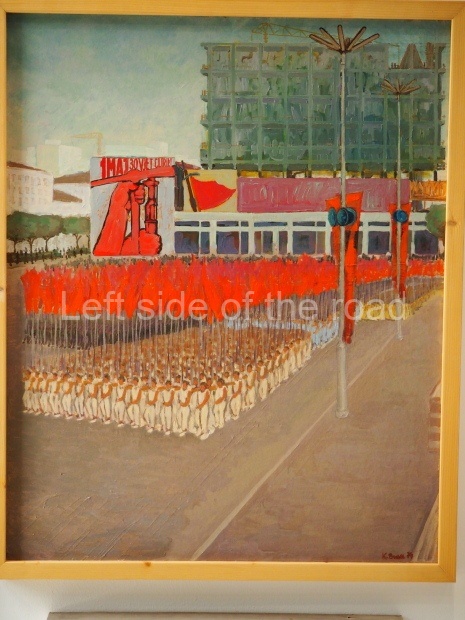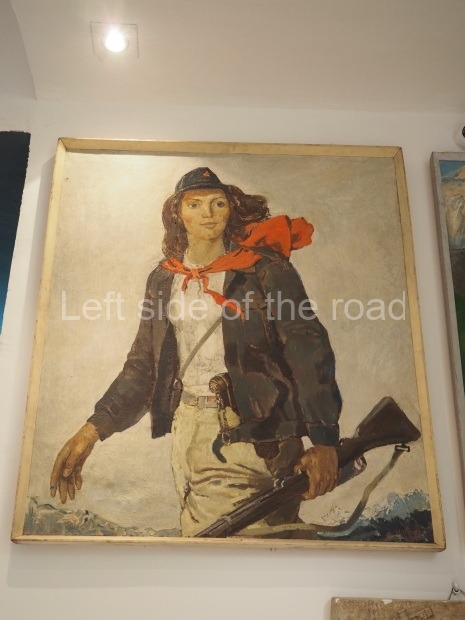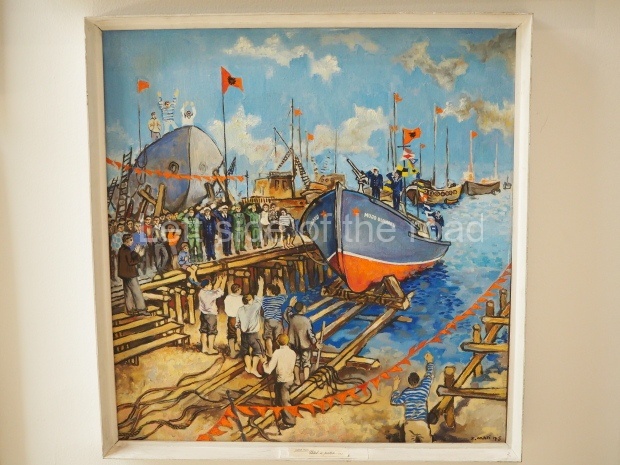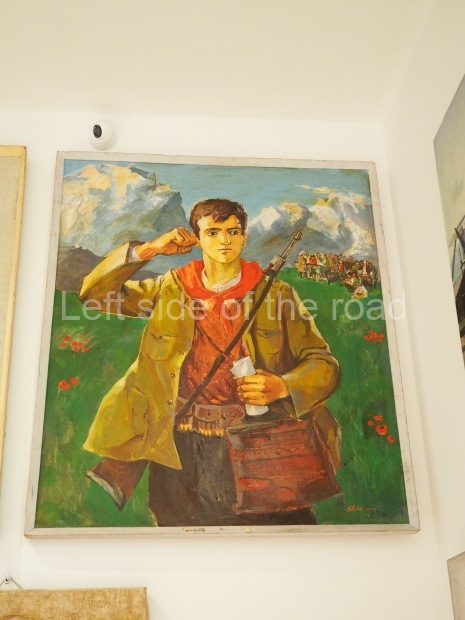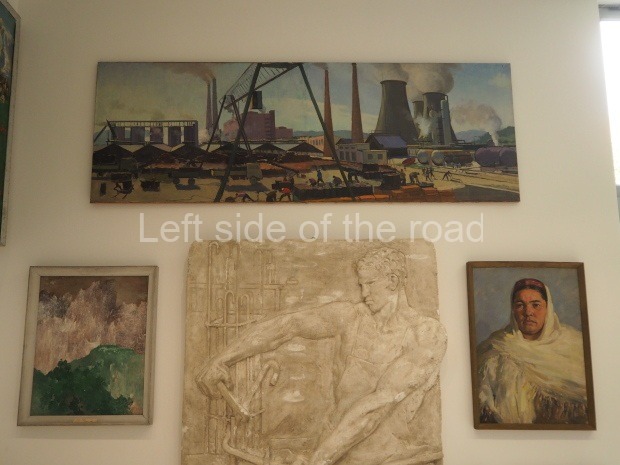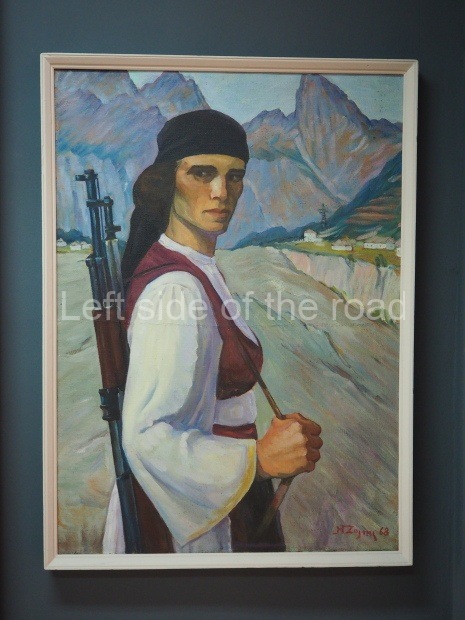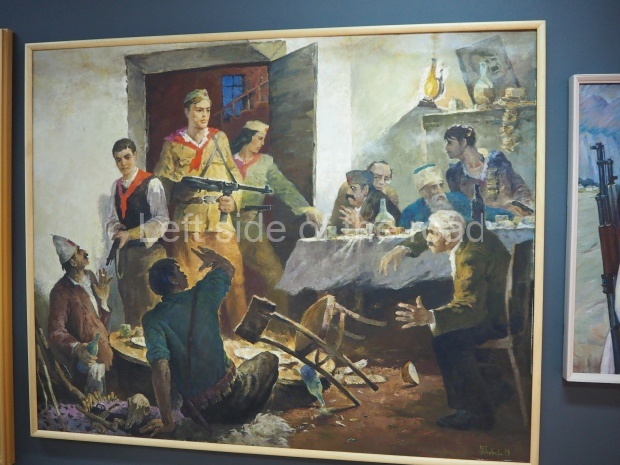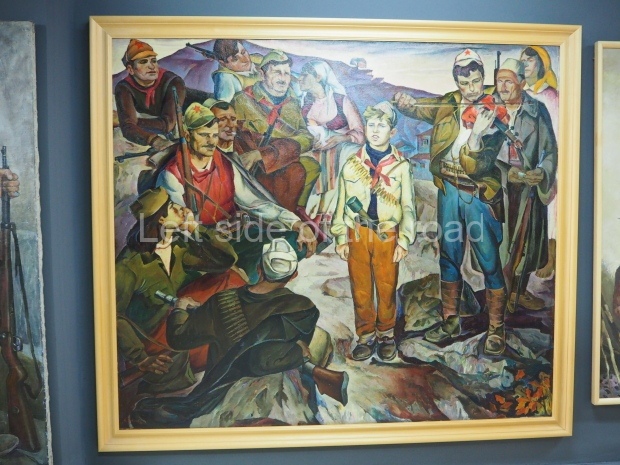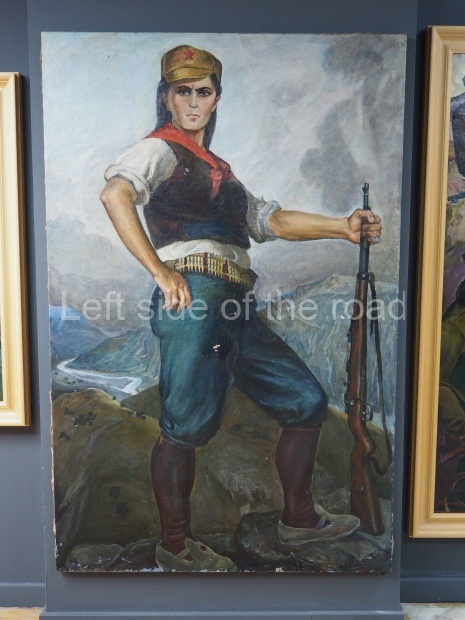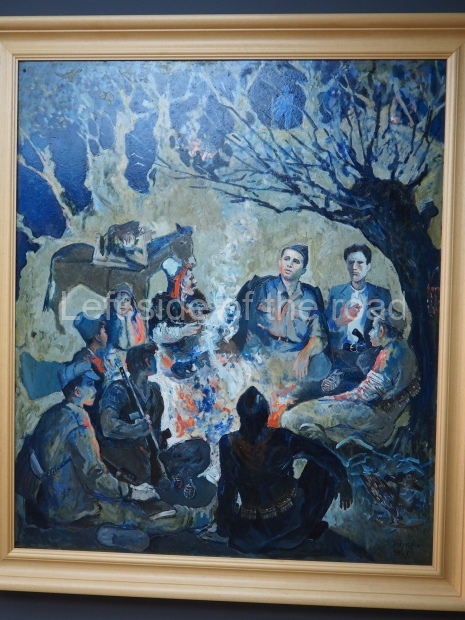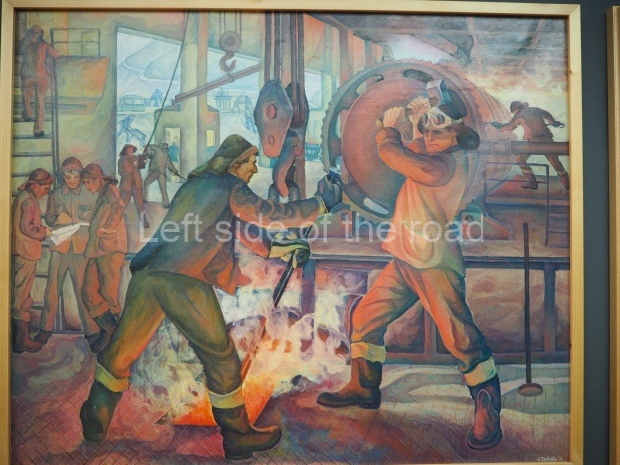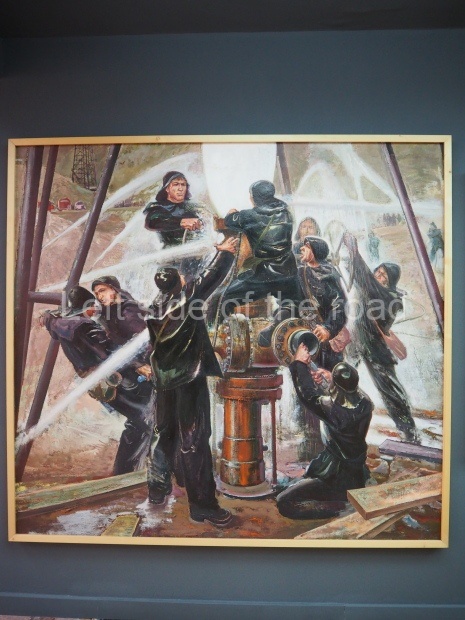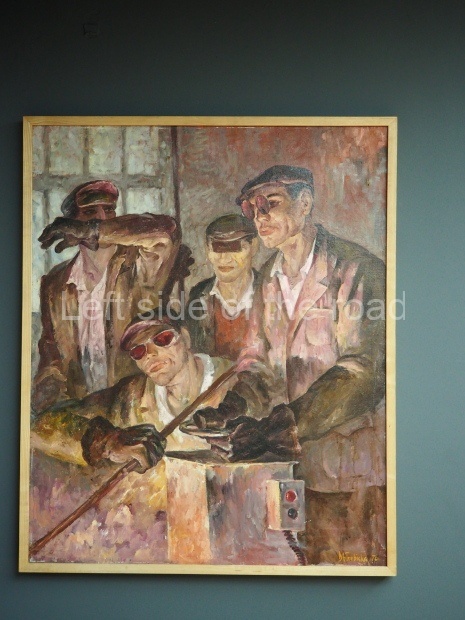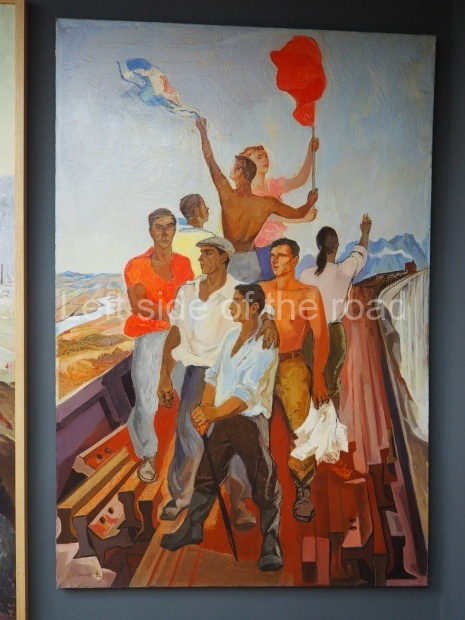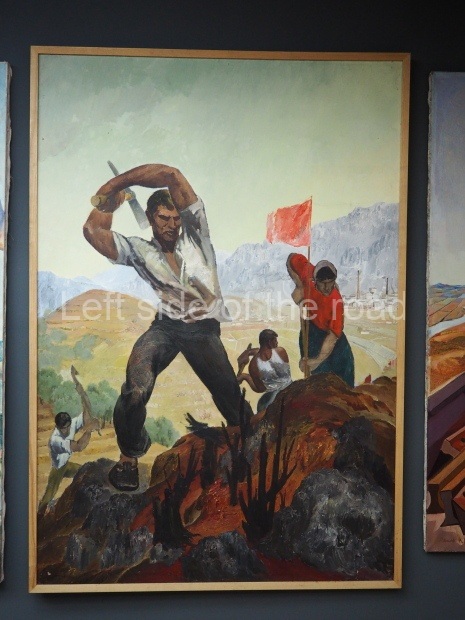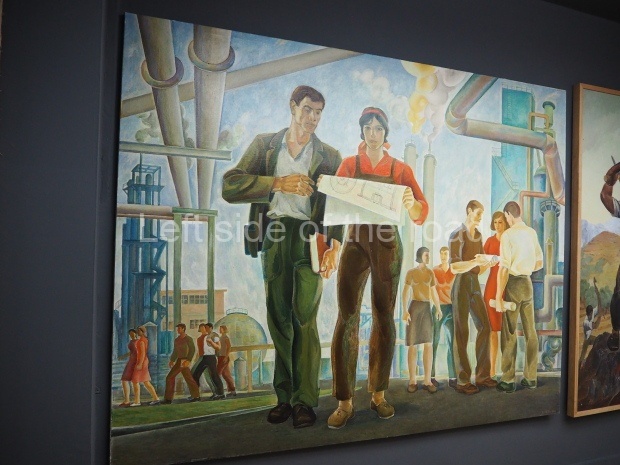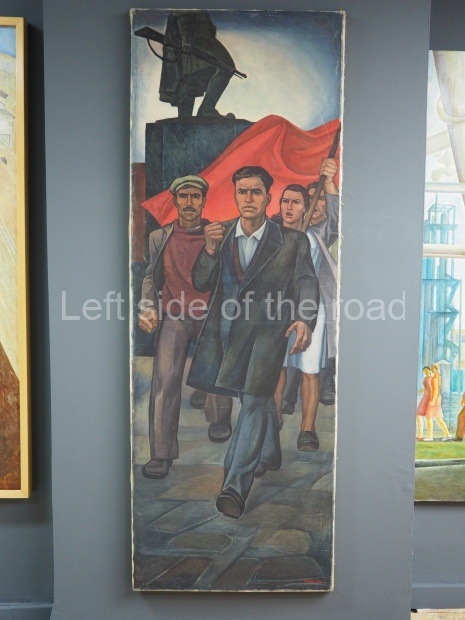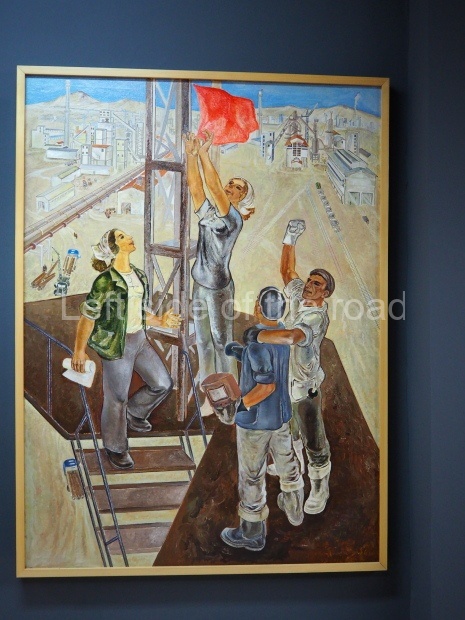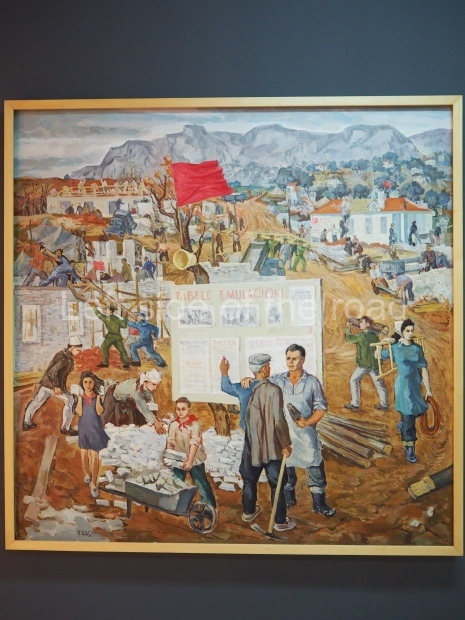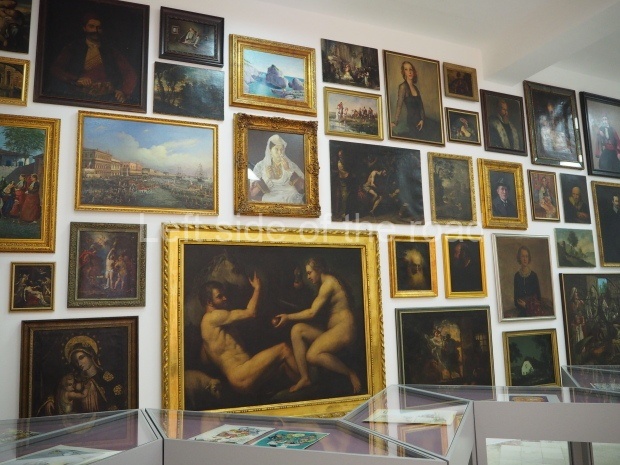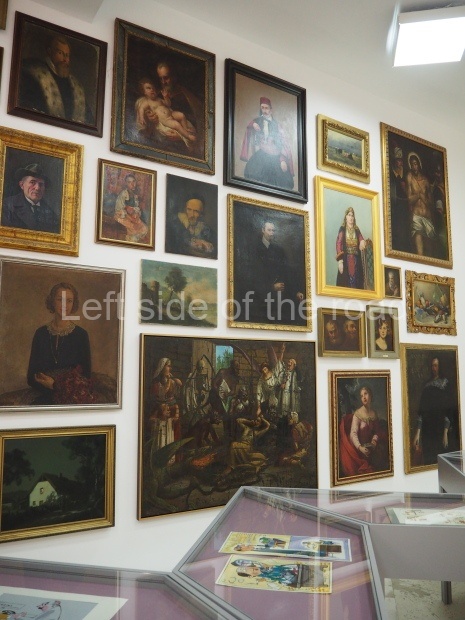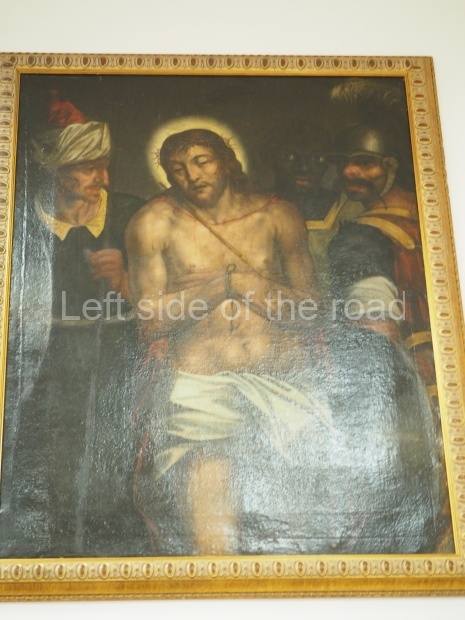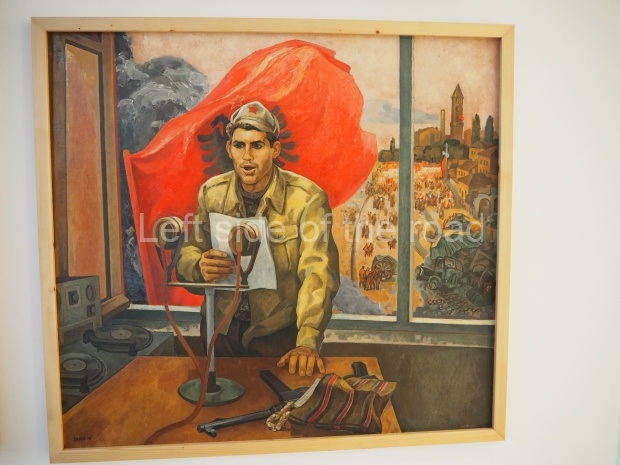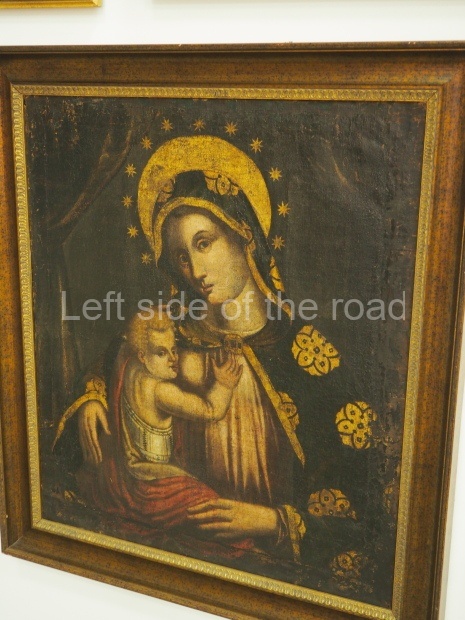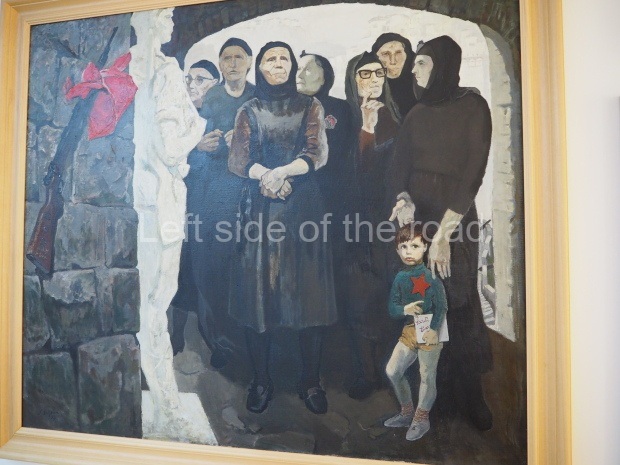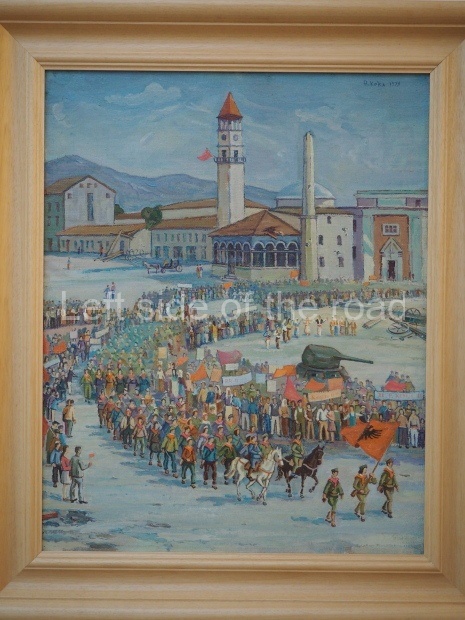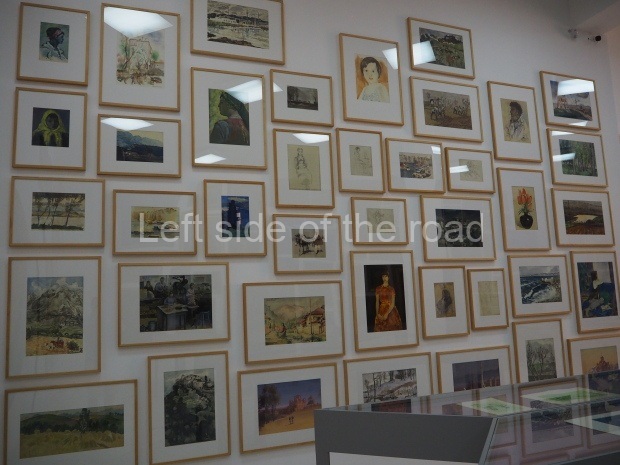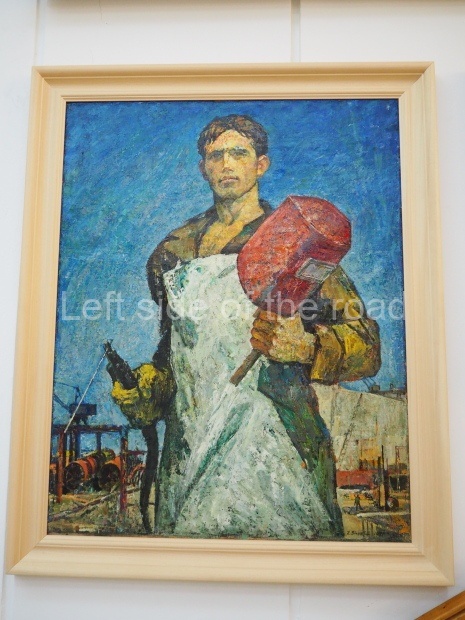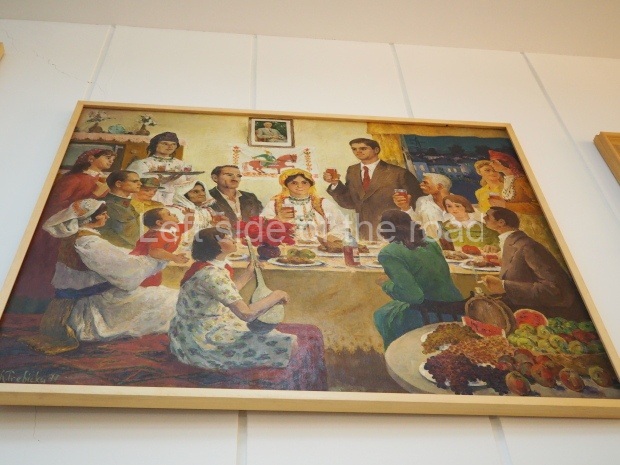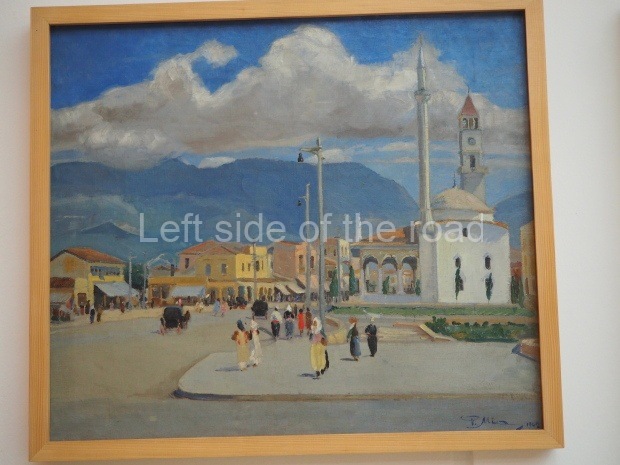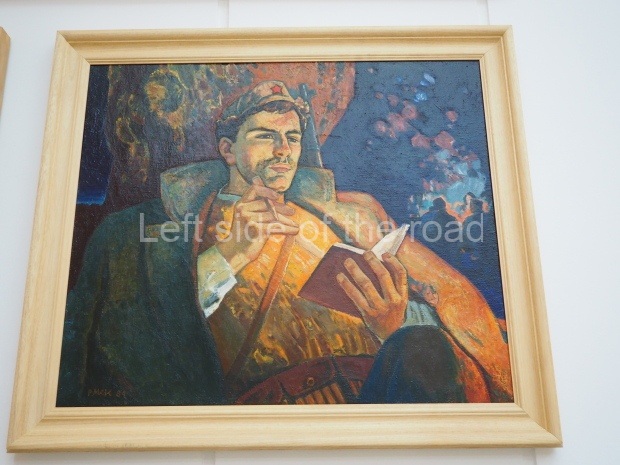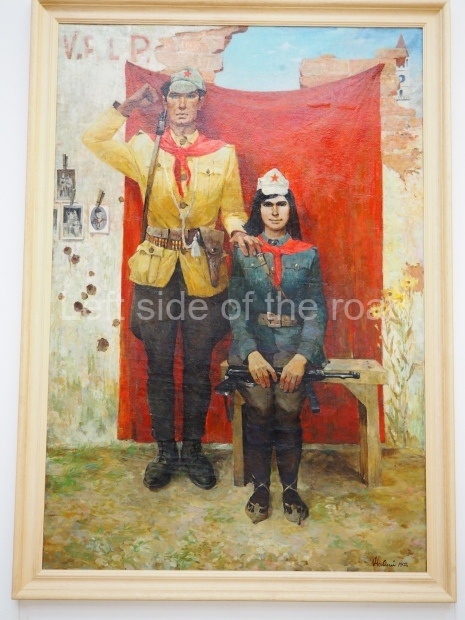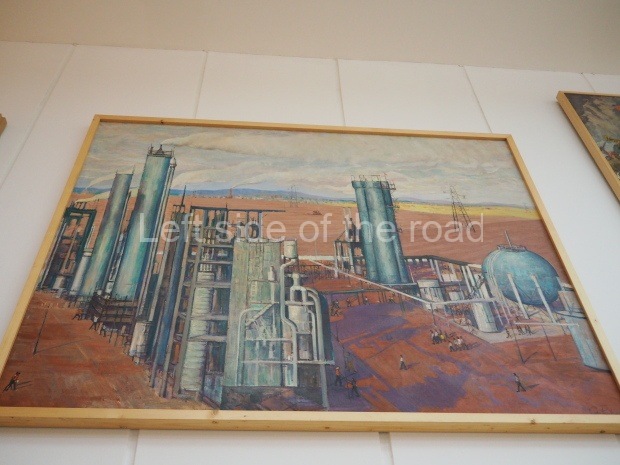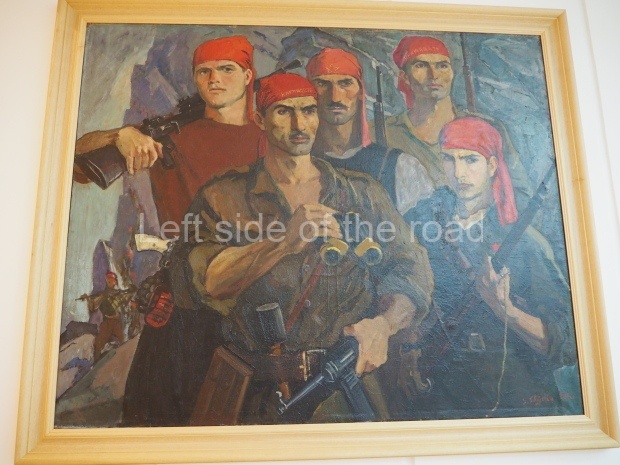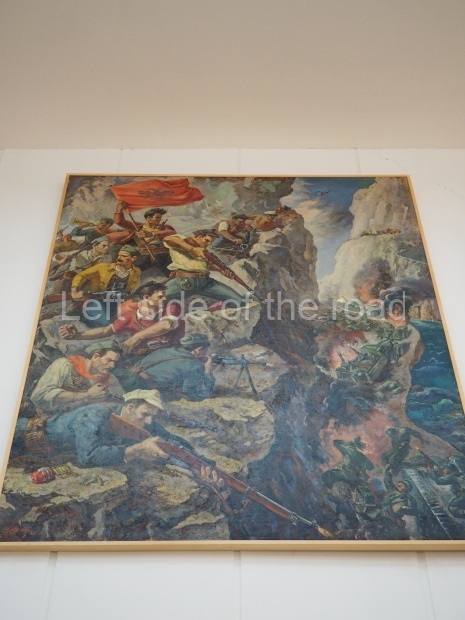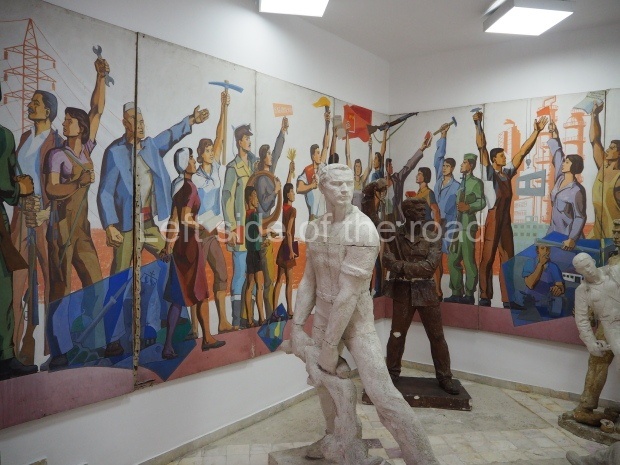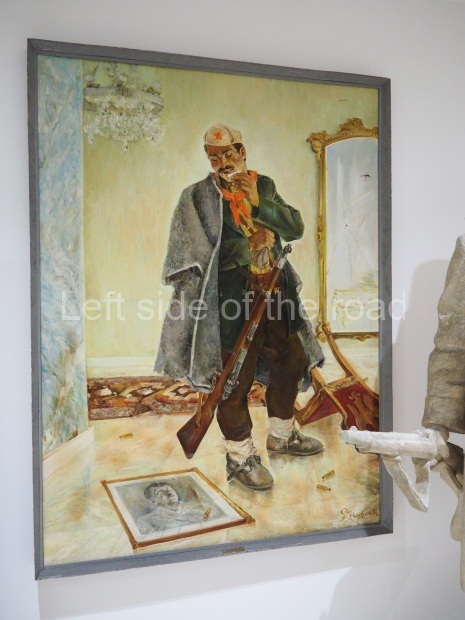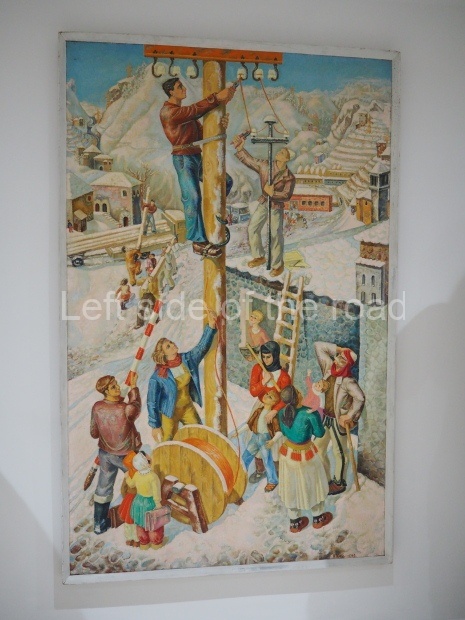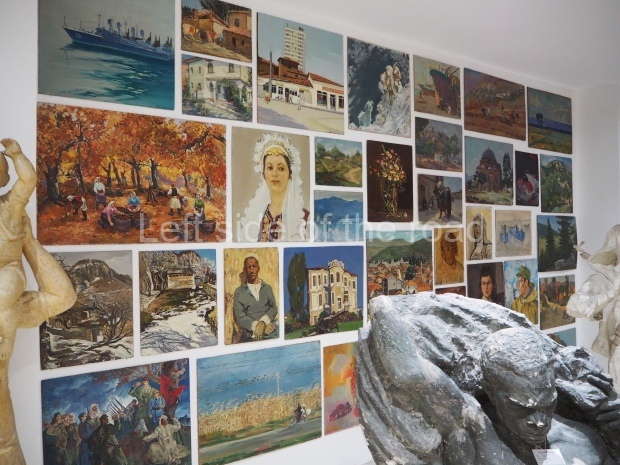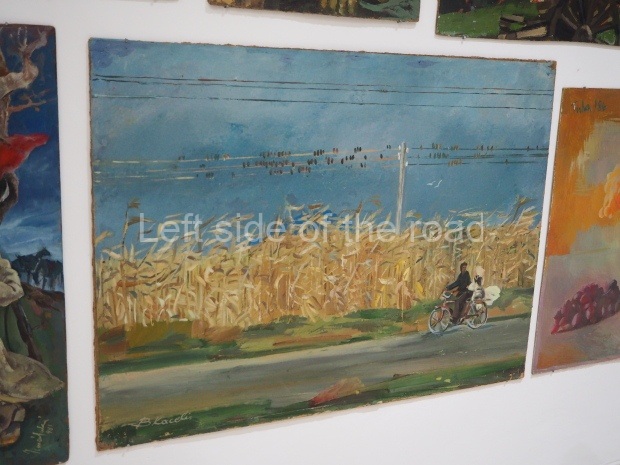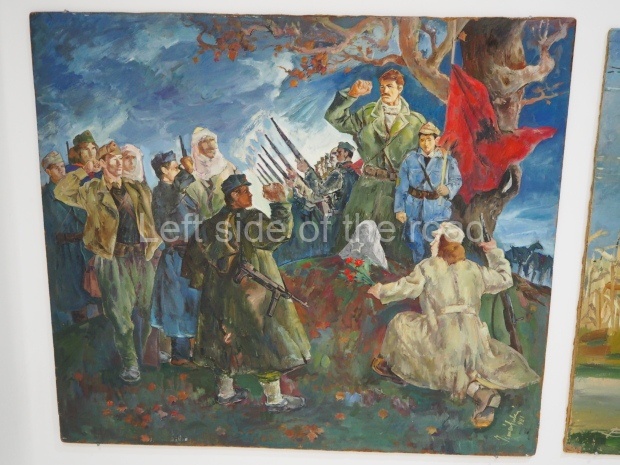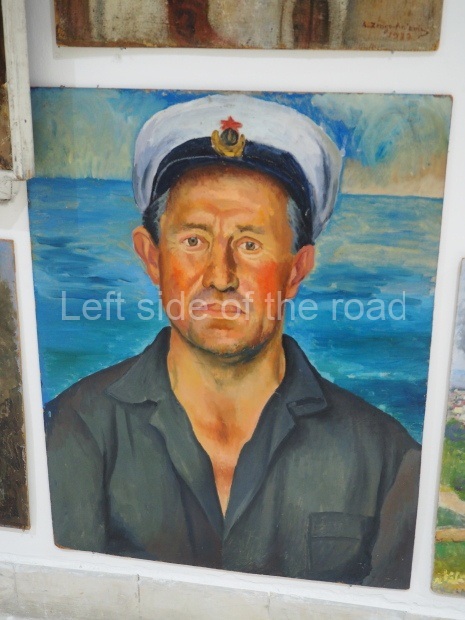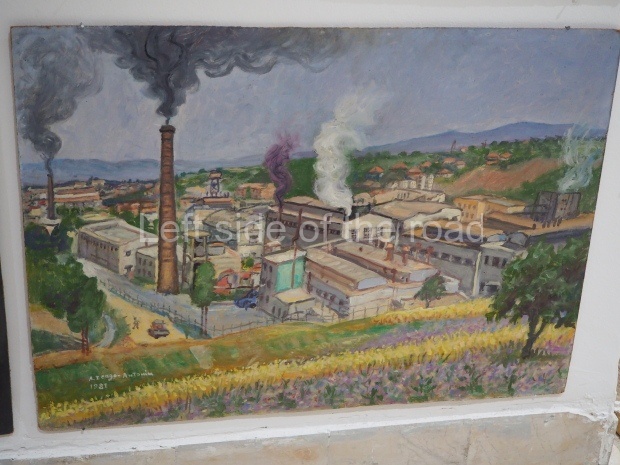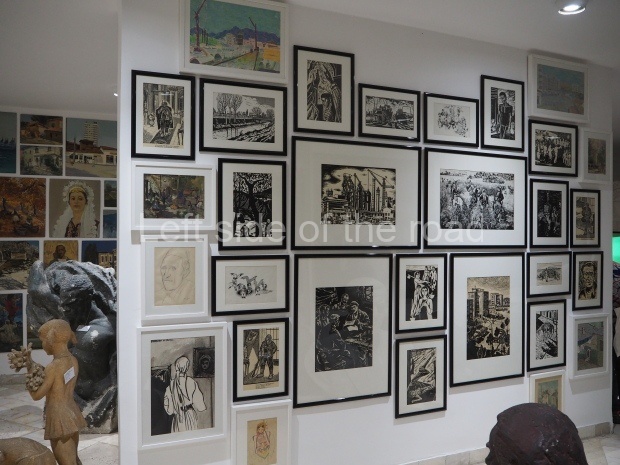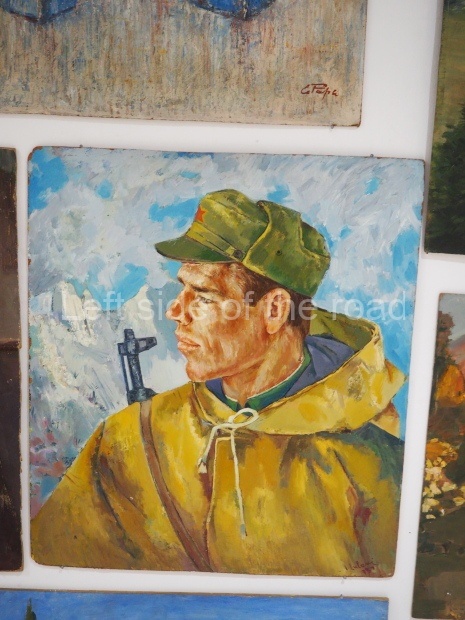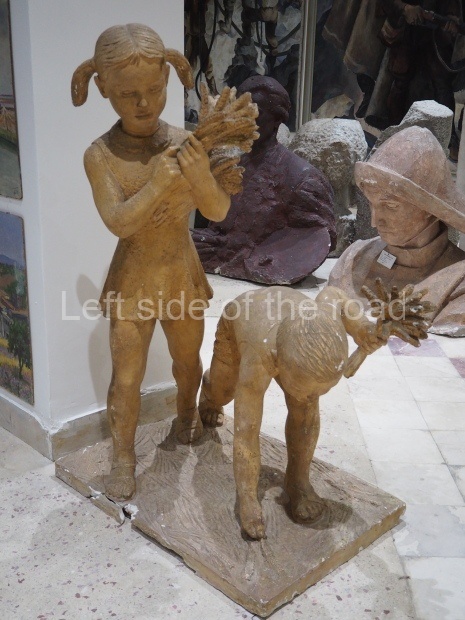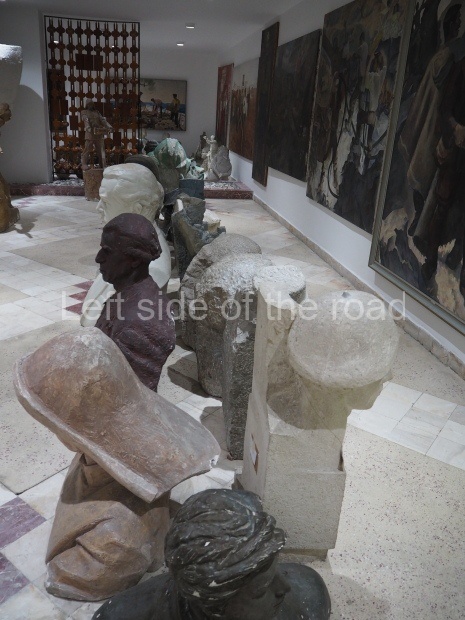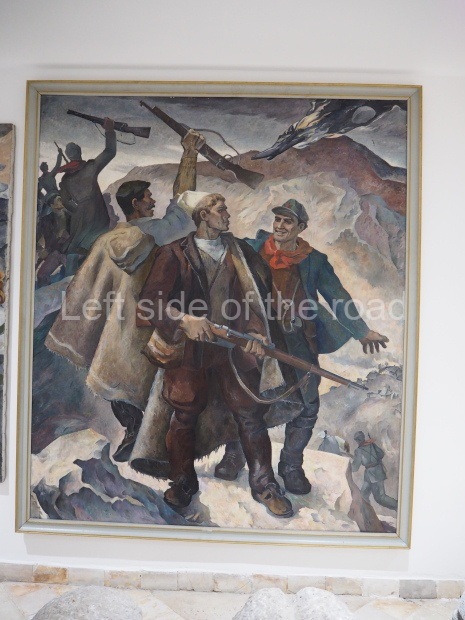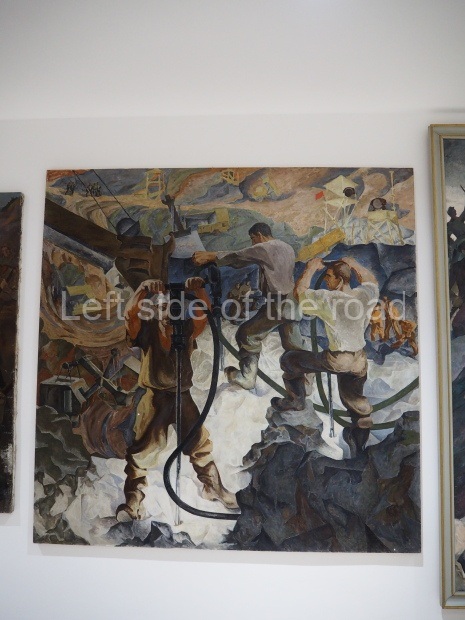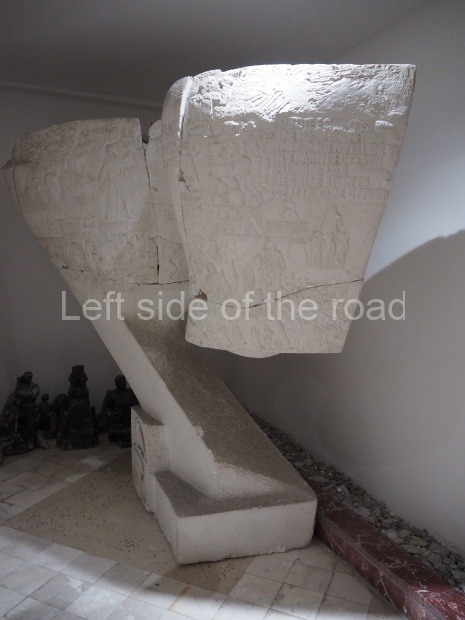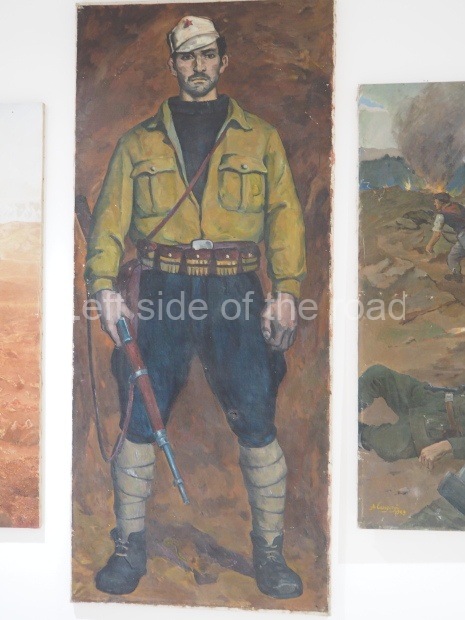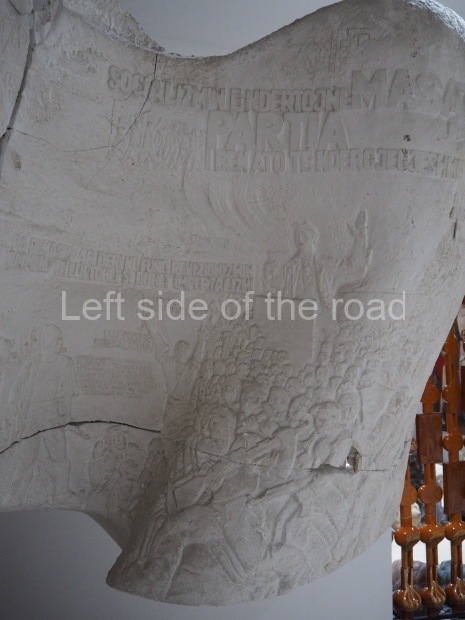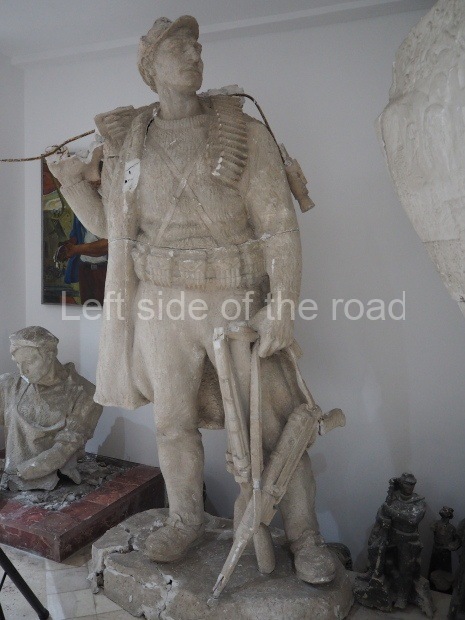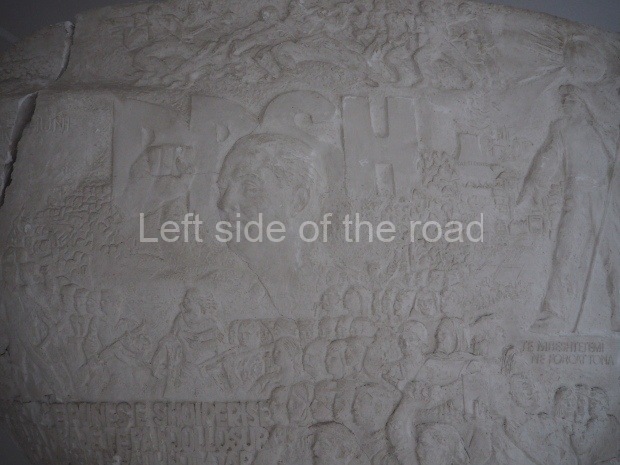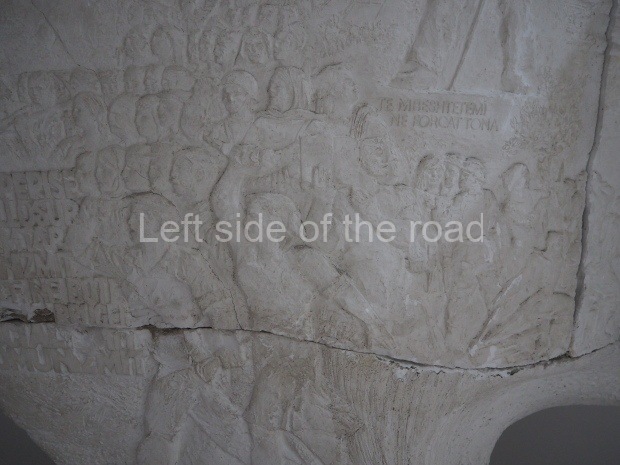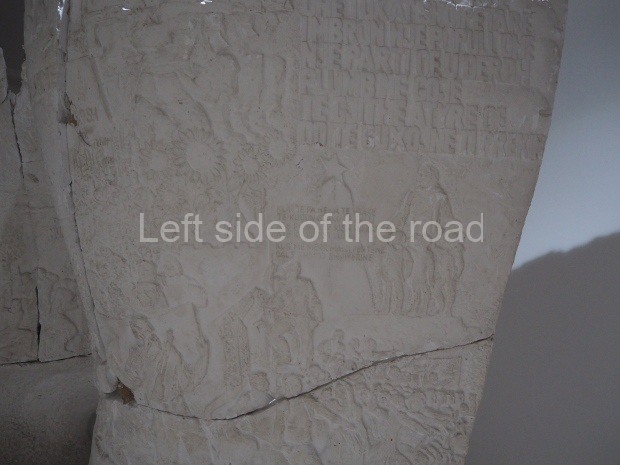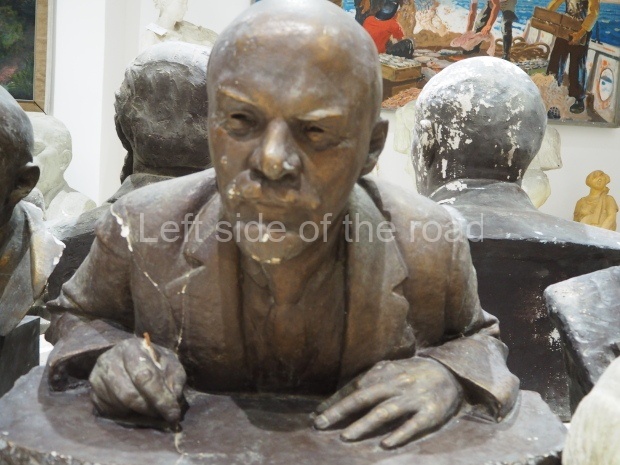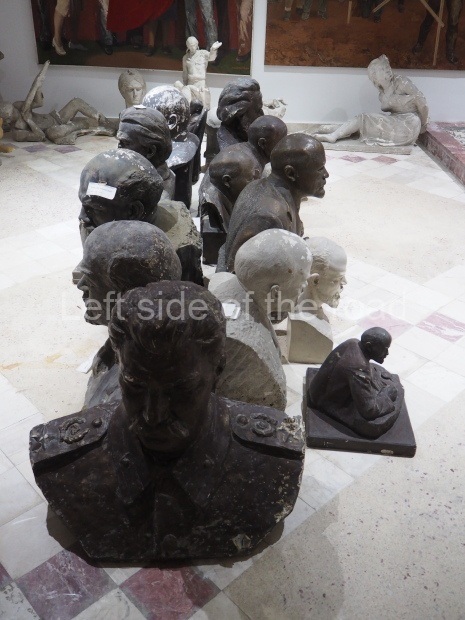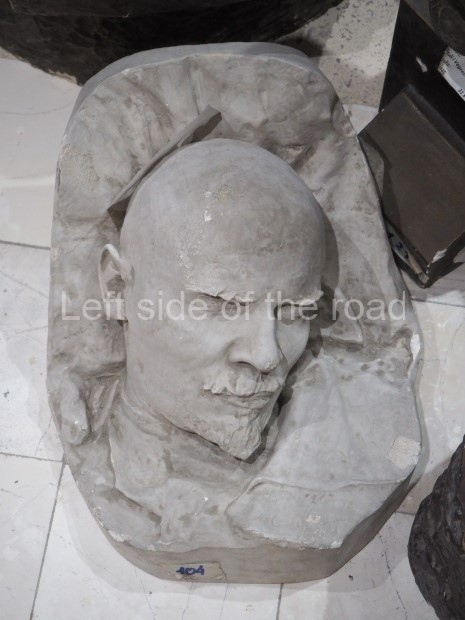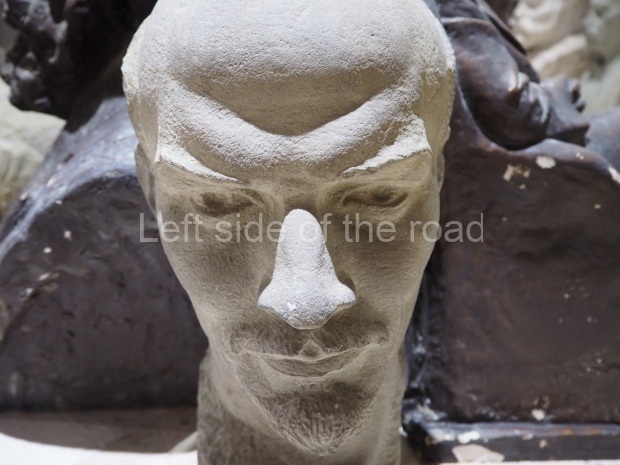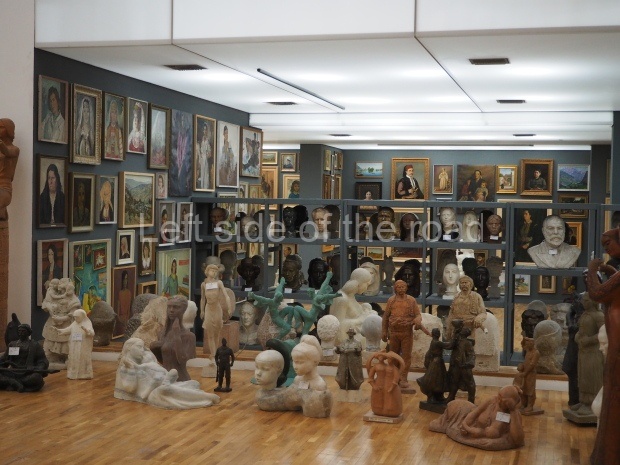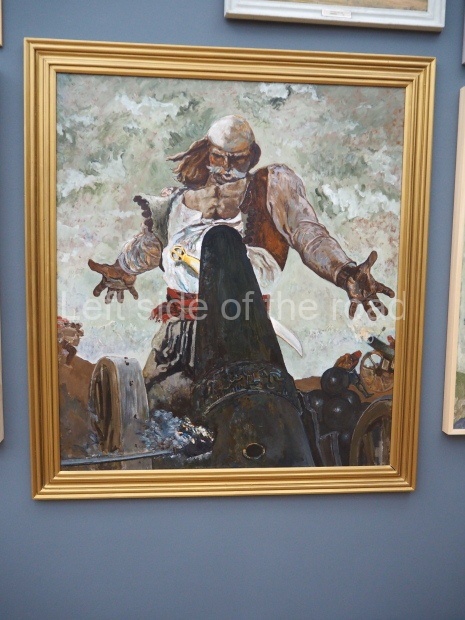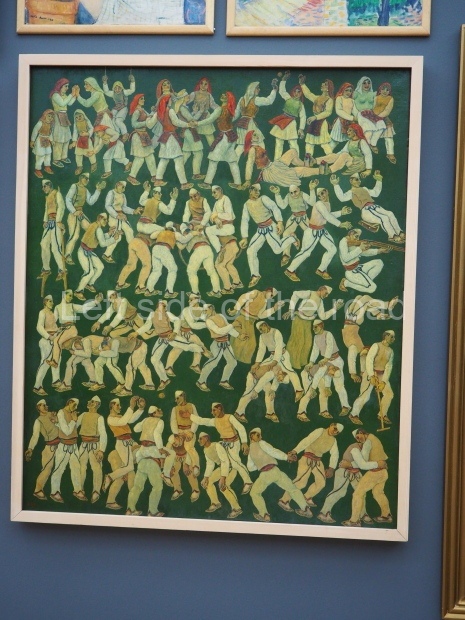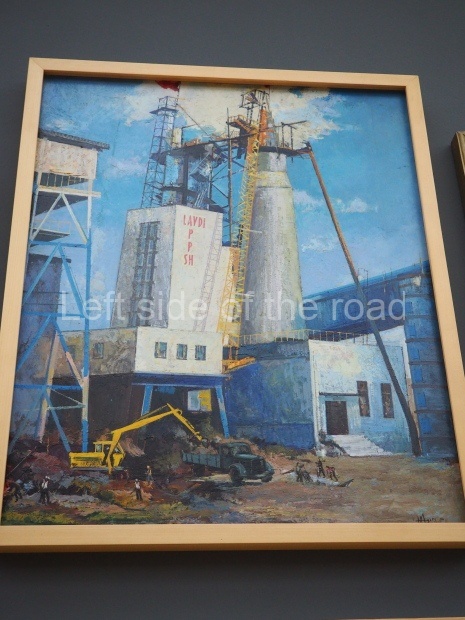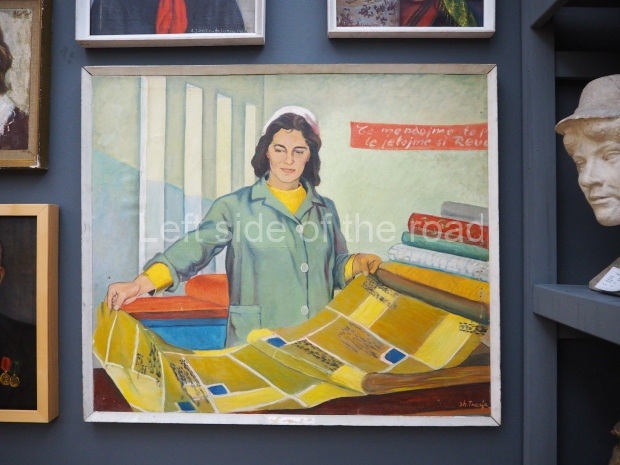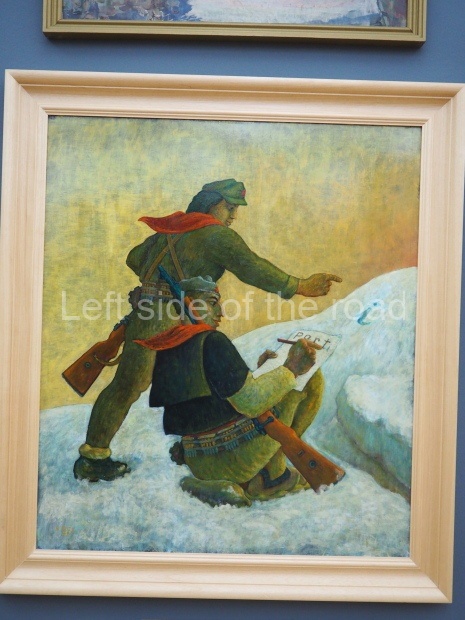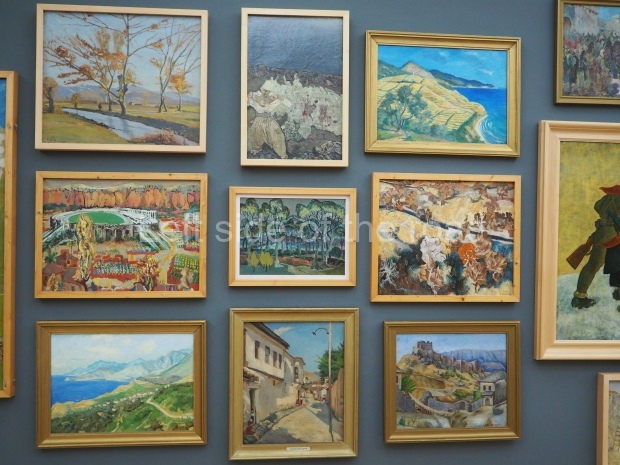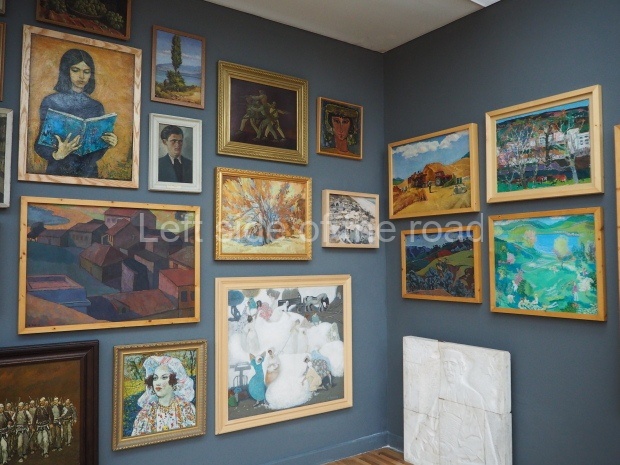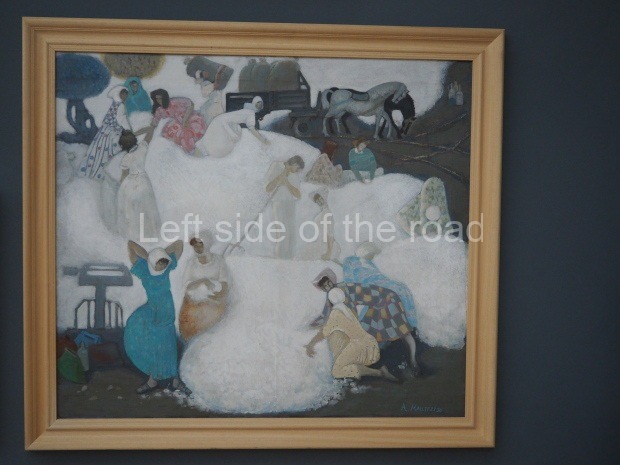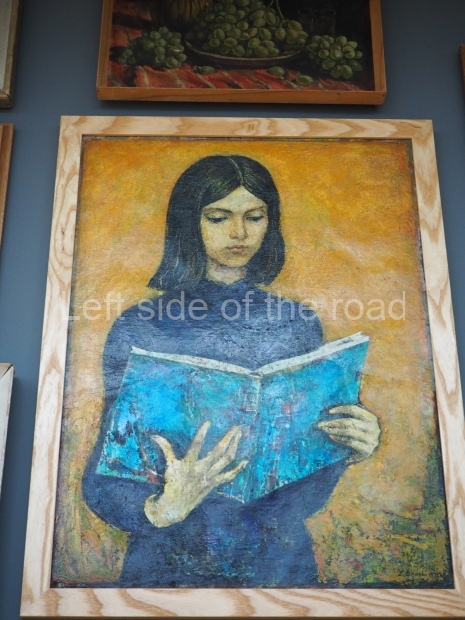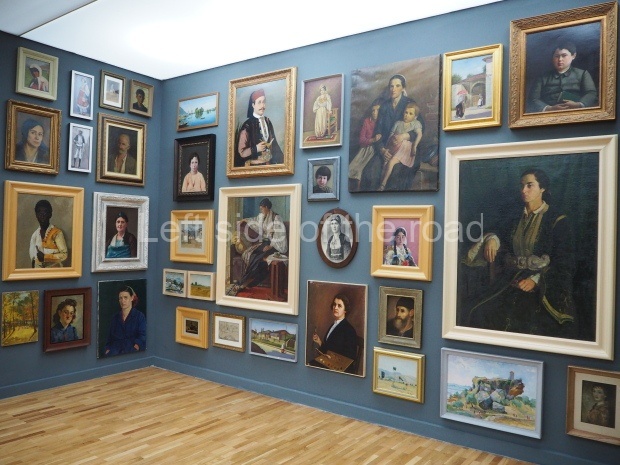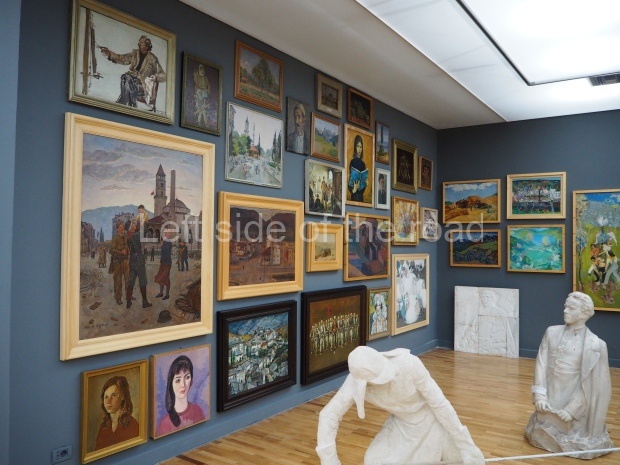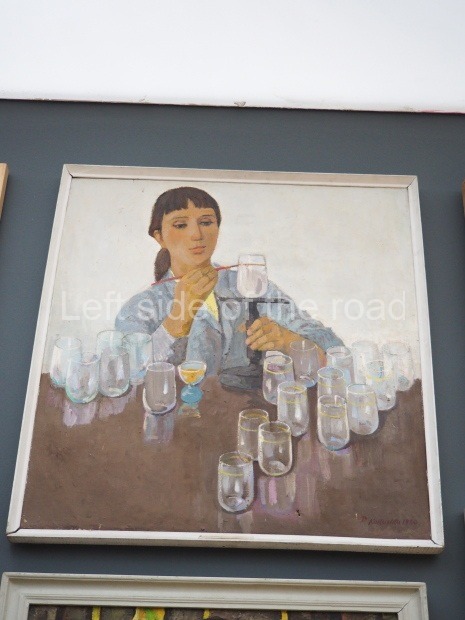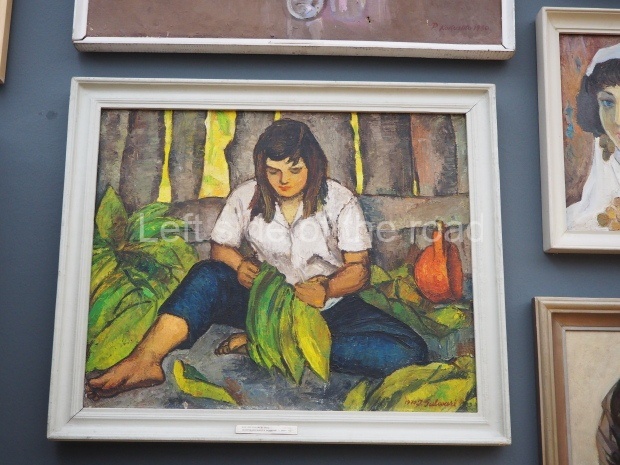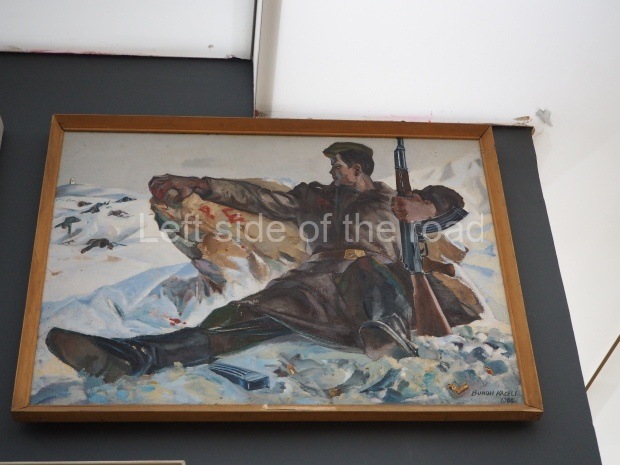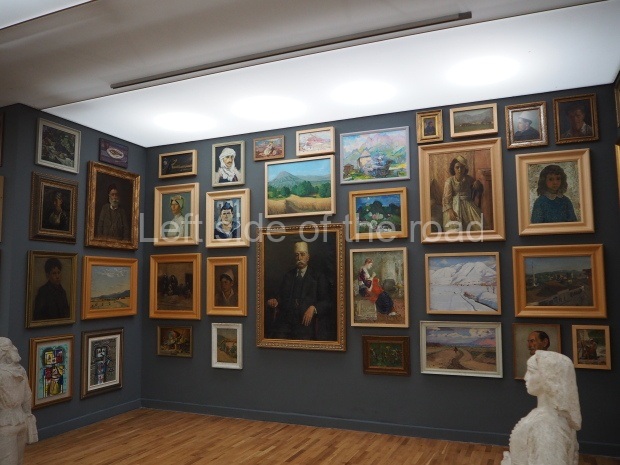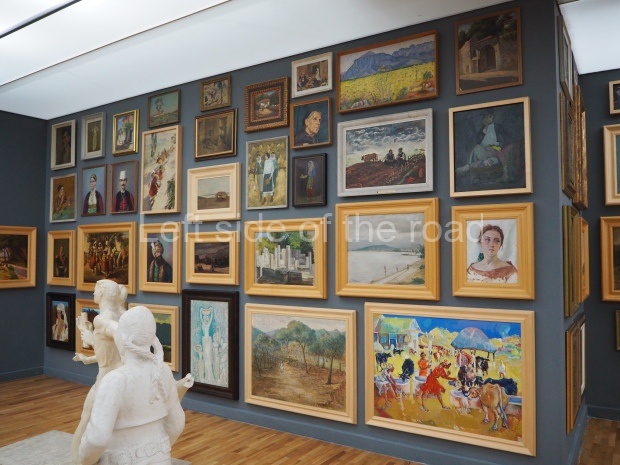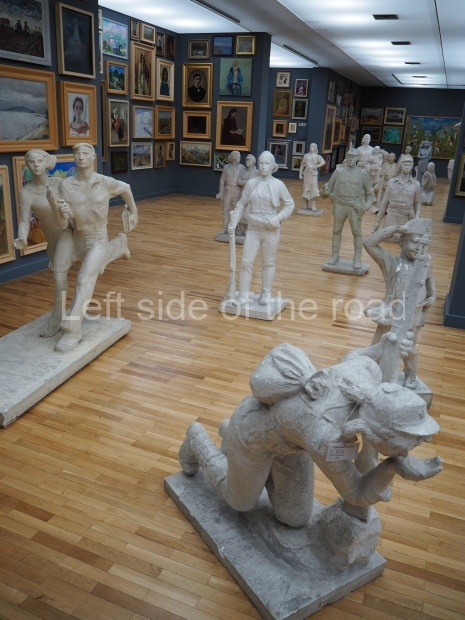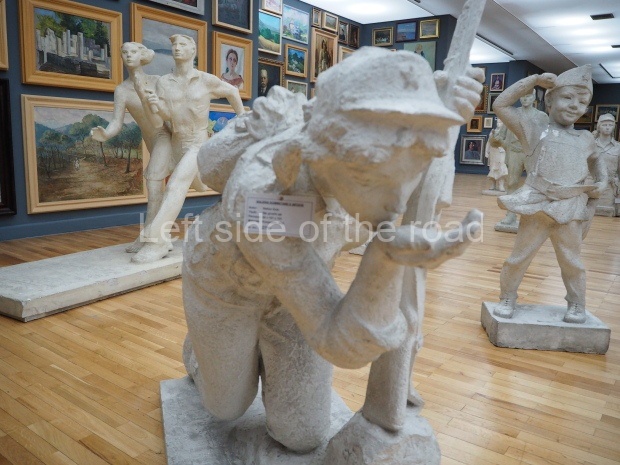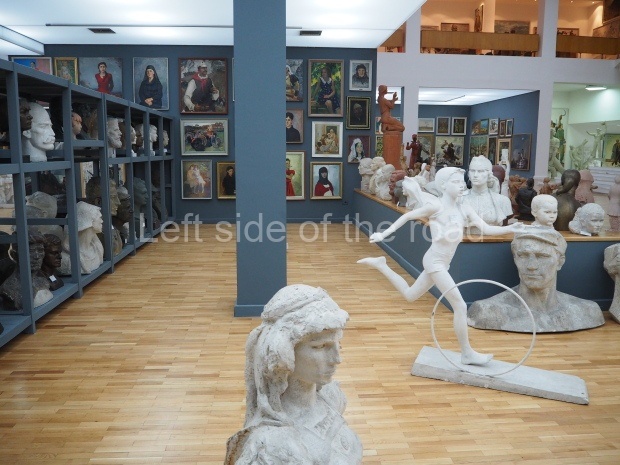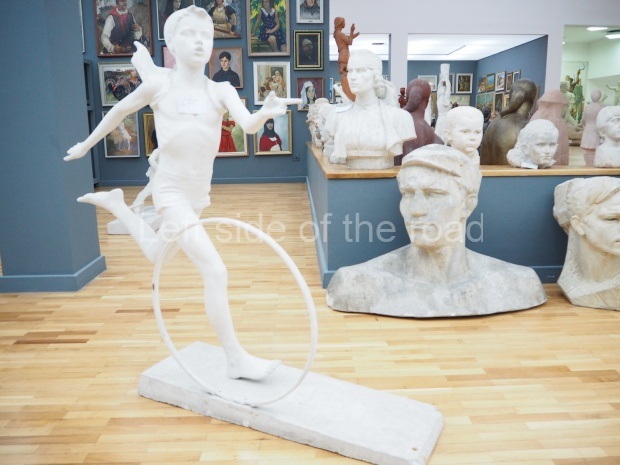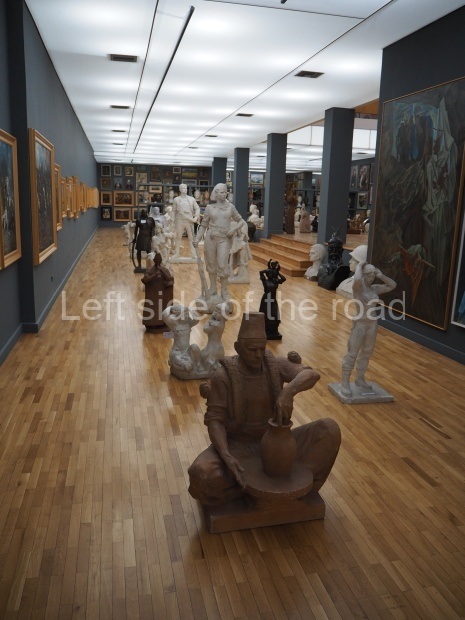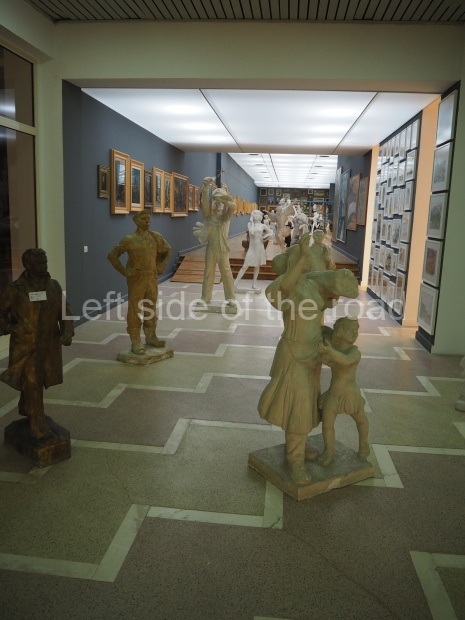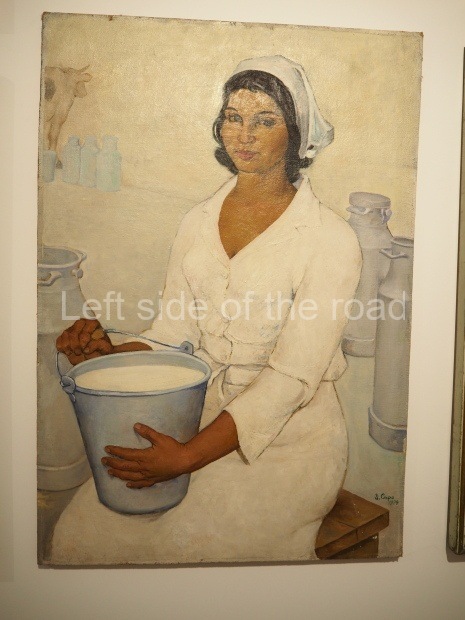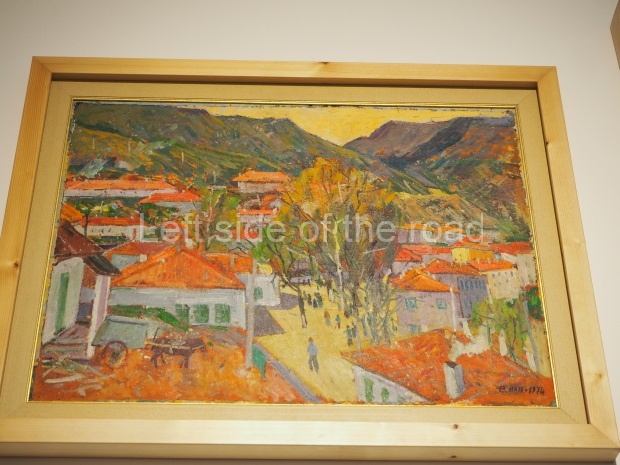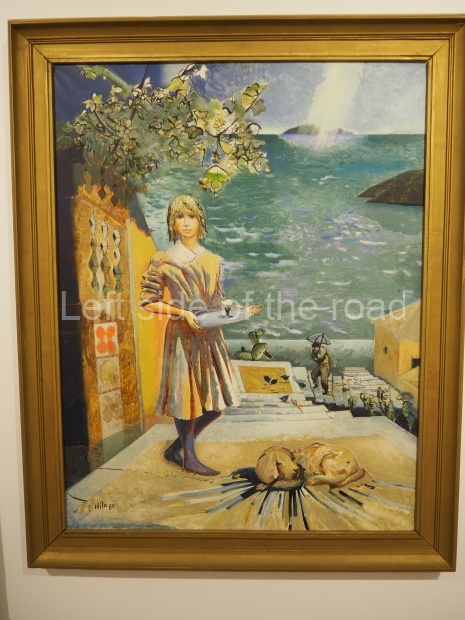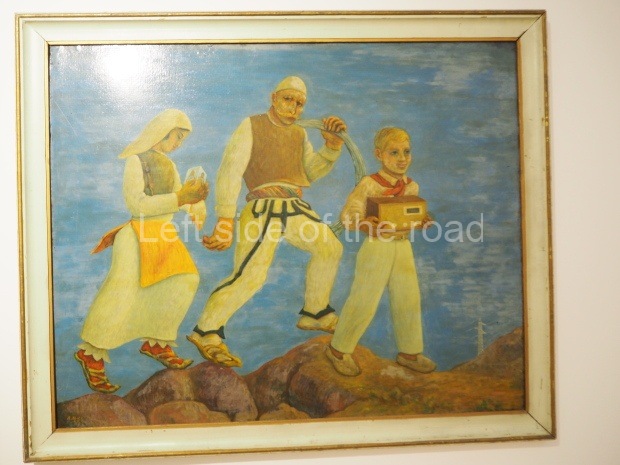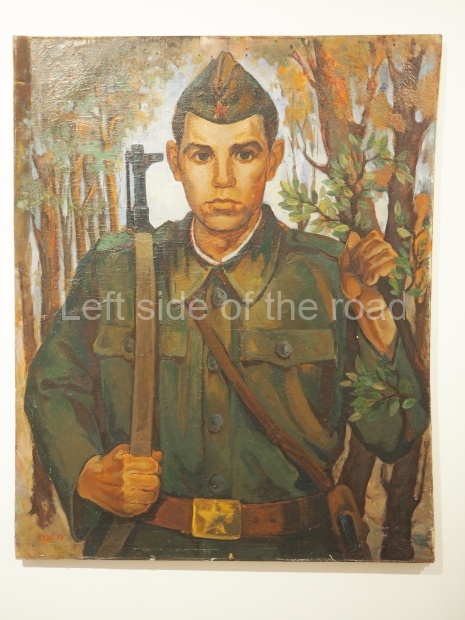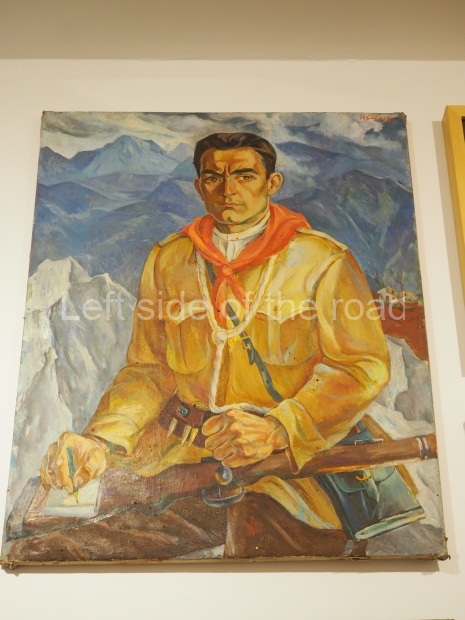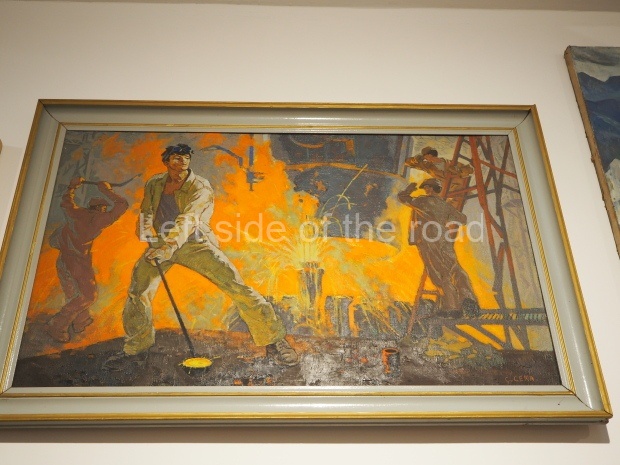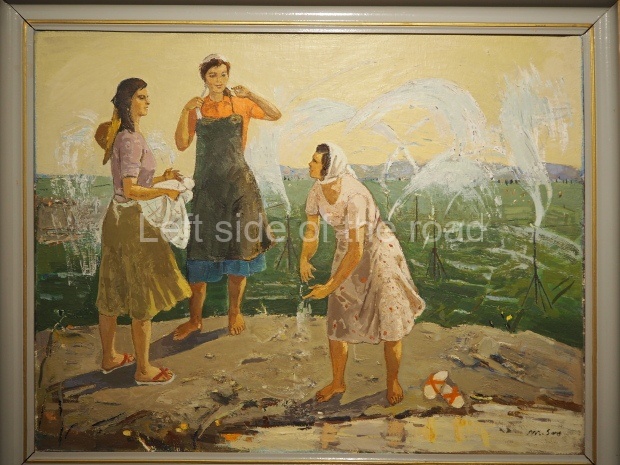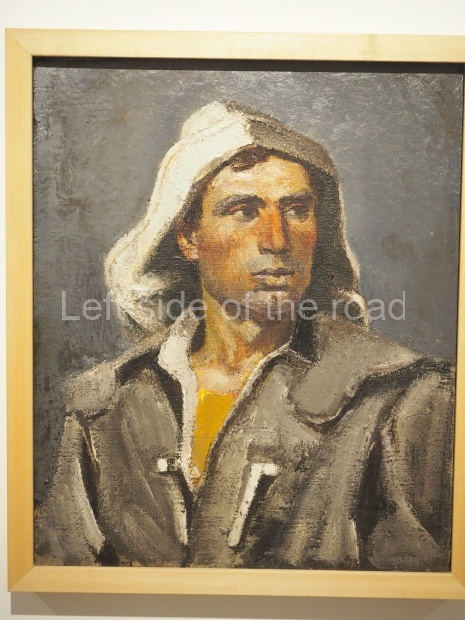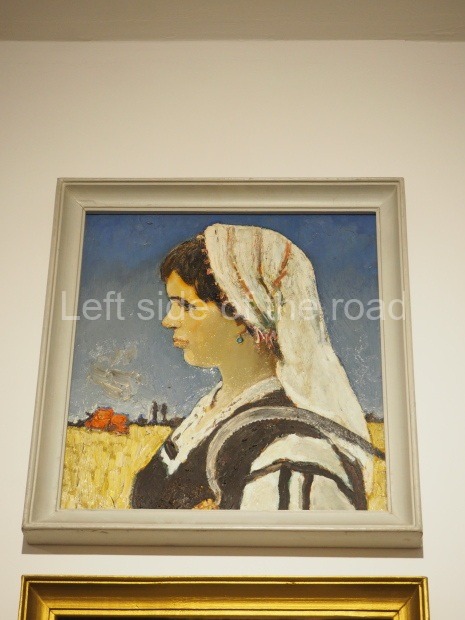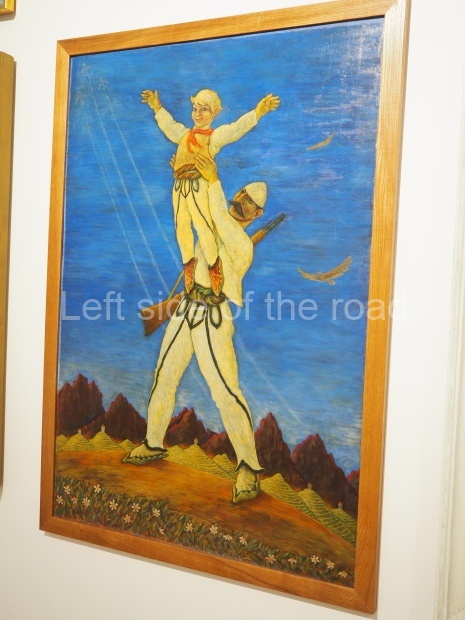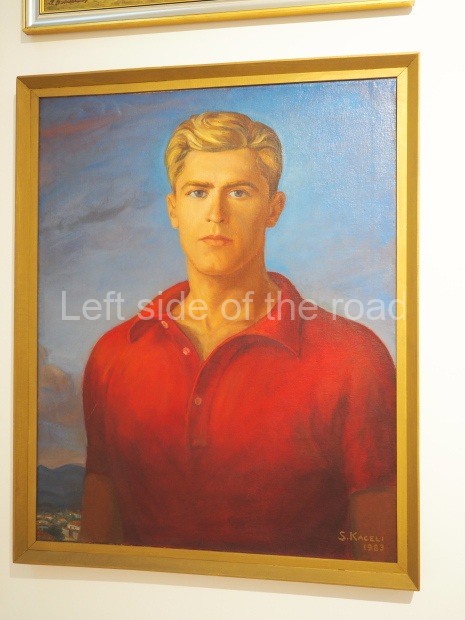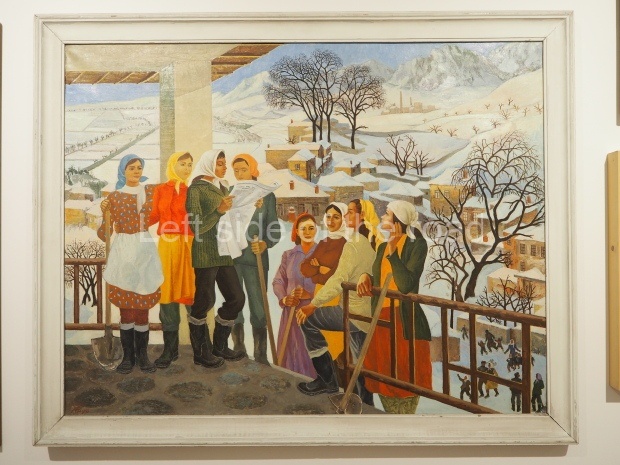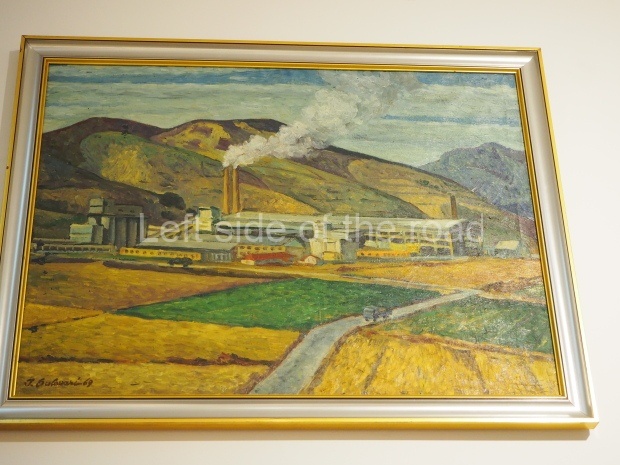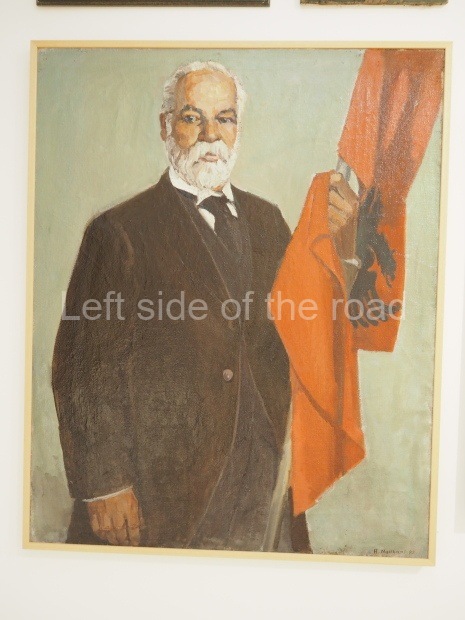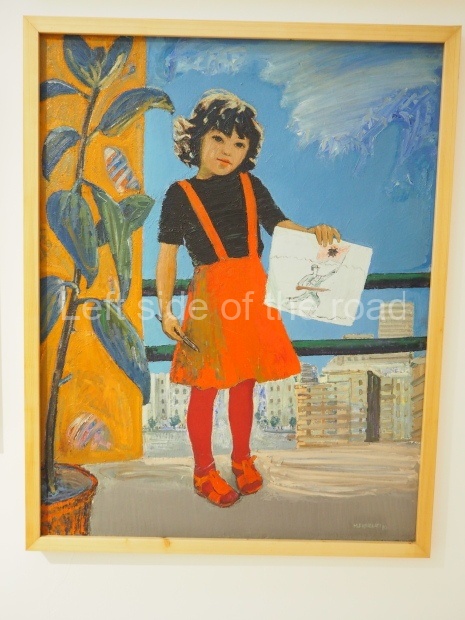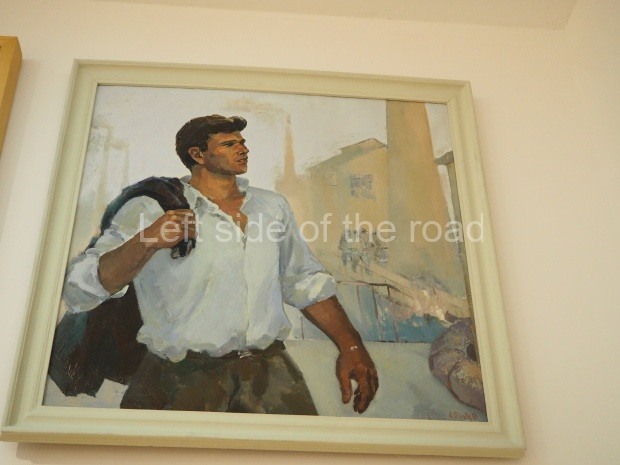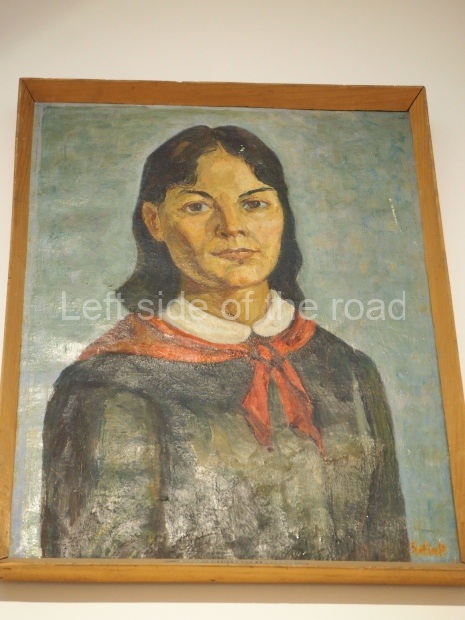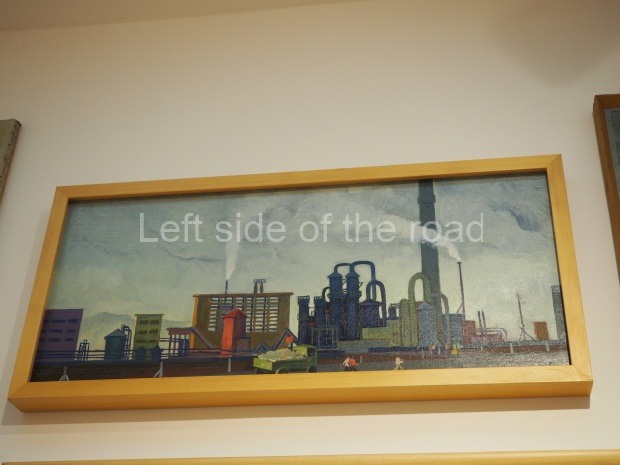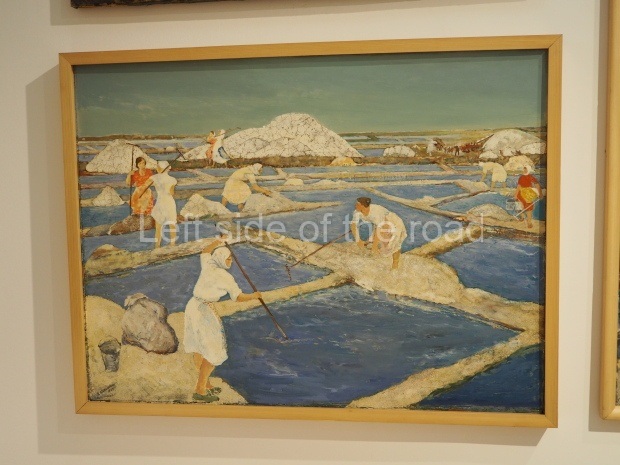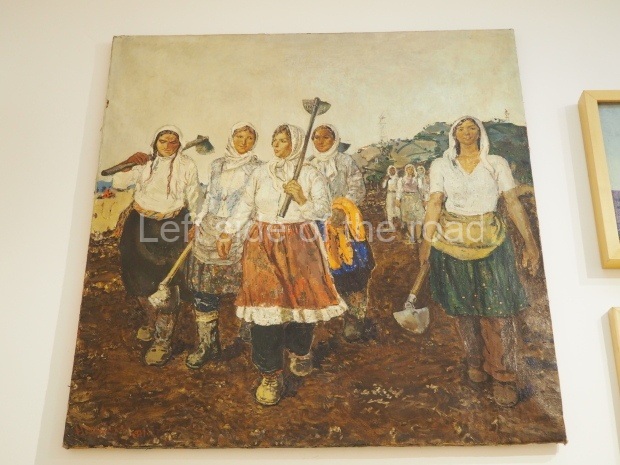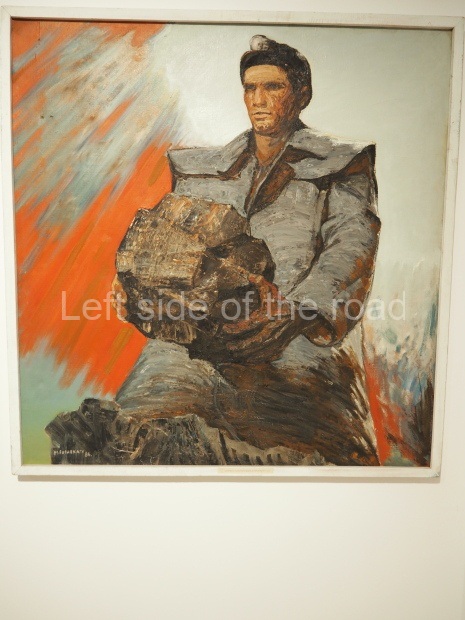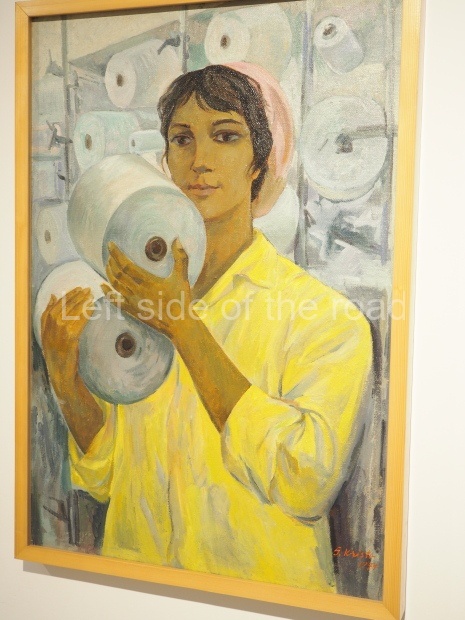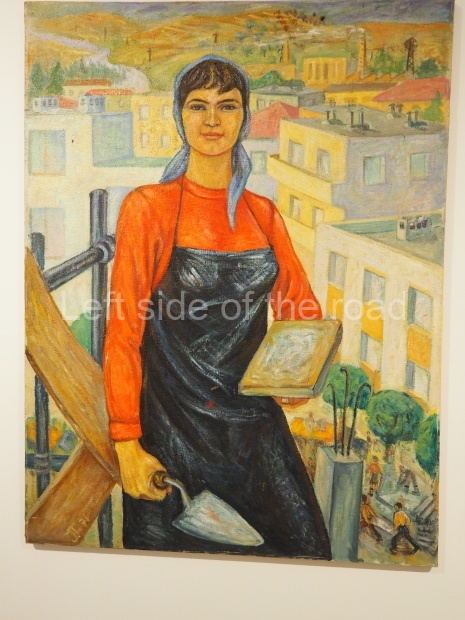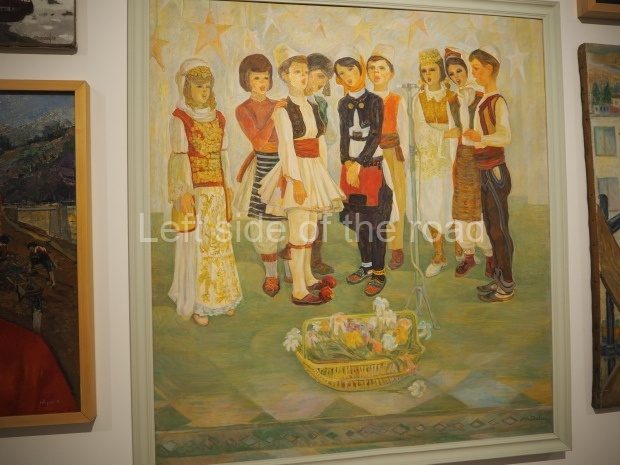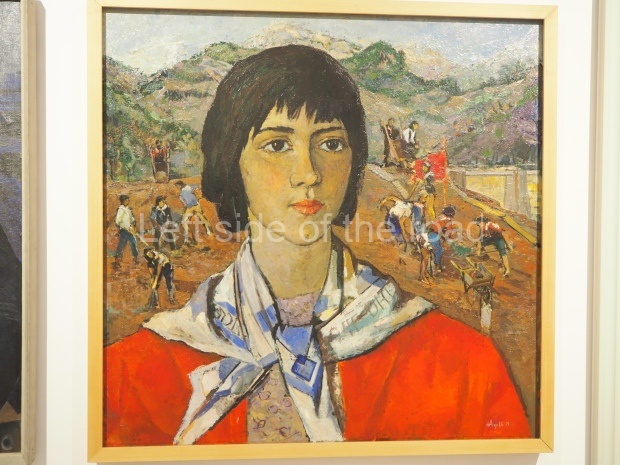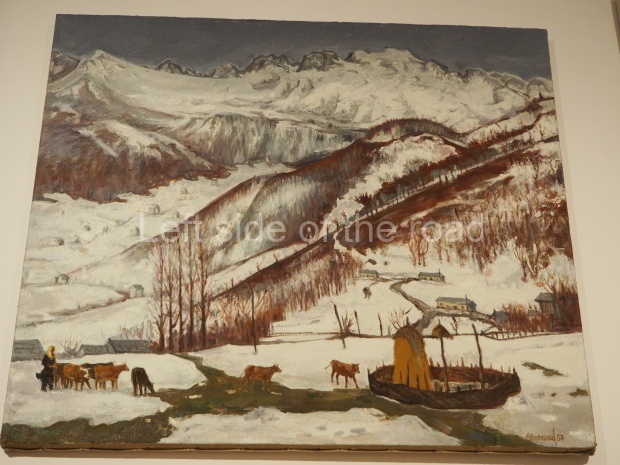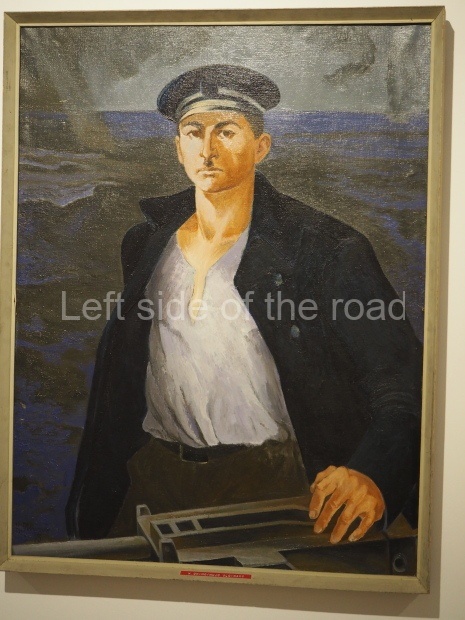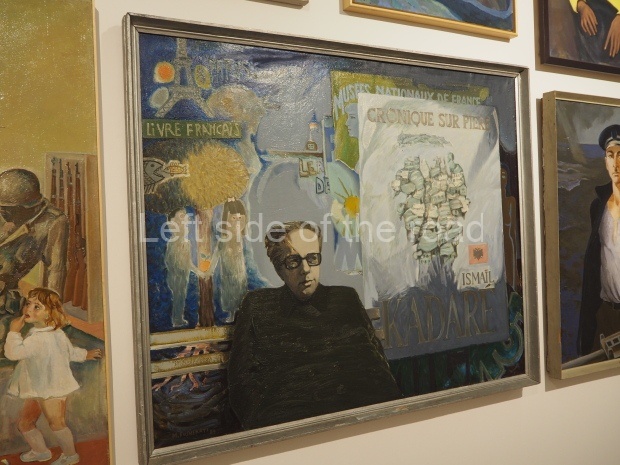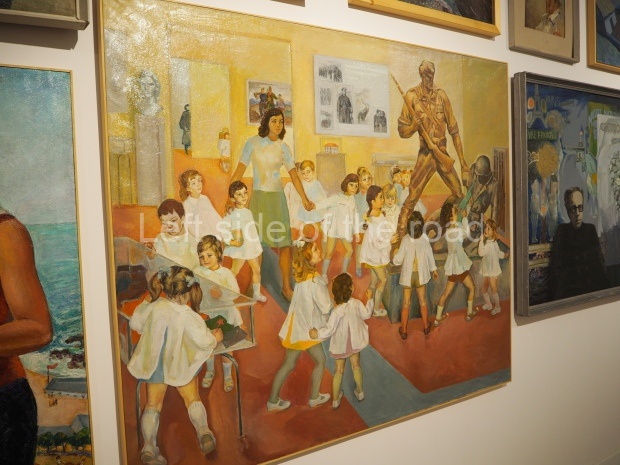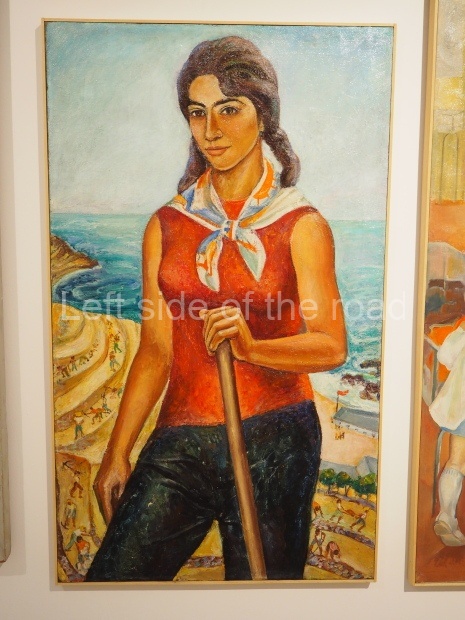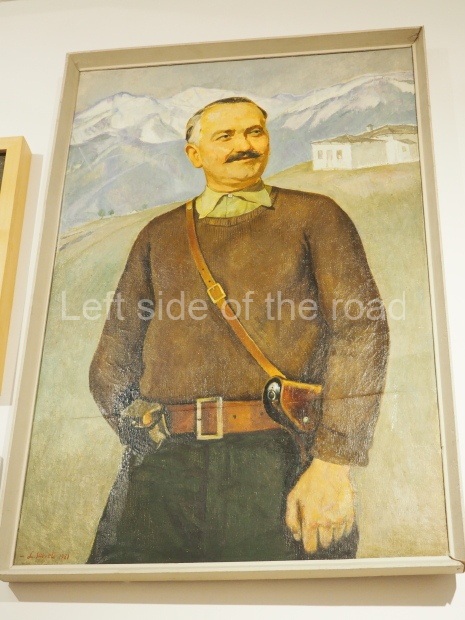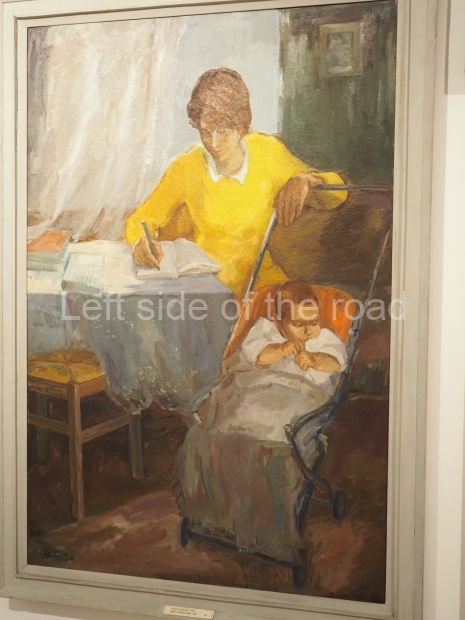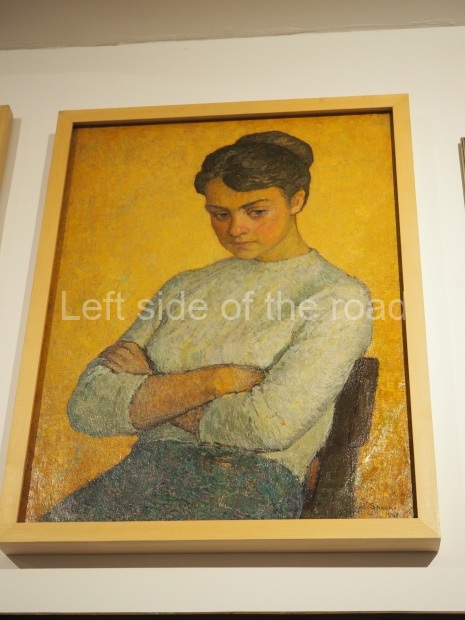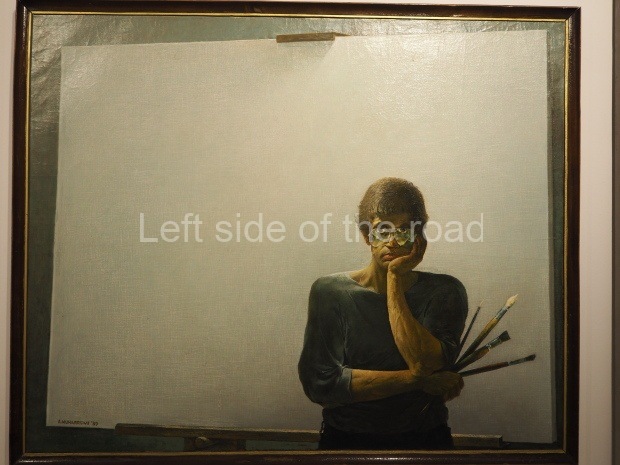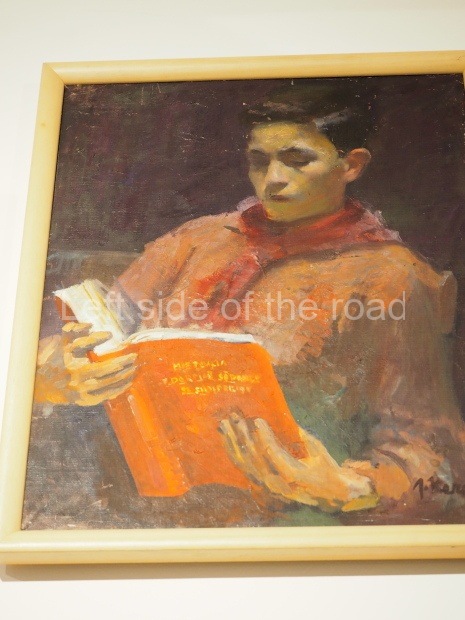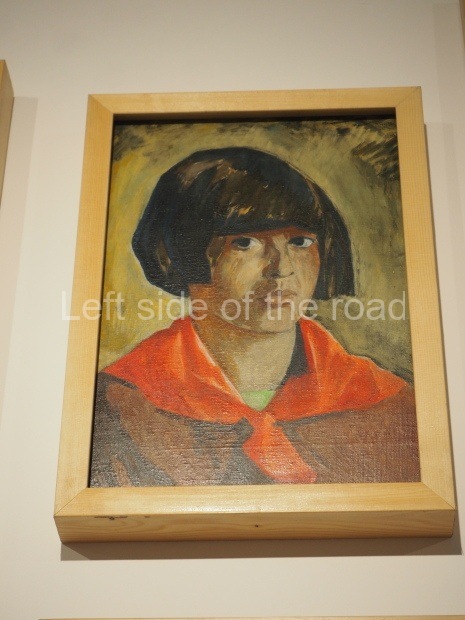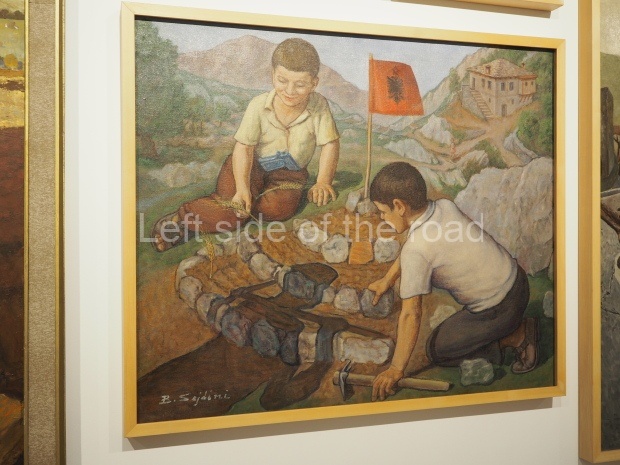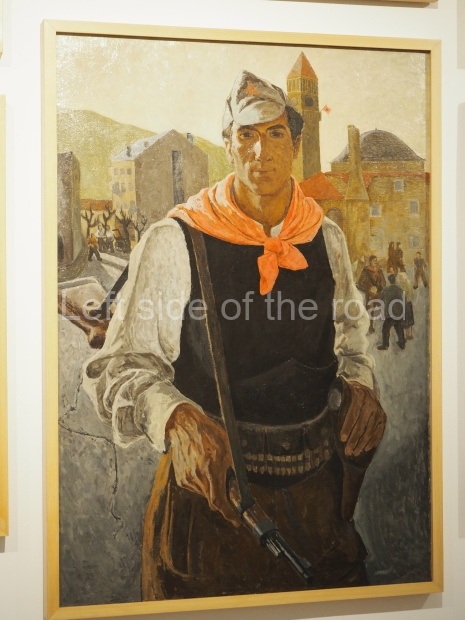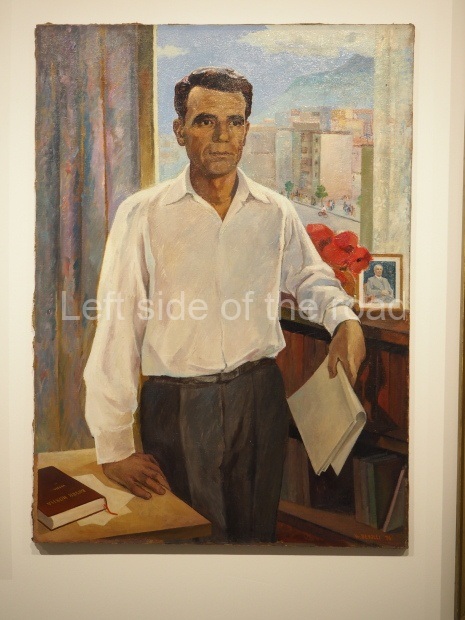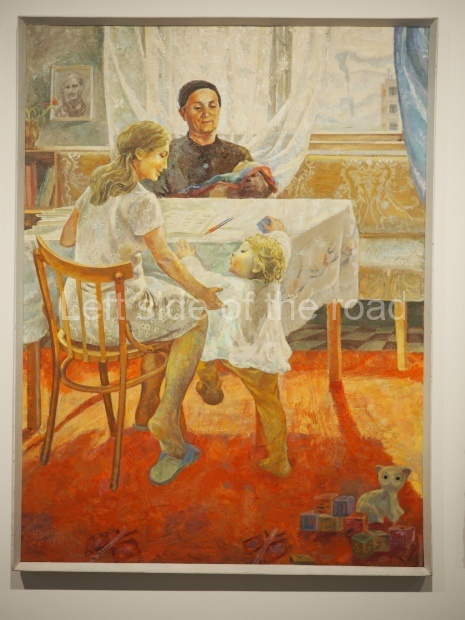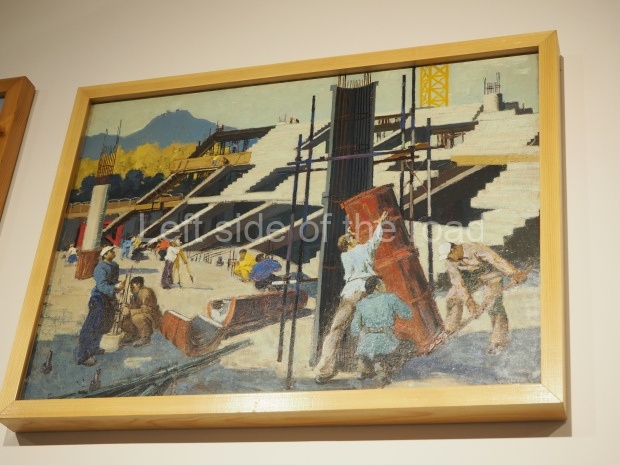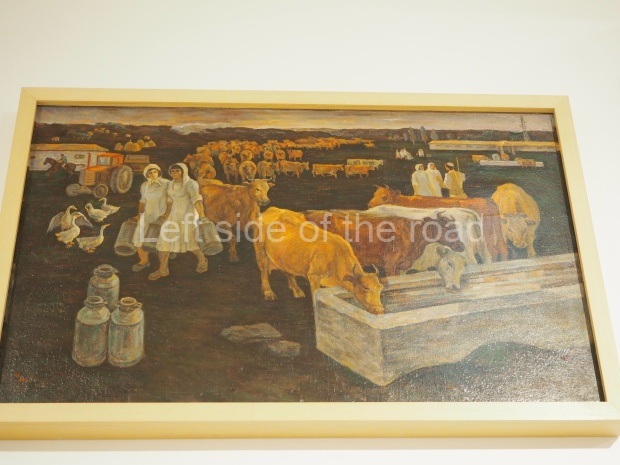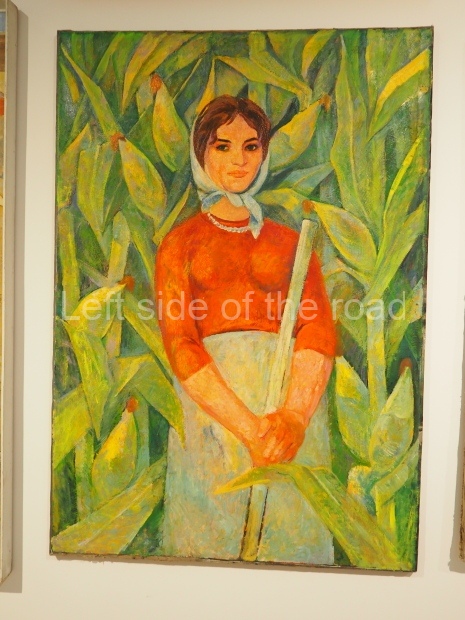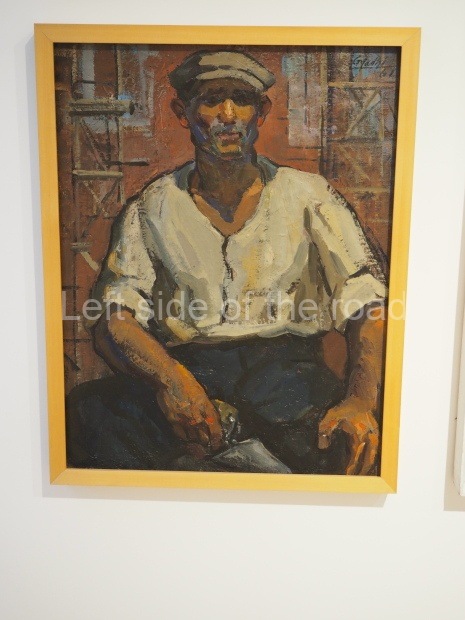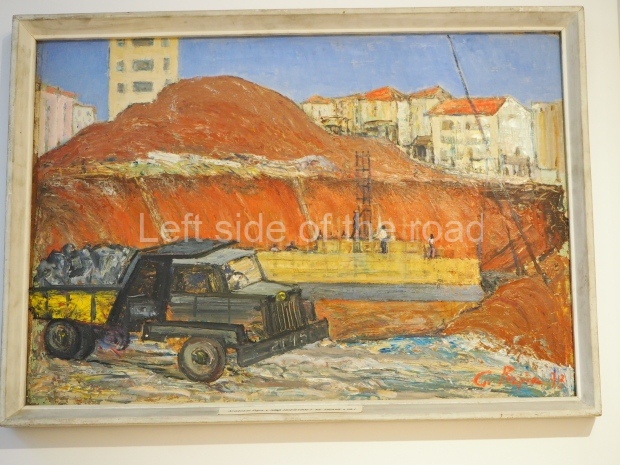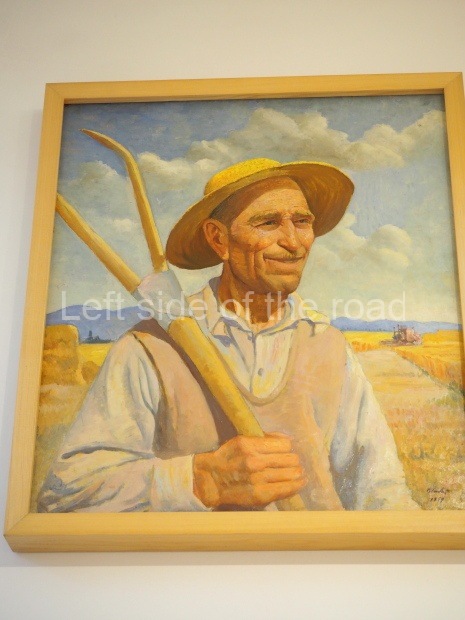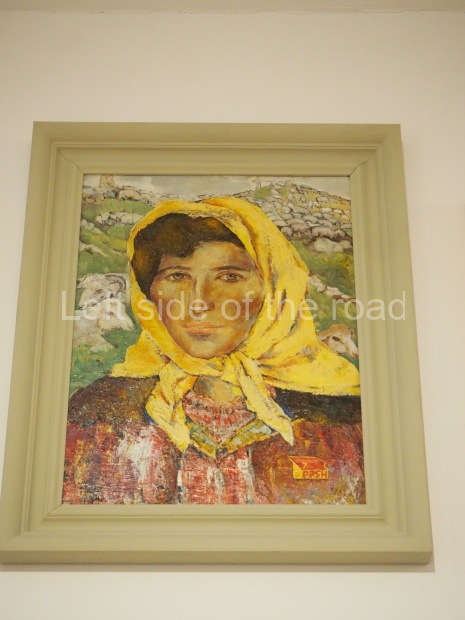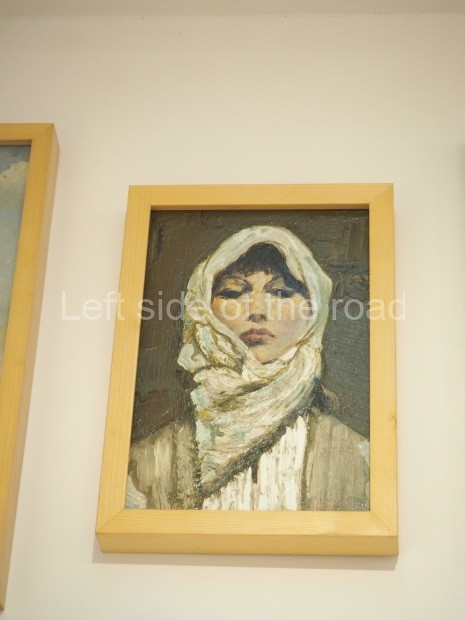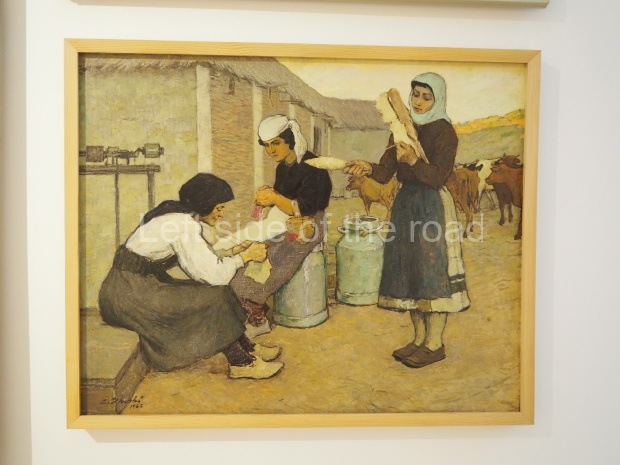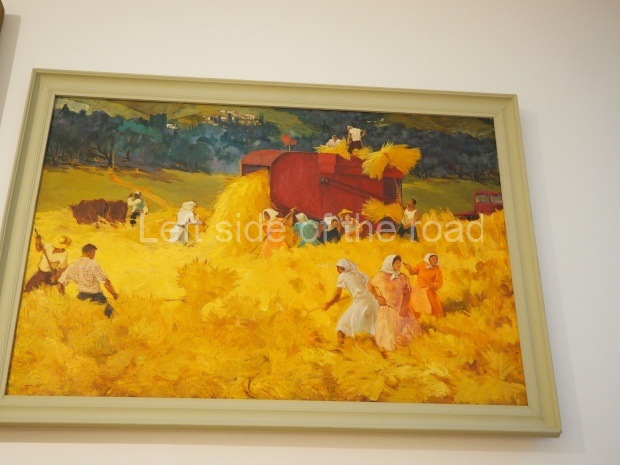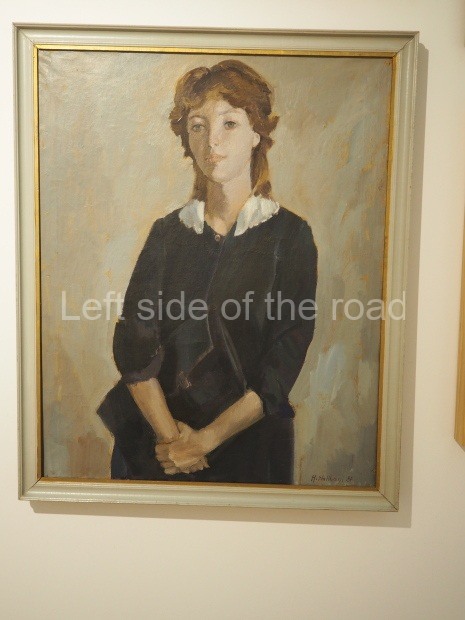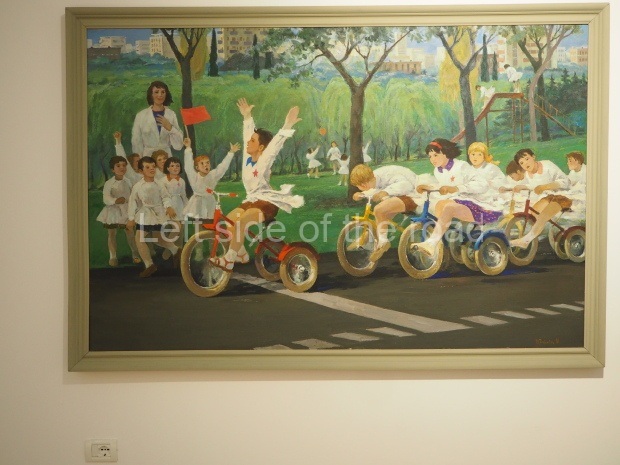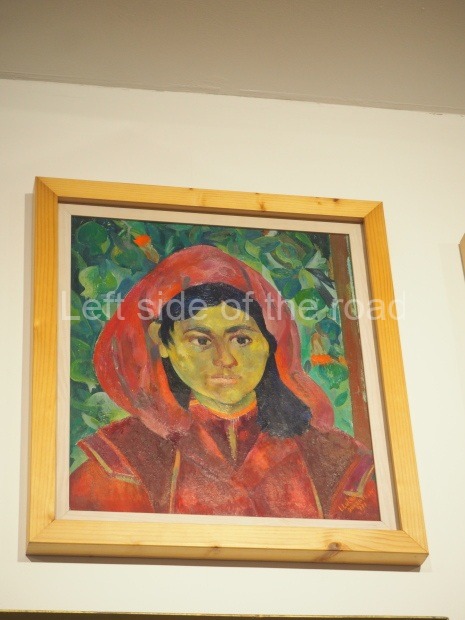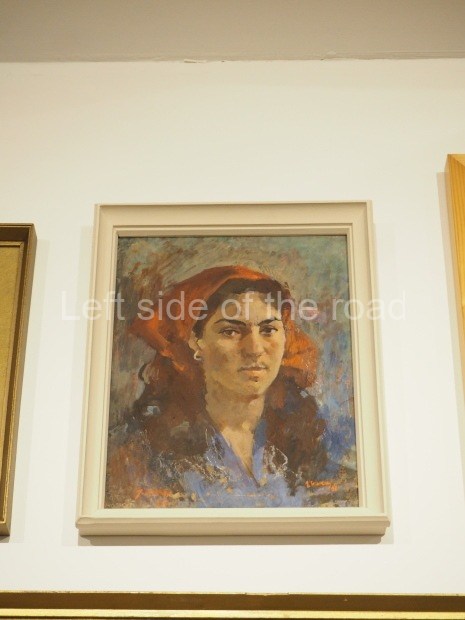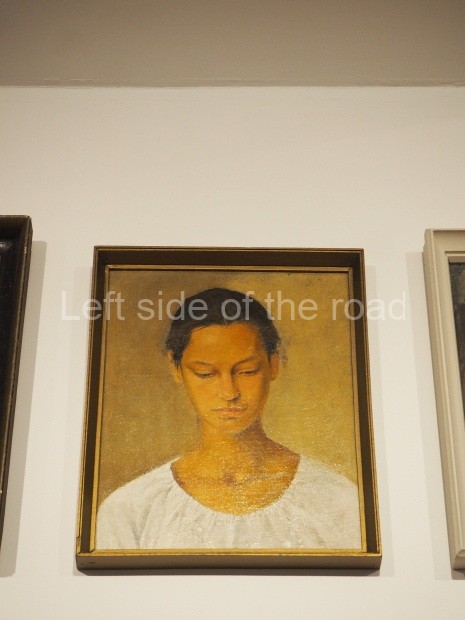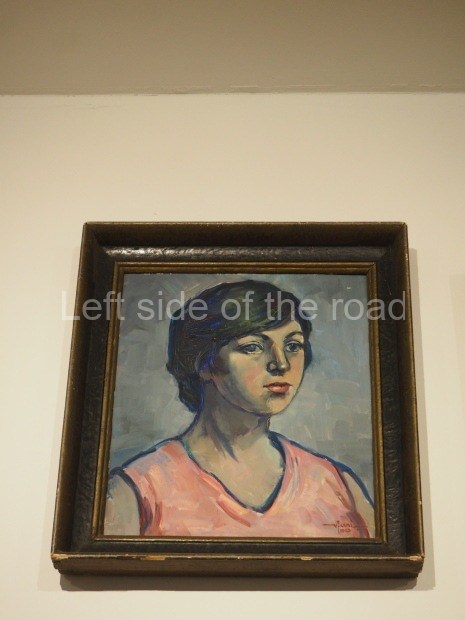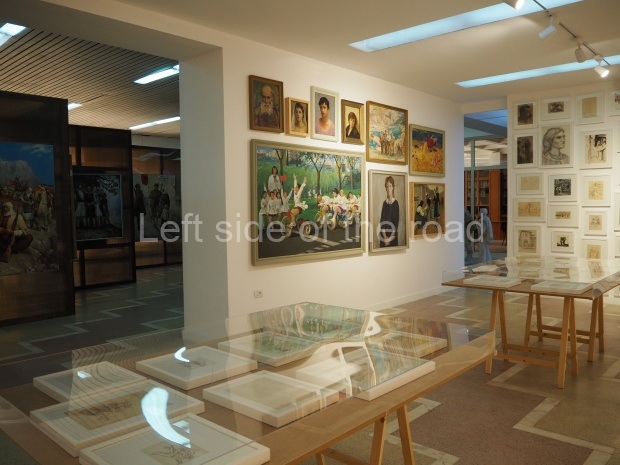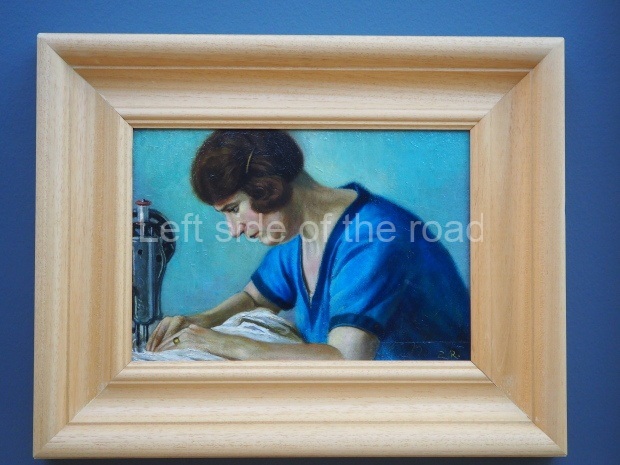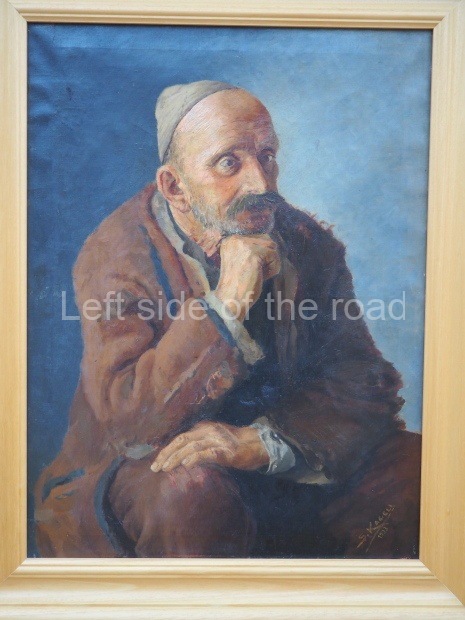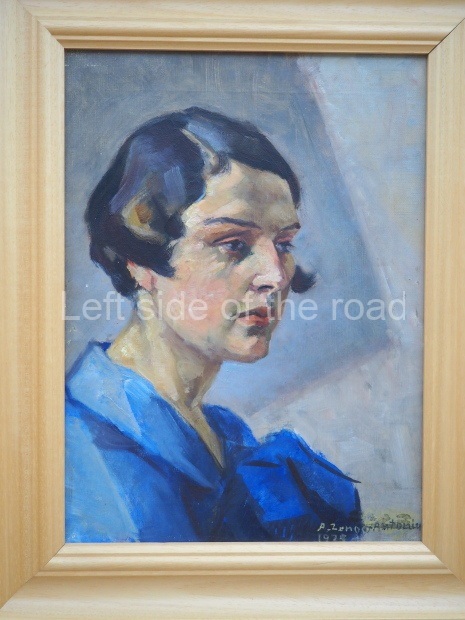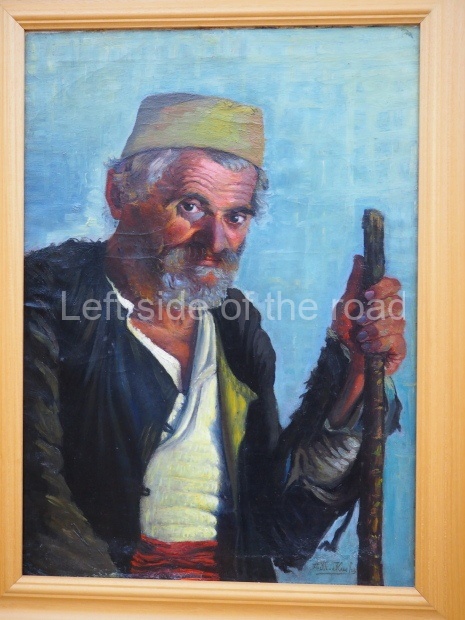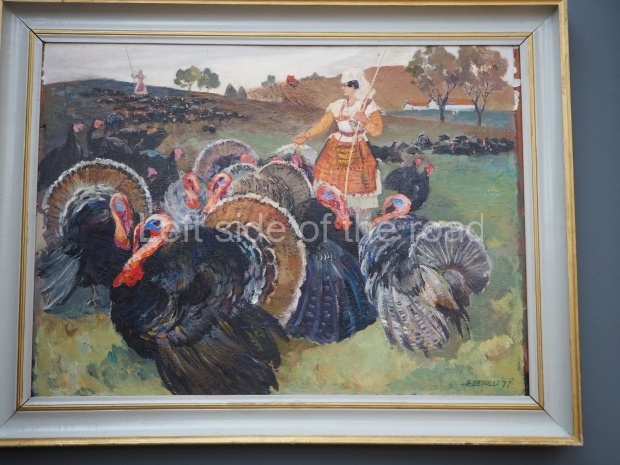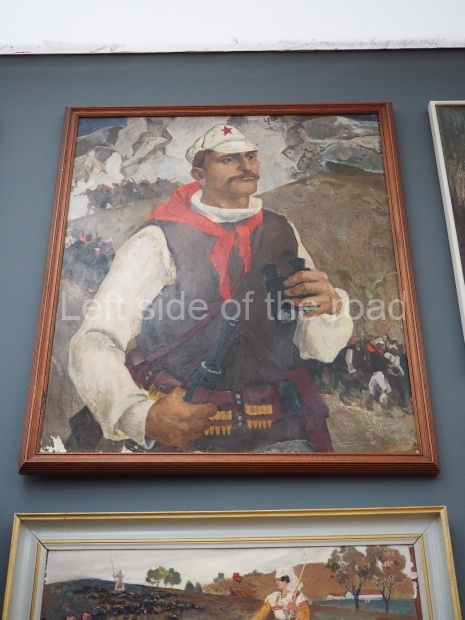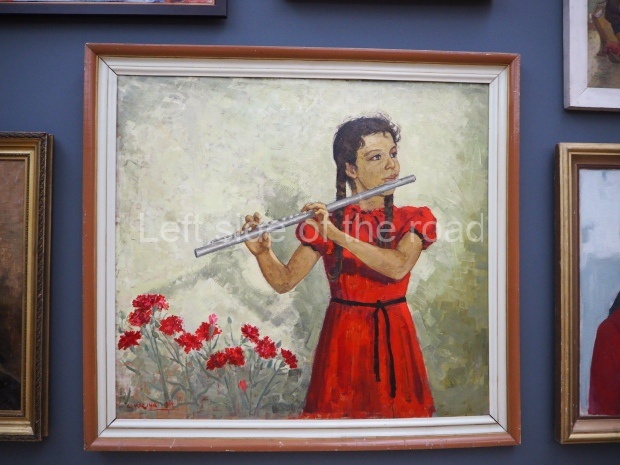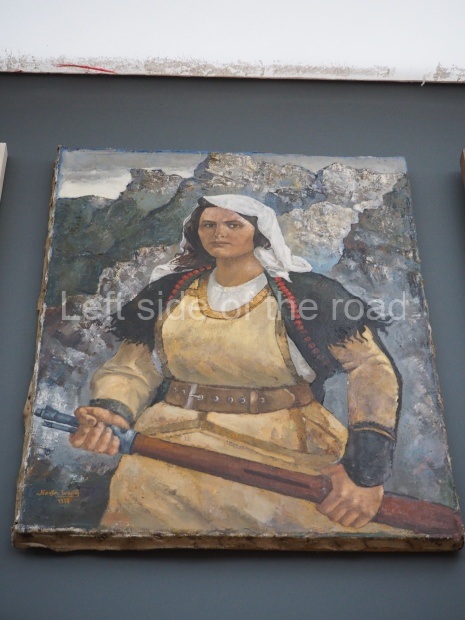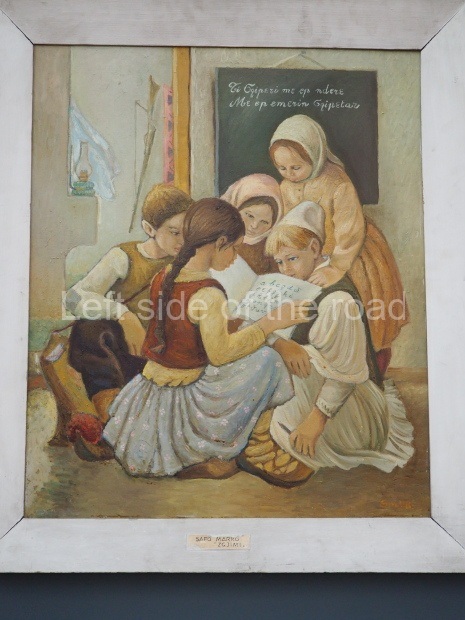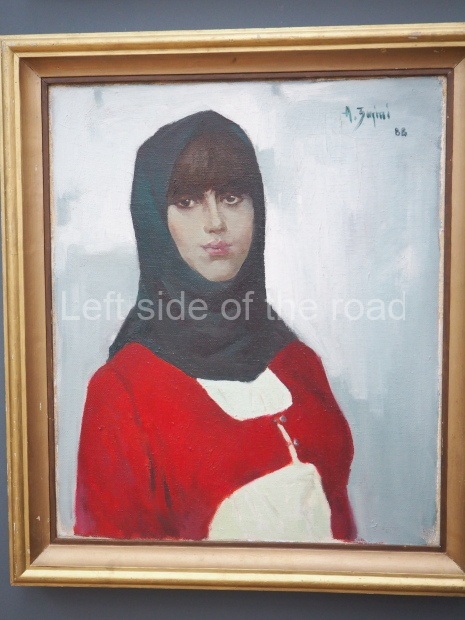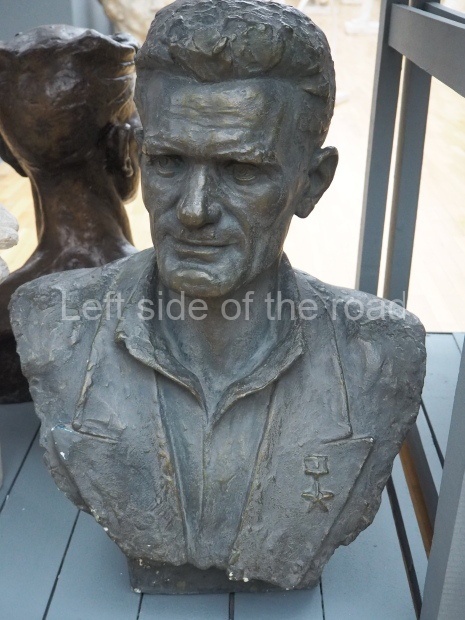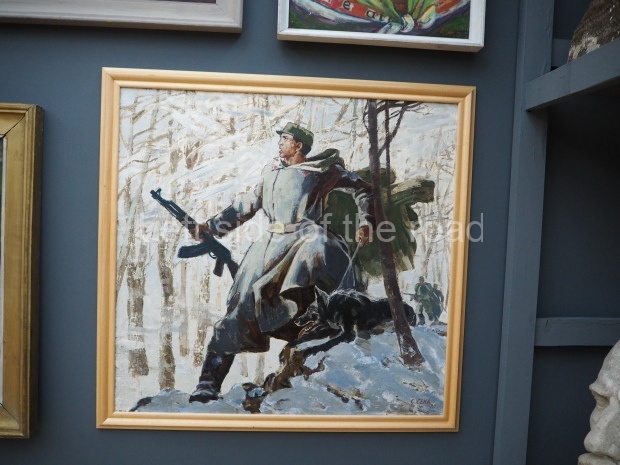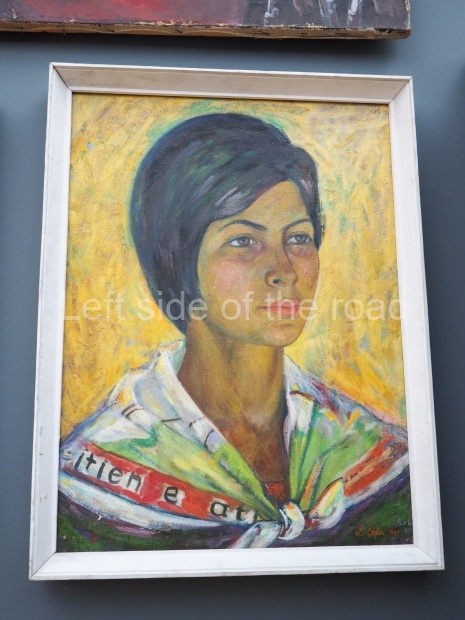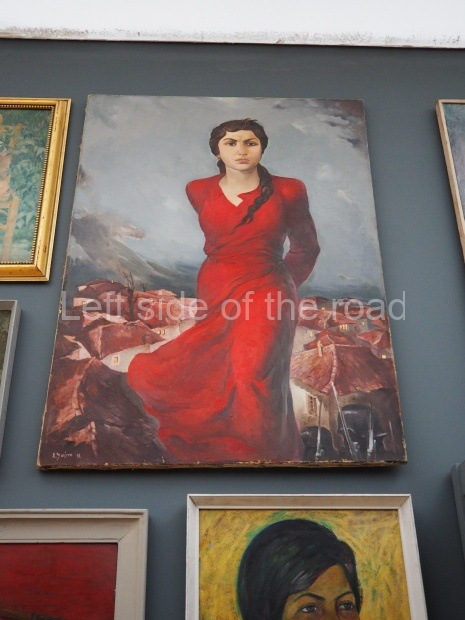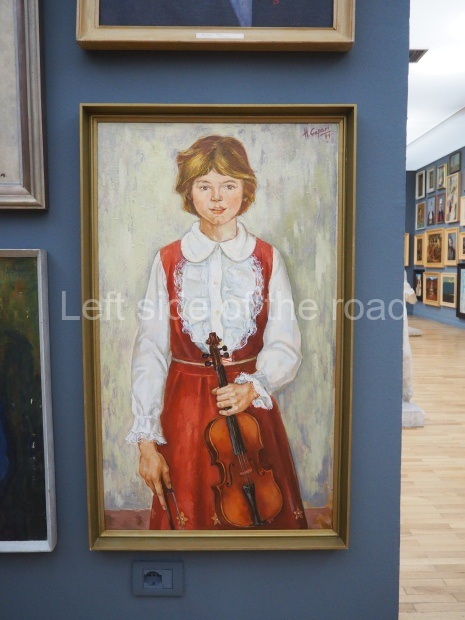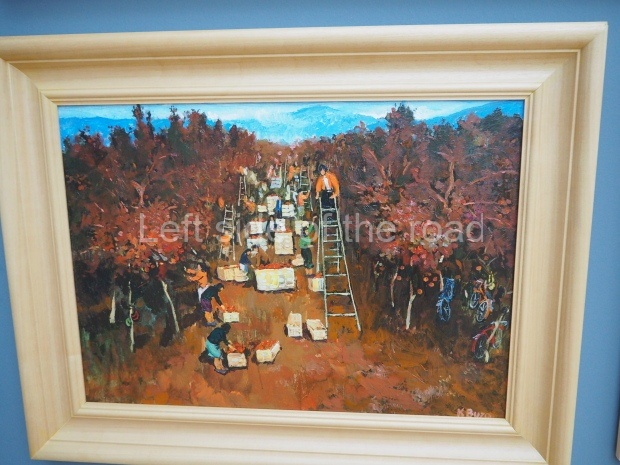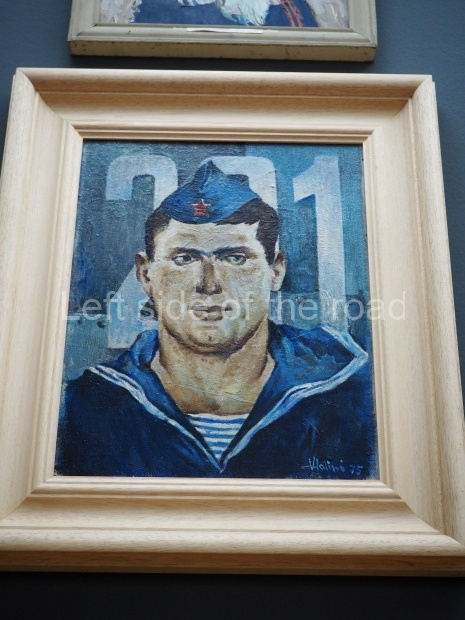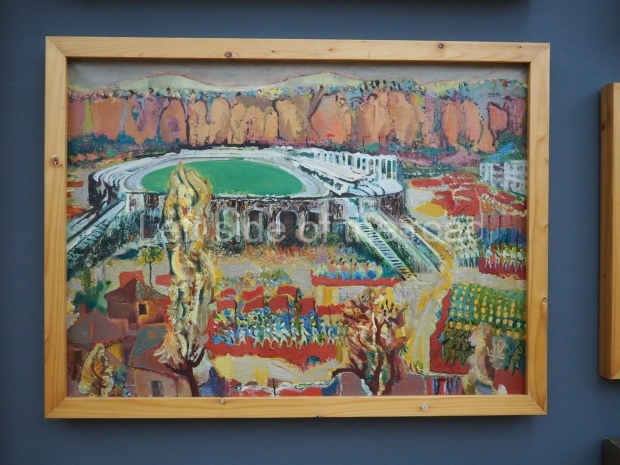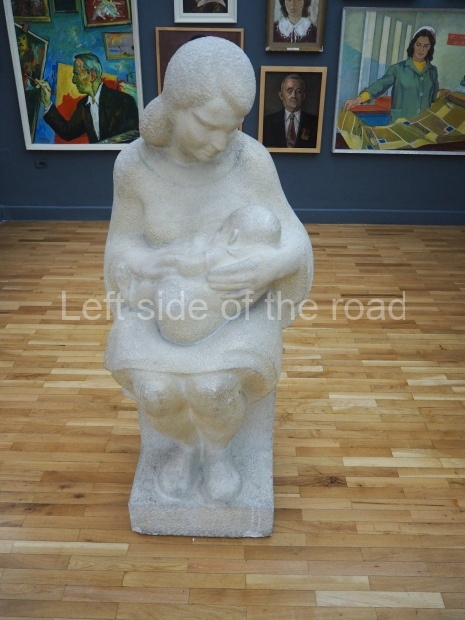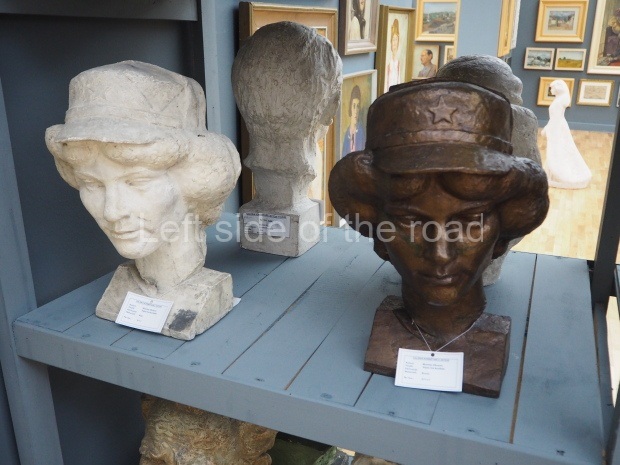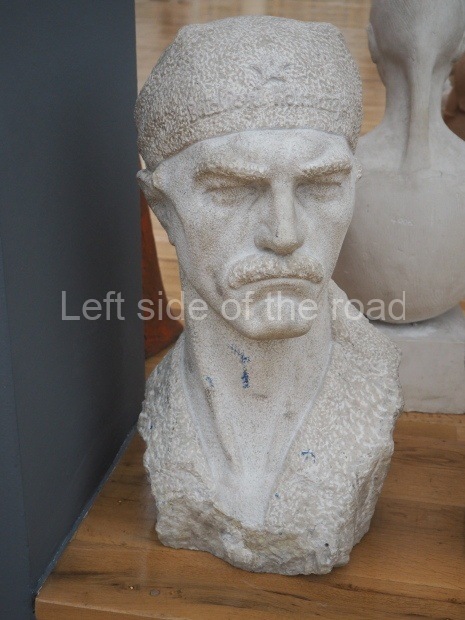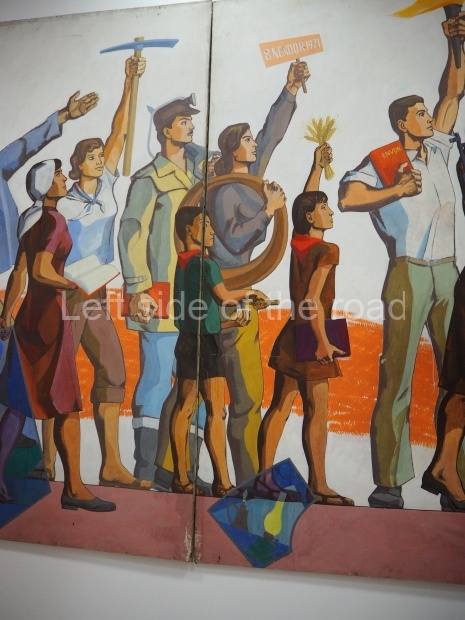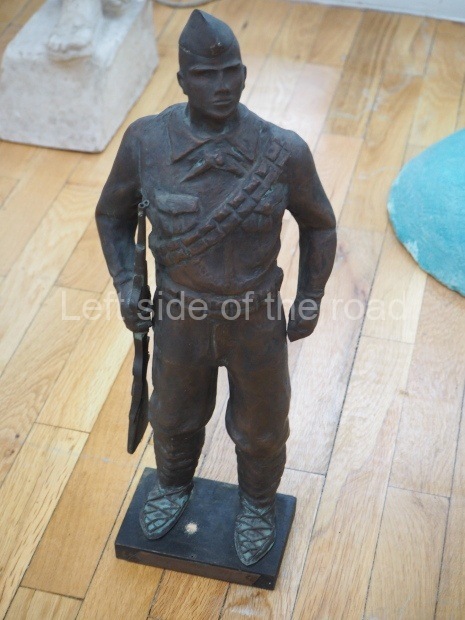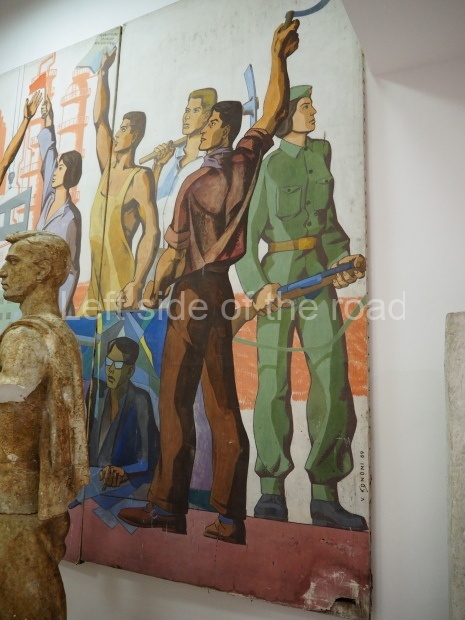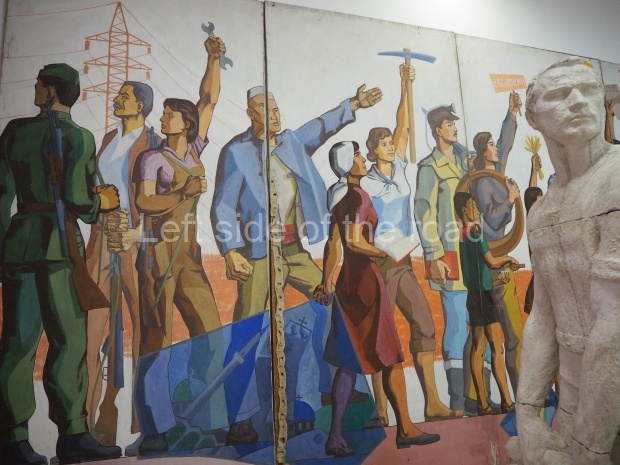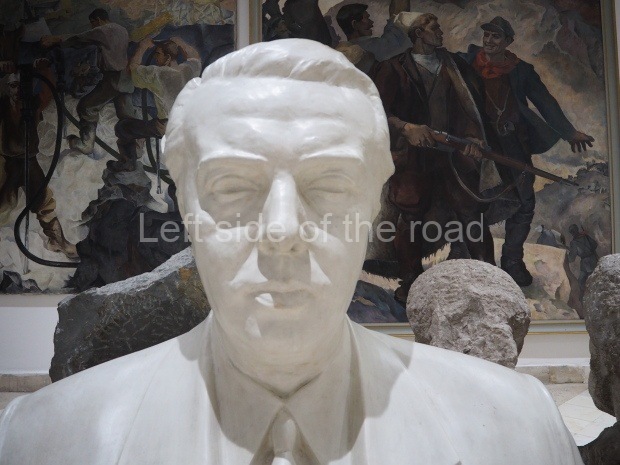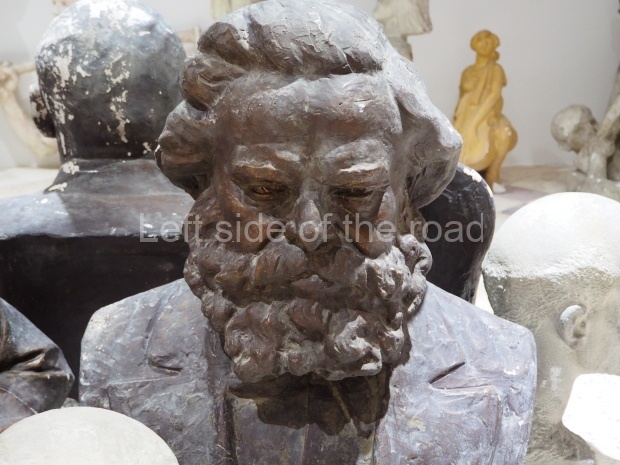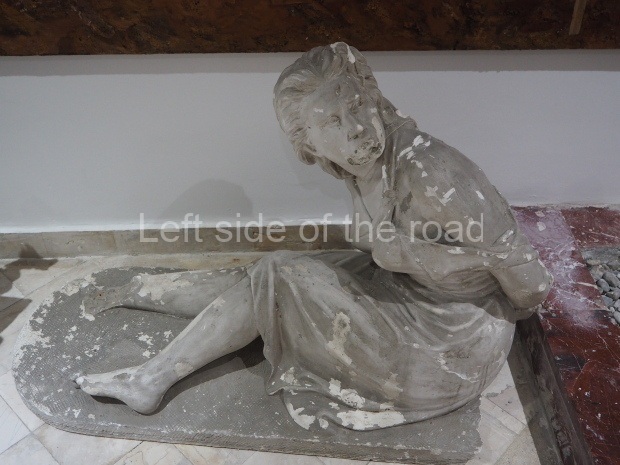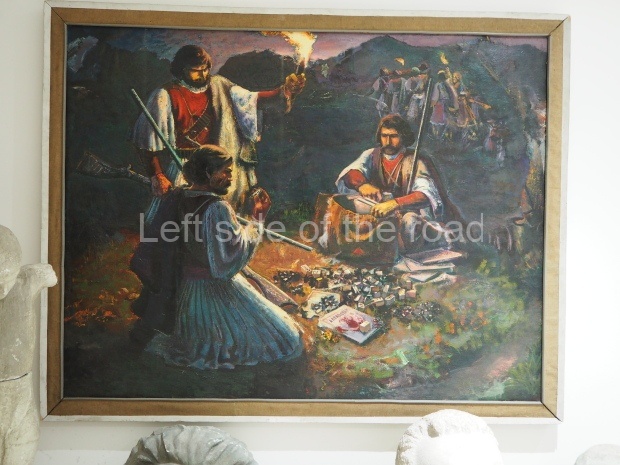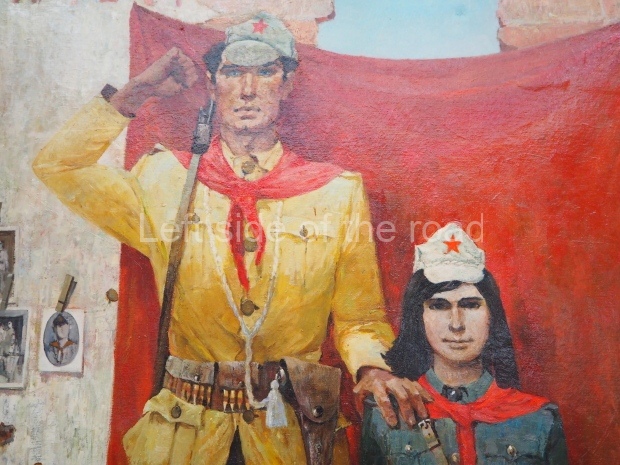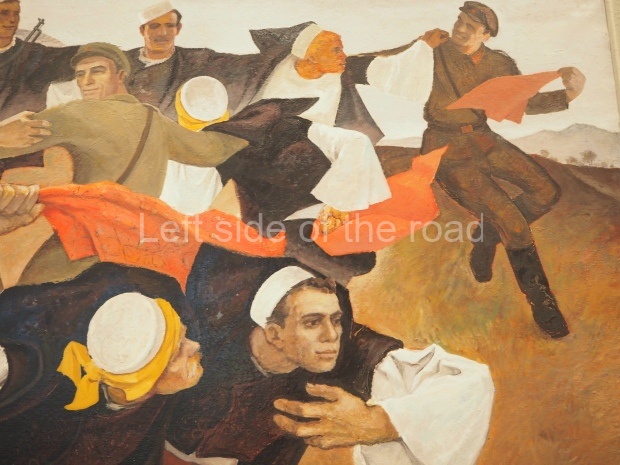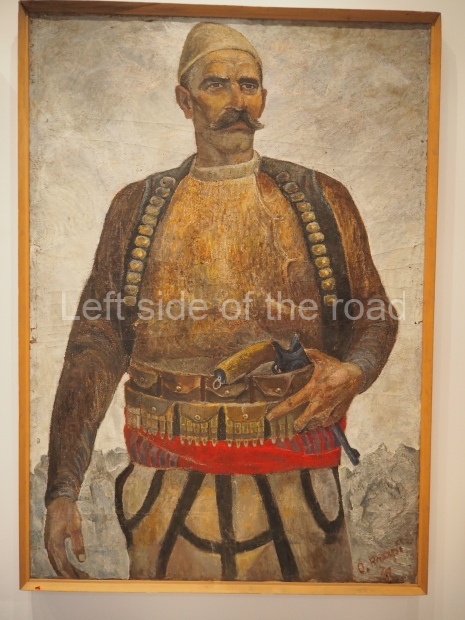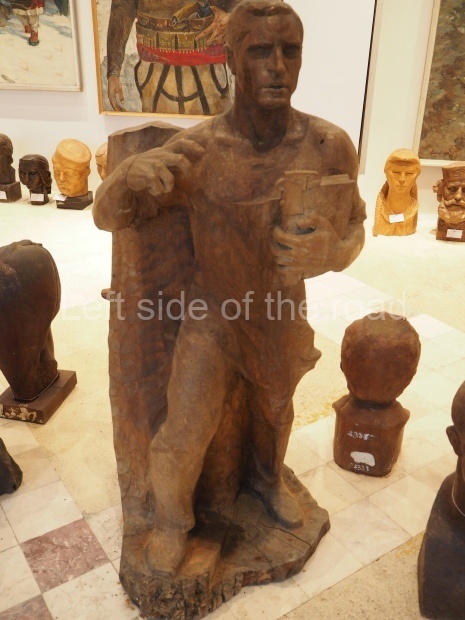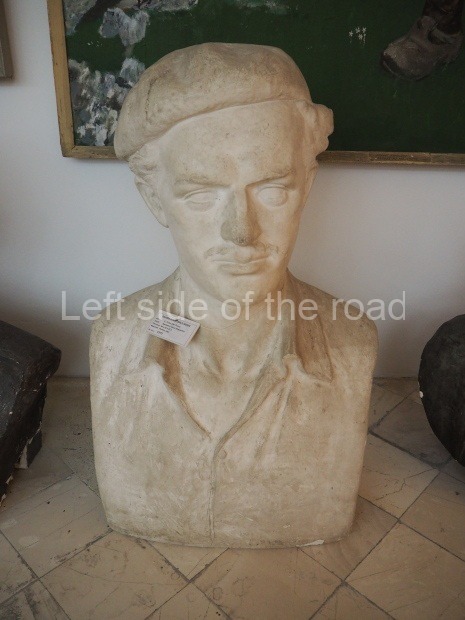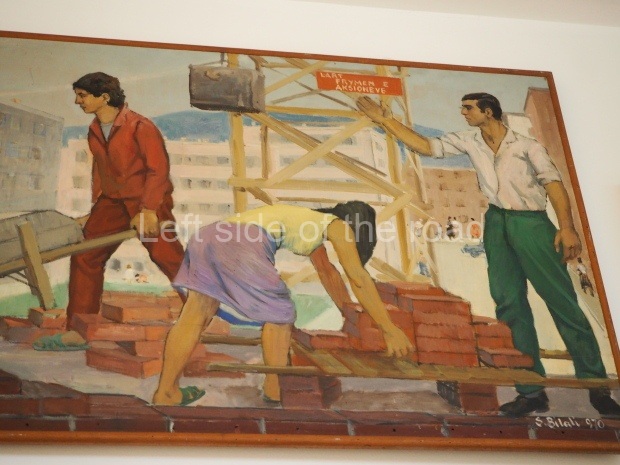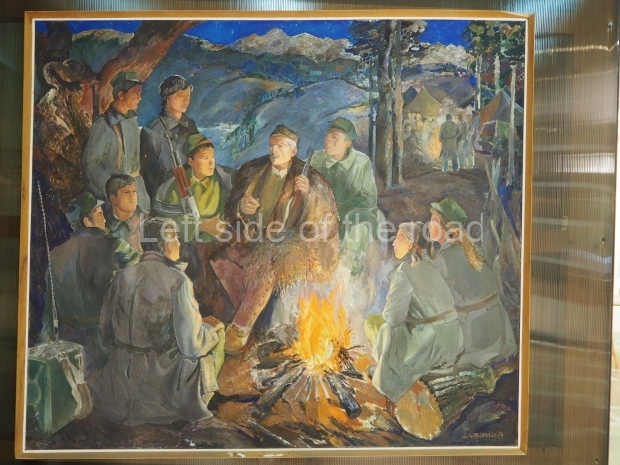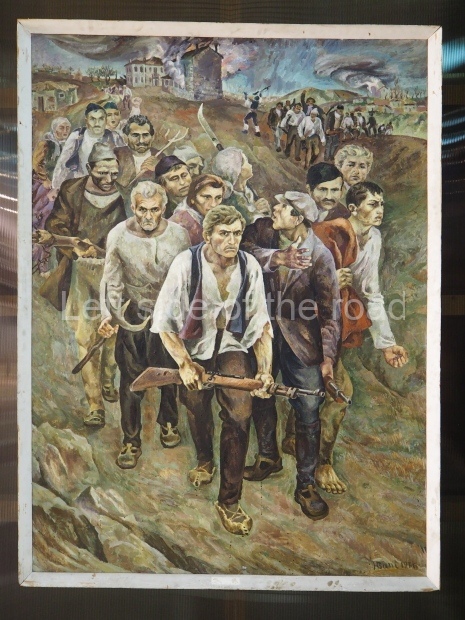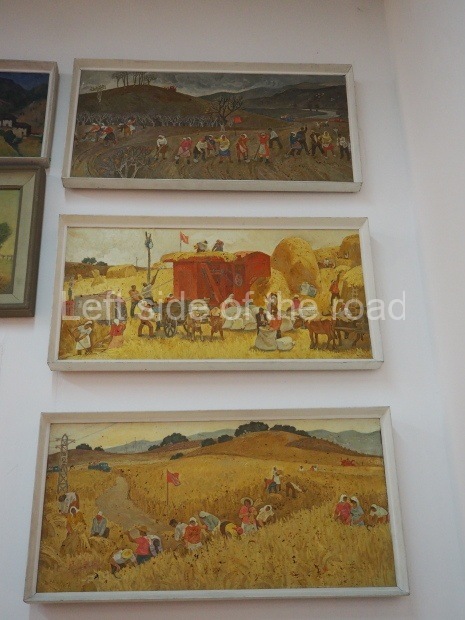
Myrteza Fushekati – Before the demonstration
More on Albania ……
View of the world
Ukraine – what you’re not told
The reproduction of this article is part of an ongoing, occasional series of arguments in support of the Cultural Revolution in the People’s Socialist Republic of Albania from the late 1960s through the 1970s. A previous article was an excerpt from a report by Enver Hoxha.
The Socialist Cultural Revolution and the People’s National Culture
by Professor Zija Xholi
The creation of a new culture, the spreading of it among the broad masses, the revolutionary ideological formation of the working people, is one of the most fundamental tasks of the construction of socialism and, at the same time, one of the greatest achievements following the people’s revolution.
More than three decades have passed since the day when our people, led by the Party of Labour of Albania, embarked on the road of the cultural revolution – sufficient time to draw up some conclusions and to discover some of its distinctive characteristics.
The first characteristic of our cultural revolution, that which immediately strikes the eye from analysis of the factors which have conditioned its success, is that it began and developed as a consequence of the socialist revolution and the dictatorship of the proletariat led by the Communist Party.
Second, a characteristic of the cultural revolution, one brilliant result of it, is the free participation, in ever growing proportions of the broad masses of the people in the frontal progress of technology, science, art and culture in general. The creative capacities, the talents of the people, once hampered and stifled, are now able to express themselves and develop freely. Through their efforts and talent, the masses have become the decisive factor of the cultural revolution which is taking place in our country.
The ultimate reason for the unprecedented extension of the decisive role of the masses in the development of culture too, should be sought in the elimination of oppression and the exploitation of man by man, as well as in the place the masses occupy in the system of socialist material production, where they are not only the decisive productive force but also the decisive responsible, organizing and directing force as well. Socialism stripped work of its drudgery once and for all and restored to it all its intrinsic moral and intellectual values. The creative activity in the most varied fields of art, in song, dance, theatre, variety, in which thousands of workers and peasants, young men and young women take part, most of them without training in art schools is evidence of the great art latent in the bosom of the people, of the marvellous artistic talents of our people which were waiting for the moment when they could burst free and pour out in a torrent.
At all times our people have been creative and they continue to create today, but in the conditions of the socialist construction, their creative works are radically different from those of the past. Freed from oppression and exploitation, today, our people enjoy ever increasing well-being, have more free time at their disposal, and this allows them to concern themselves more and more with the problems of culture. The principle that before you can philosophize you must have food and drink, is of special importance in this field. Besides this, the participation of the masses in cultural work enjoys the aid, support and organization of many specialized institutions and of the whole society in general. And finally, our culture is no longer created by masses who had never been inside a school but by masses who have an ever higher educational and cultural’ level. This brings about that, with the transition to socialism, the decisive creative role of the masses in the field of culture increases and manifests itself in broad proportions. This means that in socialism the people’s culture is raised to new, high levels never seen before.
Third, another characteristic of the cultural revolution, another of its brilliant results, is the elimination of the cultural monopoly of the feudal-bourgeoisie, the changing of culture from the monopoly of a select minority, a limited elite, into the property of the broad masses. It is a fact that in antagonistic society the working masses have developed themselves intellectually mainly through their work and productive activity, while they have received just as much schooling, theory and science as the exploiting ruling classes have needed to exploit them more thoroughly. The socialist revolution and the dictatorship of the proletariat put an end to this situation once and for all. Education, theory and science have been returned to the working masses, to those who, with their efforts and talents, keep socialist society alive and carry it forward in all directions.
The years of our People’s State Power have been years of a real offensive by an entire people, young and old, men and women to master technology, to conquer the bastions of knowledge, of arts and science, to turn our whole life into culture. The stages of the ceaseless march towards culture, expressions of its successes are the total elimination of illiteracy, the compulsory eight-year schooling, the abolition of religious teaching, the creation of higher education, the flowering of art in all its variety, song and dance, painting and sculpture, comedy and drama. The educational and cultural reality of our society is expressed by the following significant figures: whereas in 1938, the total number of pupils and students attending school was 56,000, today that number has risen to 700,000 which means that one-third of the population attend school.
Fourth, the cultural revolution does not aim at the educational and intellectual development or at the rejuvenation and progress of the life of only a minority of the population, of only one social stratum, to the detriment of the broad masses, or of only the cities to the detriment of the countryside. Its task is to ensure that education becomes the property of all, that the cultured life is taken up by everybody and enters every household, not only in the cities but also in the countryside, without creating special positions and privileges for any individual or stratum, a task which it is accomplishing better and better every day.
But the most fundamental characteristic of our cultural revolution, that which sets the tone for our education and culture and which marks a real revolution in them is their socialist content, their frankly Marxist- Leninist socialist tendentiousness.
Our socialist culture, like every other culture closely linked with classes and in the service of their struggle, cannot stand aloof from ideology and not be inspired by ideology. There is not, and never can be, any culture standing aloof from or above ideology. Culture for culture’s sake, pure culture, is simply a fraud which the bourgeoisie and the revisionists perpetrate in order to create that culture which best serves their selfish class interests. Therefore, the whole problem is not that culture should be divorced from ideology, for this is impossible, but that it must be based on the revolutionary ideology of the proletariat in opposition to the reactionary ideology of the bourgeoisie.
The Party of Labour of Albania strives to have no culture which is divorced from the mission of developing and perfecting the revolutionary ideological outlook of the working people and, on the other hand, to have no revolutionary ideological formation which is not based on the broadest and most accurate knowledge. This makes the cultural revolution part and parcel of the ideological revolution, makes them two sides of a single process, the process of the revolutionary education and re-education of the working people, the process of the formation of the new man of socialist society.
Naturally, the creation of the new socialist culture, the revolutionary ideological formation, immediately raised the problem of what to do about classical culture, the world culture heritage and, first and foremost, the culture of our own people, with their customs and traditions.
In the cultural revolution, the Party of Labour of Albania has faithfully followed the teachings of Lenin, who stressed that one can emerge from darkness only by utilizing the whole treasury of world culture, all the valuable achievements which mankind has created under the yoke of capitalist society, of the society of landlords and of bureaucrats. From its very first steps, our culture has striven consistently to take from world culture whatever is revolutionary and scientifically sound, whatever responds best to the requirements of the stage of development of our country. Consistently adhering to this orientation, our culture has maintained and continues to maintain a critical, stand towards world culture, taking from it only its scientific, materialist, democratic and popular ideas, and discarding its clerical, mystical idealist ideas, and any others which implant lack of confidence in life and man, which look down upon work and the working masses, which justify oppression, exploitation and obscurantism.
No matter how valuable the world cultural heritage may be, it is insufficient for the education and formation of the man of our society. In this, the first place is, and should be, occupied by the cultural heritage and traditions of our own people. In culture, too, the communists combine, the most consistent internationalism (they prize the progressive culture created by every people) with the purest of patriotism (they are the most ardent champions of the culture and traditions of their own people).
In place of the nihilist policy of denigration towards the culture and tradition of our people pursued by the reactionary ruling classes of the old, overthrown feudal-bourgeois order, the working class and its Marxist-Leninist Party have worked out a new policy, the policy of defending, preserving, and further enriching the popular culture and the first traditions of our people. At the foundation of this policy and the rich experience of our people in this field, are the Marxist-Leninist ideas of comrade Enver Hoxha, that our people have created a culture and art of a clear national character which constitutes a priceless heritage which must be kept pure and developed further; that the new socialist culture is linked with a thousand threads with the culture of the people; that the revolutionary content of the new socialist culture has not dropped like manna from heaven, nor has it been brought in a suitcase from abroad, but it has been inherited from our forefathers, its foundations are deep in the people; that the study of the cultural traditions of our people is not done simply for the purpose of knowing the past of our people but also for the purpose of learning from the experience of our forefathers in conformity with the new conditions and requirements of our socialist society; and finally, that a critical class attitude should be maintained towards the culture and traditions of our people from the past, on the basis of the idea that every creative work of every epoch has been tendentious, is inspired by the ideas of the time, bears the brand of the class struggle and of the ideology of its own time, therefore, it cannot be taken as a whole and inserted into the new life and culture just as it is.
Socialist culture is not something in itself, created apart from the people and handed to them from outside, but a culture indissolubly linked with them, which responds to their requirements, their spirit, and their traditions. There is no socialist culture in general, no culture created by someone which can be served up ready to any nation which is building socialism, but a socialist culture of a given nation which gives it its richness and this does not consist simply of its form, but enters deep into the content of this culture. Socialist culture, taken in its broadest sense, has emerged and developed in close collaboration with the culture of the people. In its essence it is a socialist and a national culture.
Guided by the teachings of comrade Enver Hoxha, our socialist culture is proving in practice that proletarian partisanship, which requires that every cultural manifestation must be viewed from the angle of the interests of the working class and analyzed from the standpoint of Marxist-Leninist ideology, and the national tradition, which requires that everything good and valuable, everything close to the aspirations of the workers, created by the people in the past, must be preserved, far from opposing each other, are, on the contrary complementary arid dialectically linked with each other. Our socialist culture is enriched by the great artistic, ideo-philosophic values which our people have brought to culture, while through the socialist culture, the rational tradition is cleansed of negative elements which may have penetrated it under the influence of negative economic and social factors of the past, and is further enriched with the new experience which has emerged under socialism.
Our concern to discover, uphold and evaluate the best traditions of one’s own people’s culture also stems from a political demand, from the demand to ensure the free development of the people, which is the first premise of any genuine socialist construction. The attempts, which the two super-powers are making today in one way or another, to impose their own language, as allegedly the best language, their own culture, as allegedly the richest culture, their pretensions that culture today is moving towards its ‘internationalization’, towards the disappearance of specific cultures, implying the Americanization or Russification of the cultures of the other peoples, are in essence, expressions of the national egotism and great state chauvinism of the two super-powers, their favorite means for the conquest of the peoples and establishing their hegemony. Therefore, under these circumstances, faced with the imperialist designs of the two superpowers, the revolutionary Leninist principle must be stressed and applied that for the life and existence of each nation, political vigilance and ensuring its defence from any armed aggression and the preservation of its cultural identity and mother tongue are equally important. If a people loses its cultural physiognomy, if it does not hold on to its traditions, if it allows its mother tongue to be forgotten, it has ceased to be a nation in itself.
If we oppose the ideological and cultural aggression of the bourgeois-revisionist world, we do this in the name of freedom and independence, in the name of the correct and rapid development of our socialist culture, but by no means in the name of national exclusiveness. National narrowness and xenophobia are alien to our revolutionary ideology and our new culture. Our socialist culture has utilized and continues to utilize the progressive culture of all peoples, but not by sacrificing our mother tongue, the best traditions, and the cultural heritage of our own people, but while emphasizing and prizing them. With this heritage our people will take their place in world culture. Any other assimilation of the culture of one people by another, made to the detriment of the national language and finest national traditions, under whatever name it is called, is, in reality, a chauvinist design to impose the domination and hegemony of one nation over other nations, whether they live within a multi-national state or are separated by national boundaries.
What does the traditional culture of the people, with which the new socialist culture is linked, represent? What has our nation contributed in the field of culture?
Our people came to power and to real freedom with a rich material, social and spiritual cultural heritage. In it are expressed the people’s capacity to live on, indomitable in any circumstances, no matter how difficult, their talent and inextinguishable desire for a free and independent life without oppression and exploitation. But the extremely difficult historical circumstances under which they had to fight for their very existence, the anti-national and anti-popular ideological pressure and influence of the invaders and the reactionary classes, on the background of the great backwardness and poverty, are also expressed in it. These circumstances make the culture we have inherited from the past a mixture of progressive and reactionary elements, with light and darkness. However, the progressive values exceed the non-progressive ones in force and breadth, the elements of light greatly predominate over those of darkness. It is the progressive values which give the culture of our people its characteristic tone. This distinctive characteristic of the culture of our people has its own explanation which is, as comrade Enver Hoxha stresses, ‘through the centuries, the people of our small country have always been guided by the progressive ideas of liberty and the defence of liberty, by the ideas of just wars against oppressors, against the rapacious imperialist ideologies of foreigners’.
Our people have been obliged to lead an intensive life in their struggle for existence and self-defense, have had to face up all sorts of events. Naturally they have had to act and think, to create a definite concept about many phenomena of nature and life, about griefs and joys. For well-known reasons they have not done this in writing, have not fixed it in books or treatises, but have formulated it by word of mouth, transmitting and enriching it from one district to another, from one generation to another for centuries on end. This has made up our wealth of folklore, which is our unwritten encyclopedia, a living testimony of the talent and wisdom of our people. The historian and philosopher, the anonymous writer and artist, speak collectively through hundreds of legends and songs of heroes, through thousands of aphorisms and proverbs, through thousands upon thousands of songs of valour and love, of work and exile, of weddings and deaths. This remains an immortal monument of the culture of our people, a source of learning and inspiration for the artist and the writer, for the philosopher and thinker of our own days, for the new socialist culture as a whole.
At the present time, when anti-communist ideology has swamped the book market and audiences in the bourgeois-revisionist world, when hideous fashions and decadent trends in art and literature are assailing the tastes of the youth and the masses from all sides, the reality of the new culture of our people assumes a special value and significance. By its existence and flowering it is showing that the present decadent and degenerate culture is not an inevitable evil from which no one can escape. Meanwhile, in its practice, our culture shows how the bourgeois revisionist ideological aggression can be coped with, how a culture in the service of the liberation of the working people from oppression and exploitation, a culture which will preserve the real values of the people and raise them to a higher level and oppose everything which degrades man morally, aesthetically and philosophically, can be created.
The national features, the national background of socialist culture, the appreciation of the cultural heritage created by our people, are that force which in culture facilitates and accelerates the cultural revolution, while in politics it helps the people get a better appreciation of their own value and strength, to cope better with any aggression from whatever direction it may come. Indeed, this is the most important function and the most profound meaning of every genuine culture – to help the people to recognise their own worth, to multiply their efforts in their struggle for a better and more just life, in their struggle for socialism and communism.
This article is reproduced from New Albania, No 3, 1977.
All emphasis is from the original.
Zija Xholi, Albanian philosopher. Member Academy of Science, Albanian Trade Union (member General Council 1967-1972, member Presidium 1972-1976, Chairman Culture Department 1977-1990), Albanian Philosophical Association (Chairman 1991).
More on Albania ……
View of the world
Ukraine – what you’re not told


